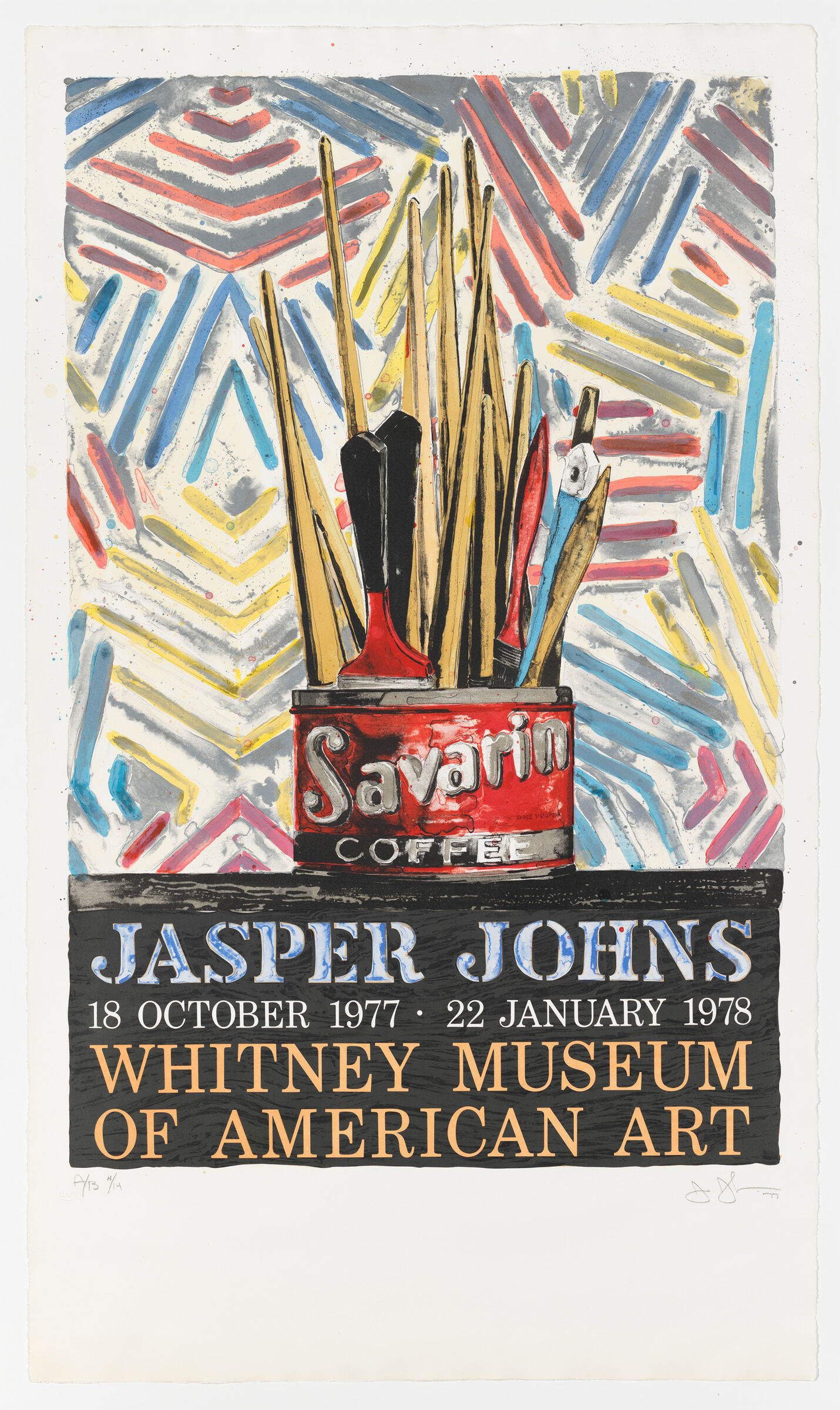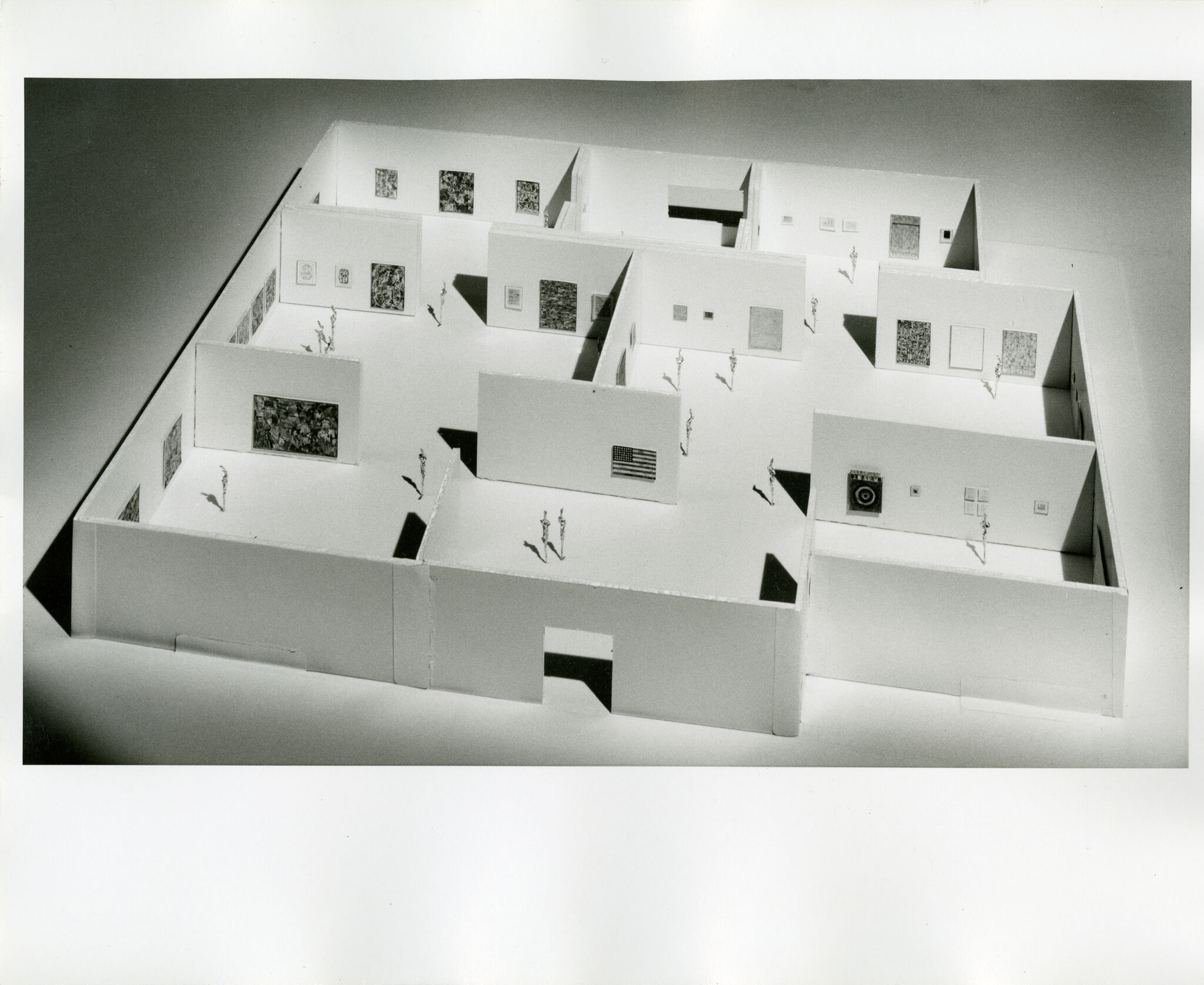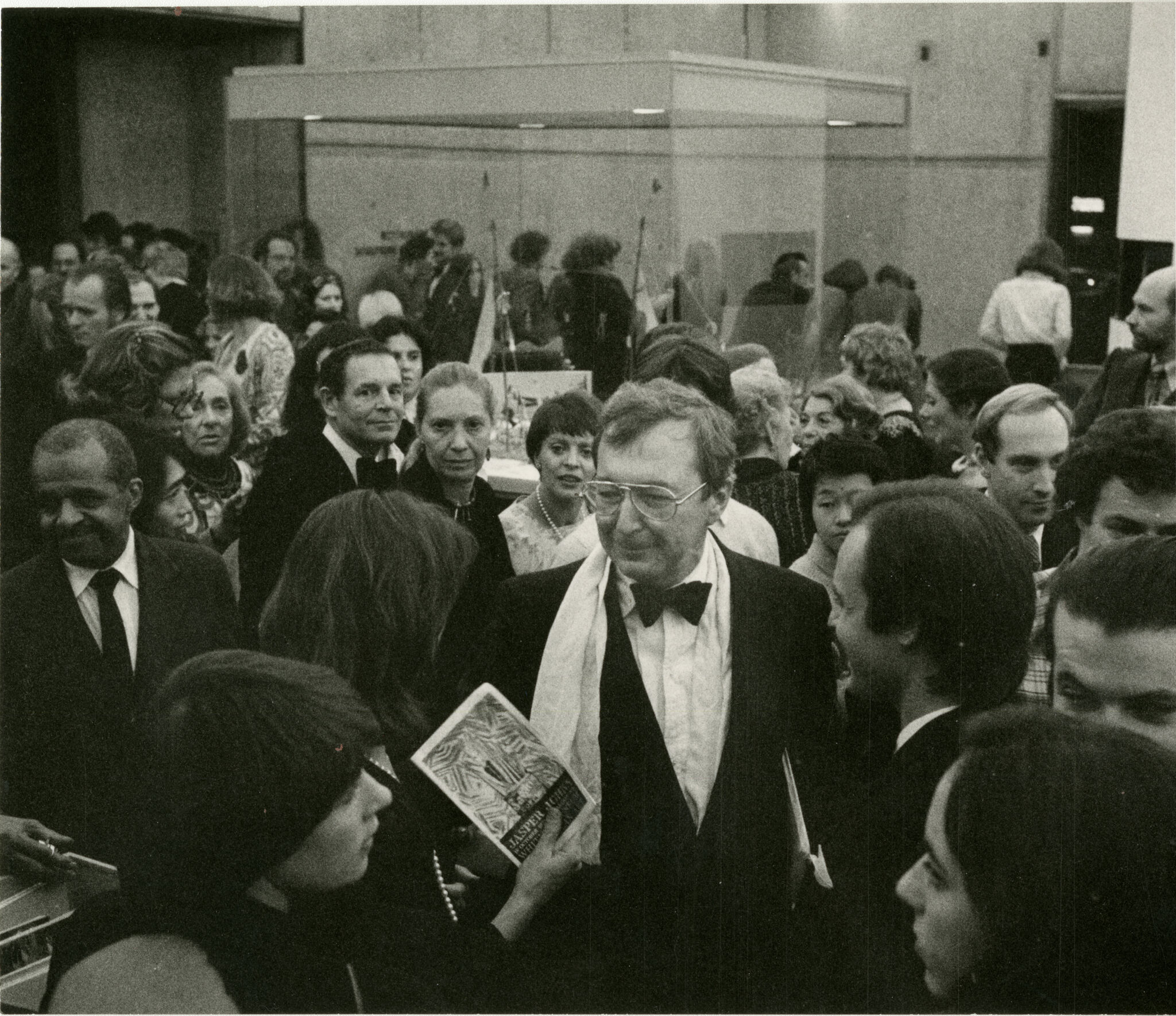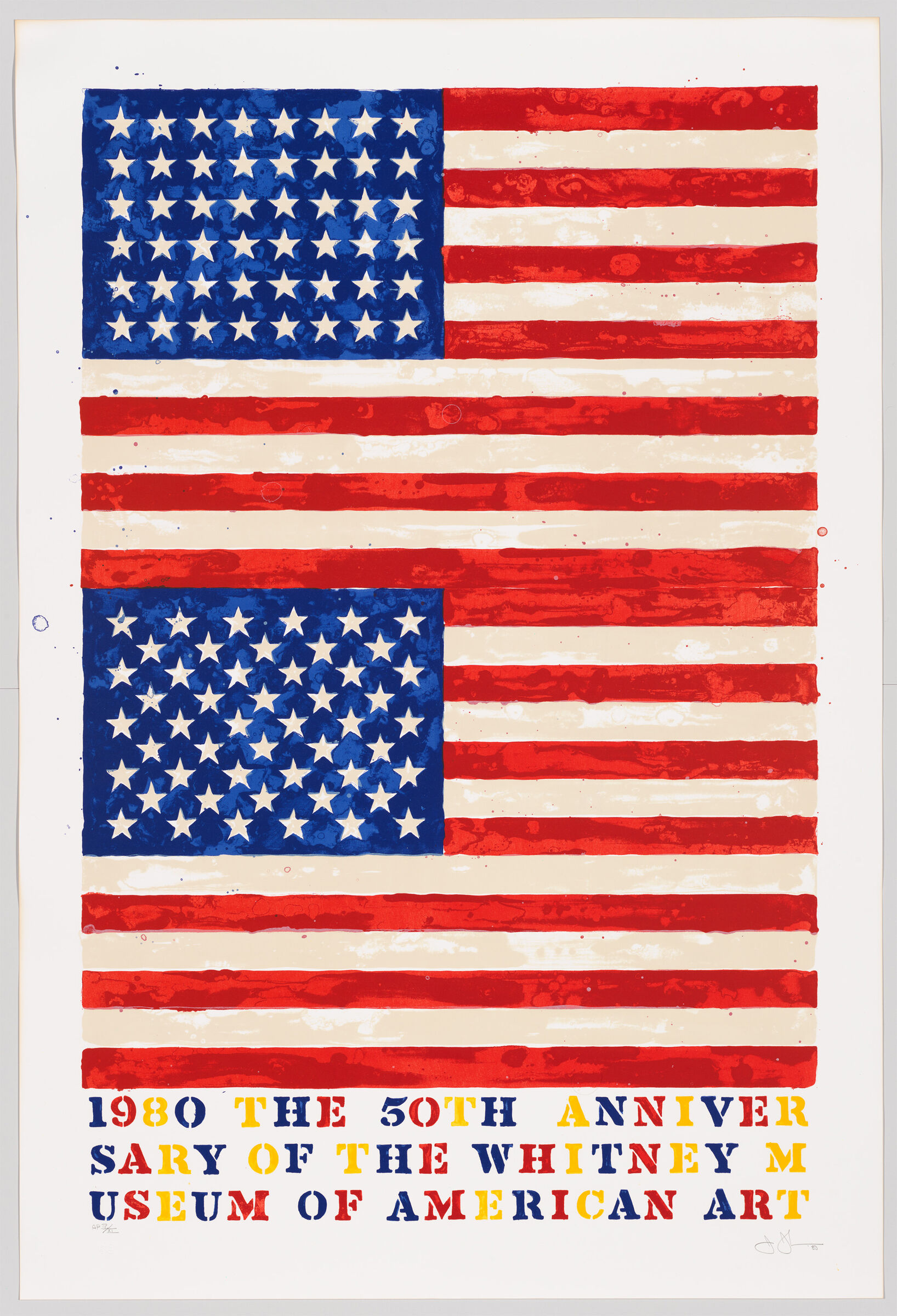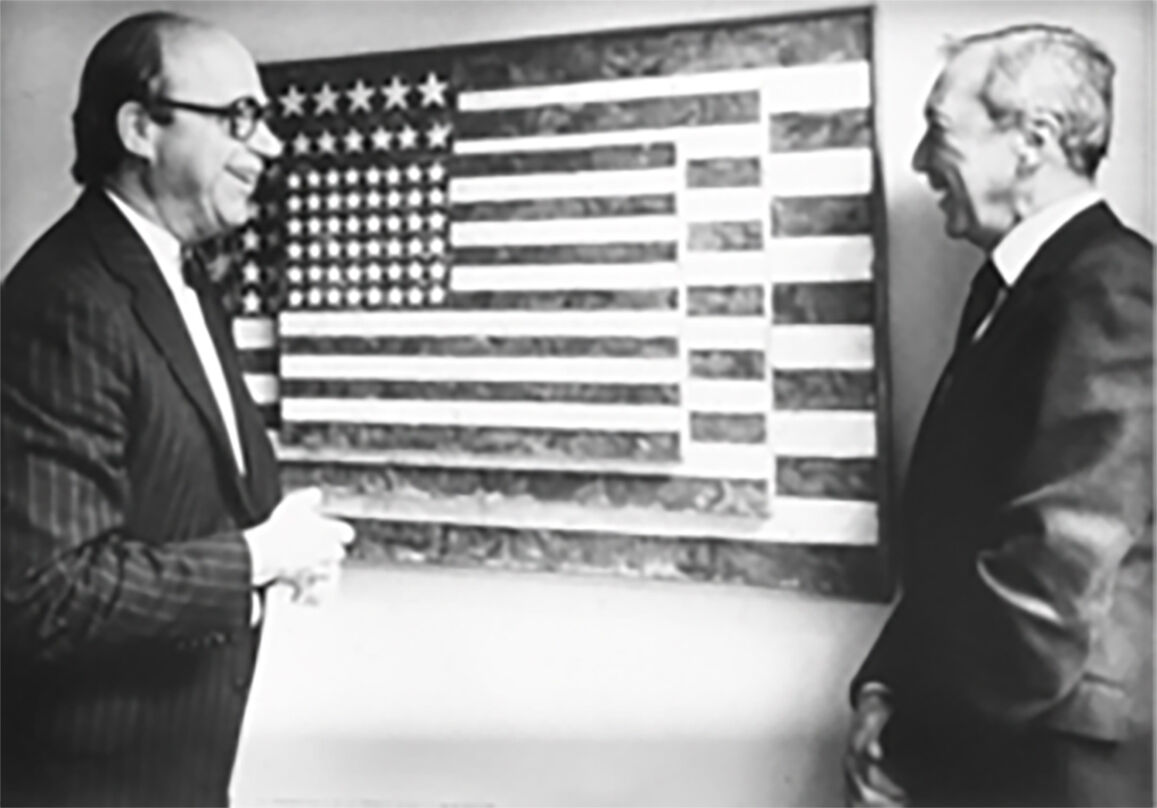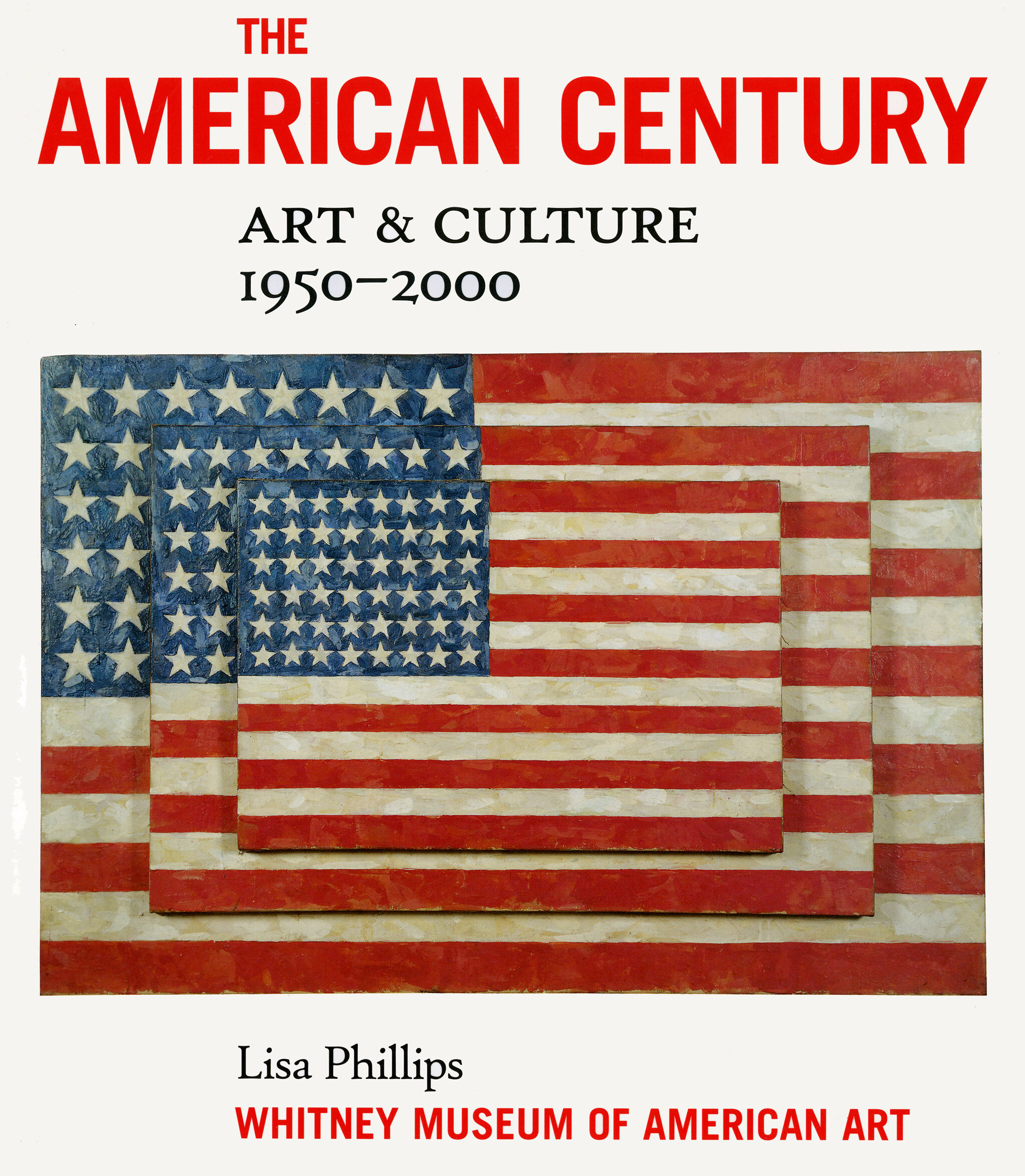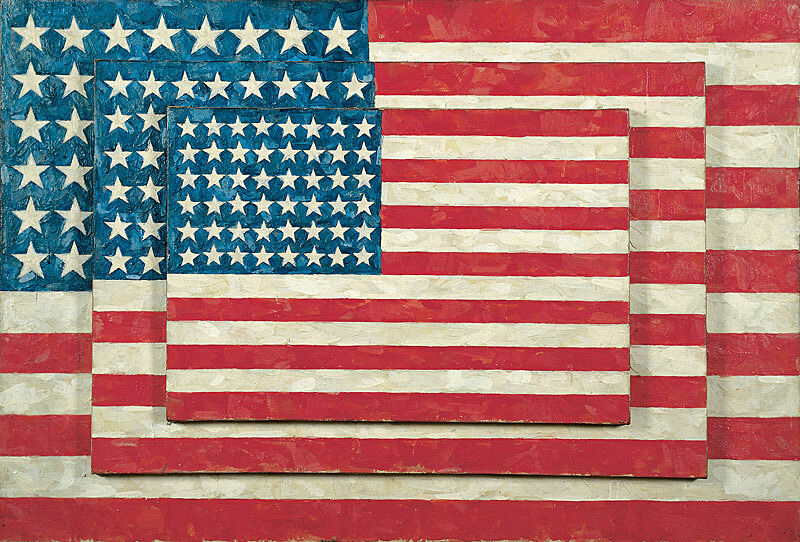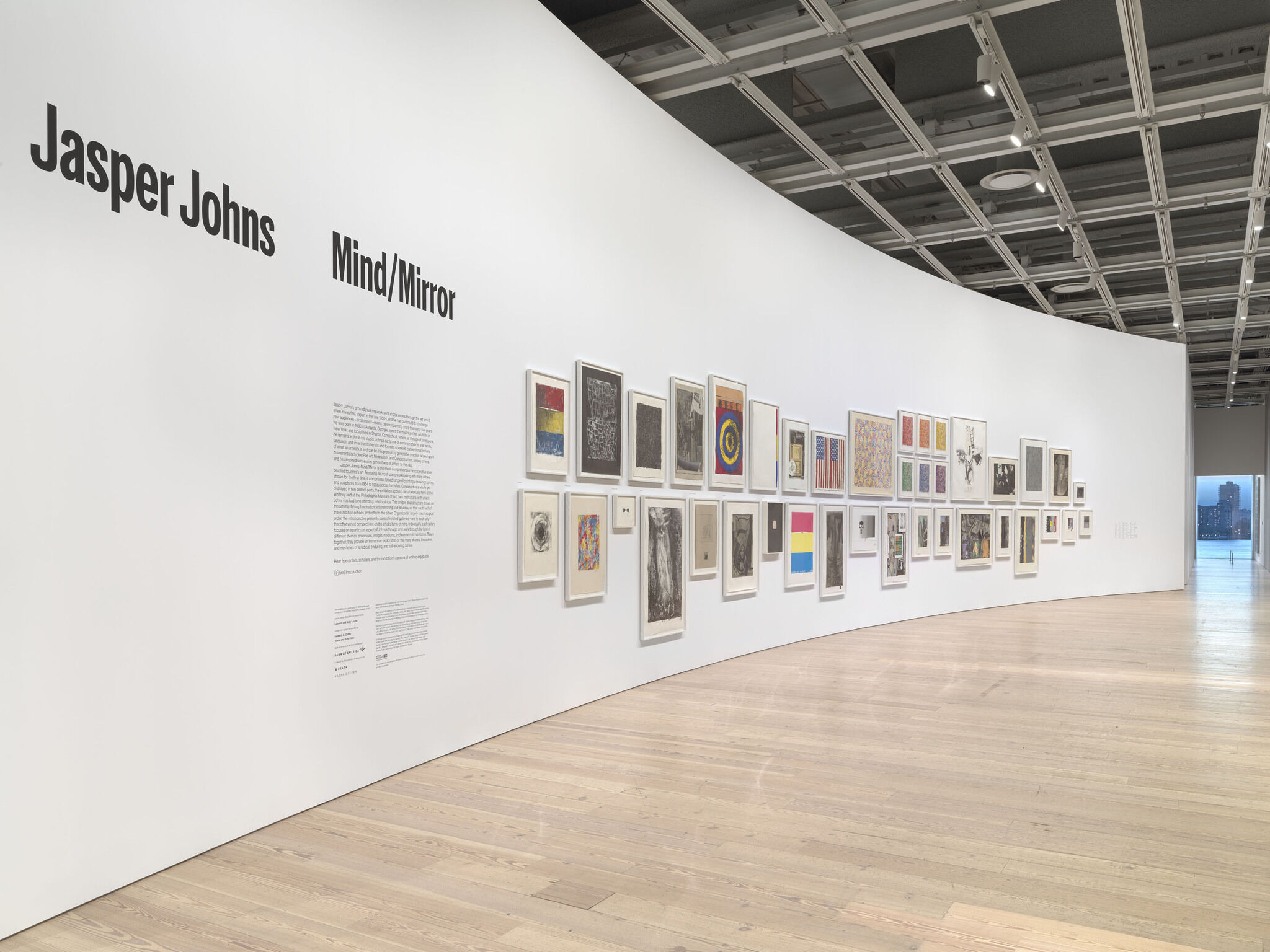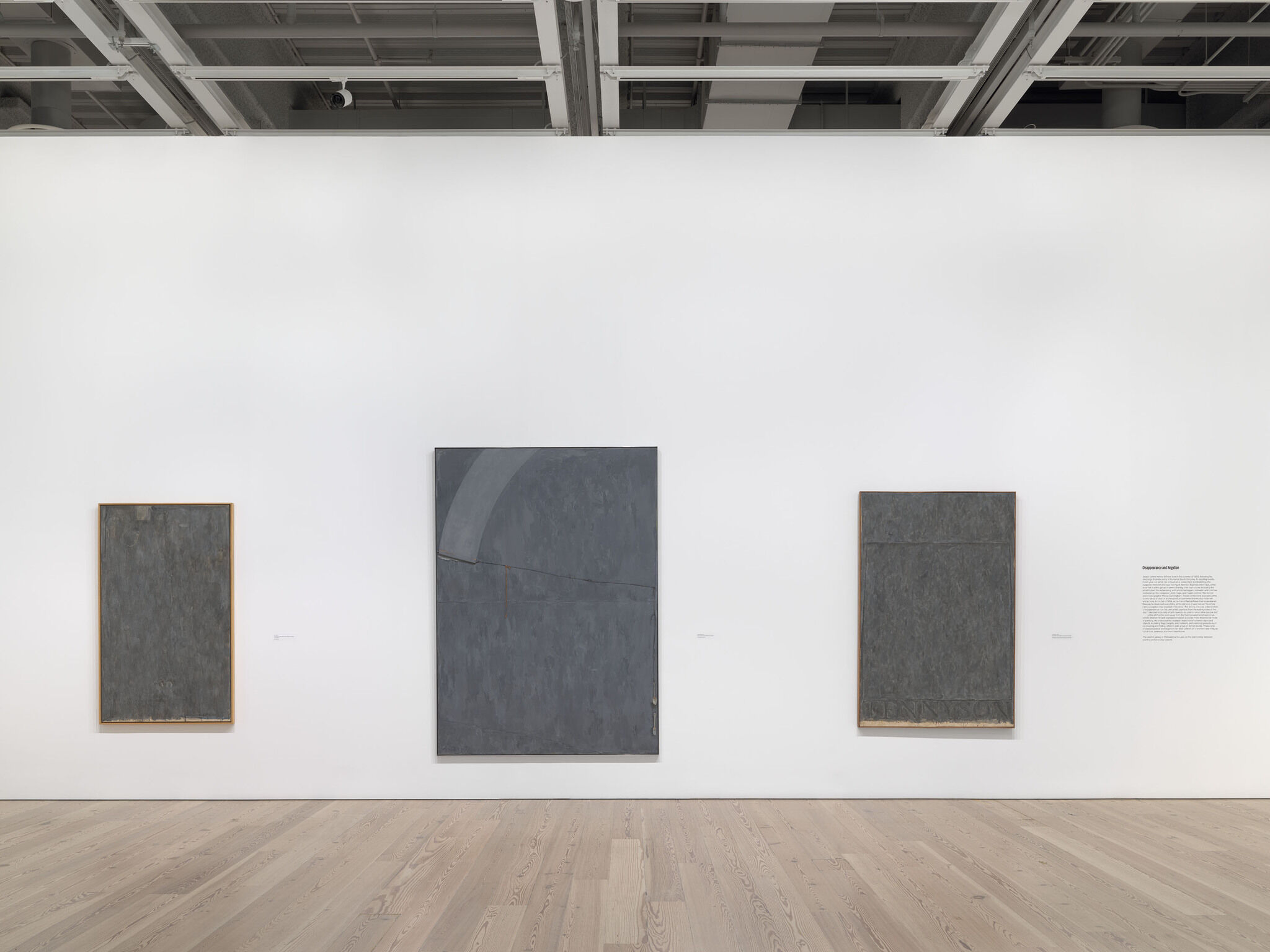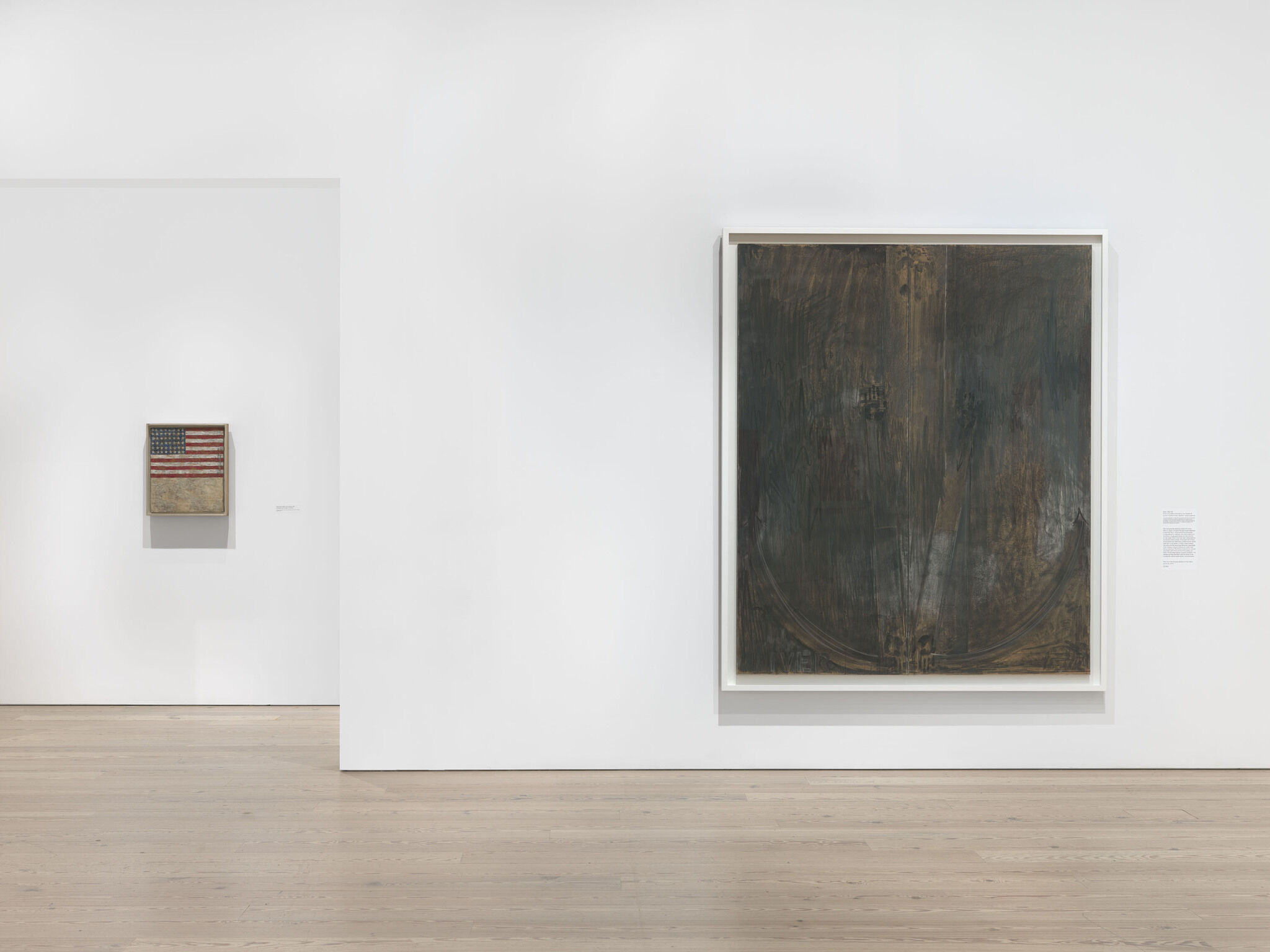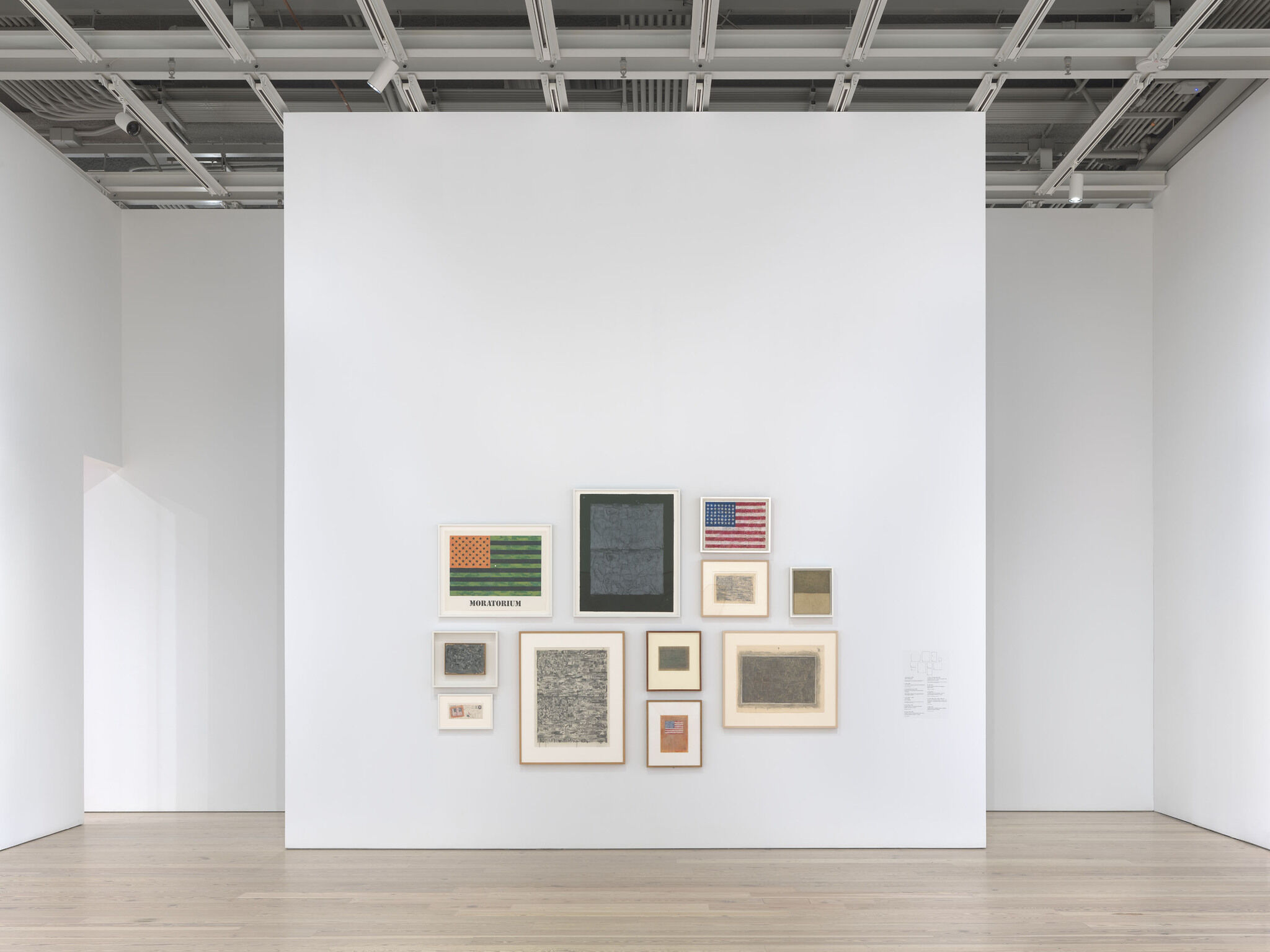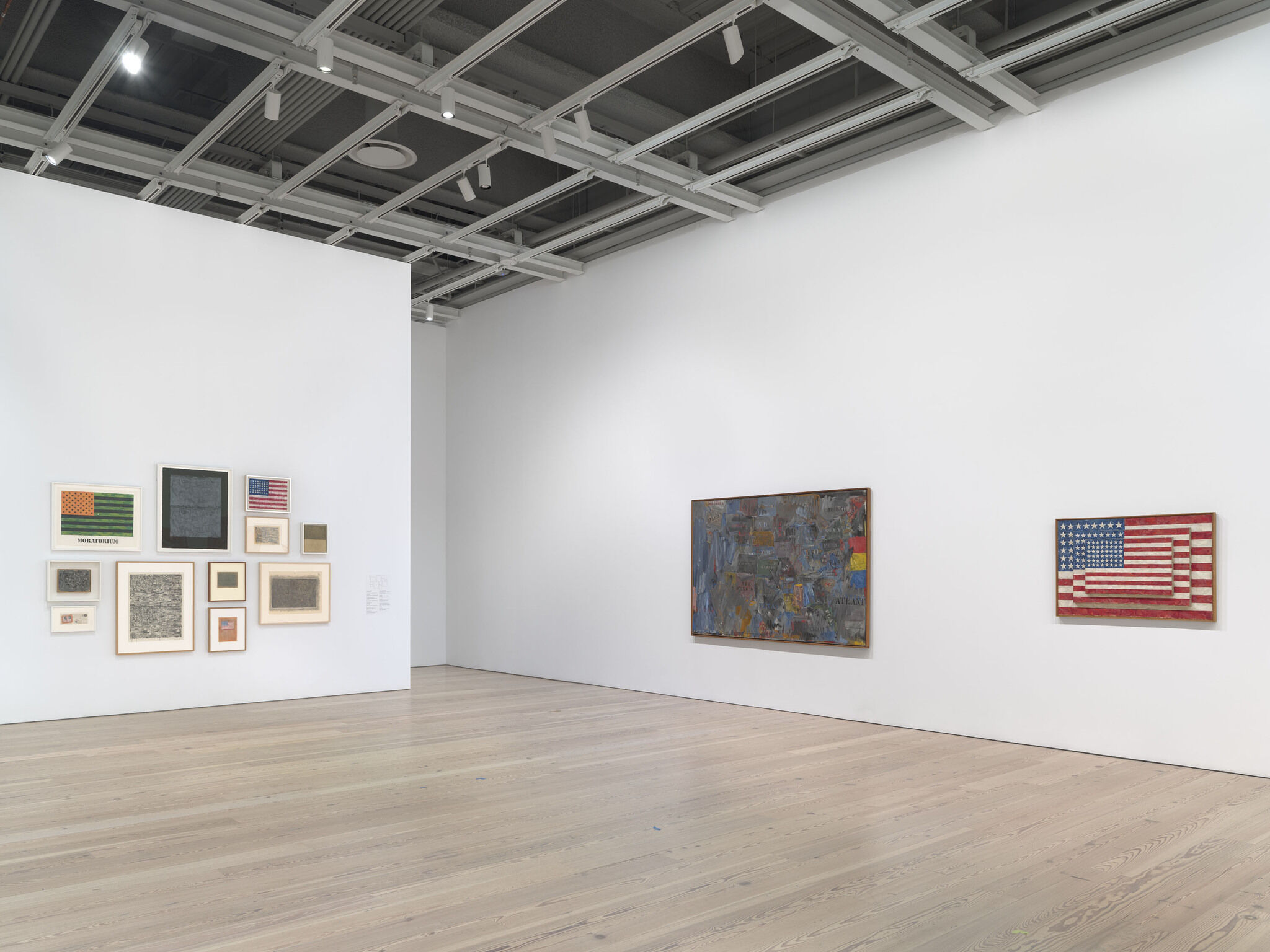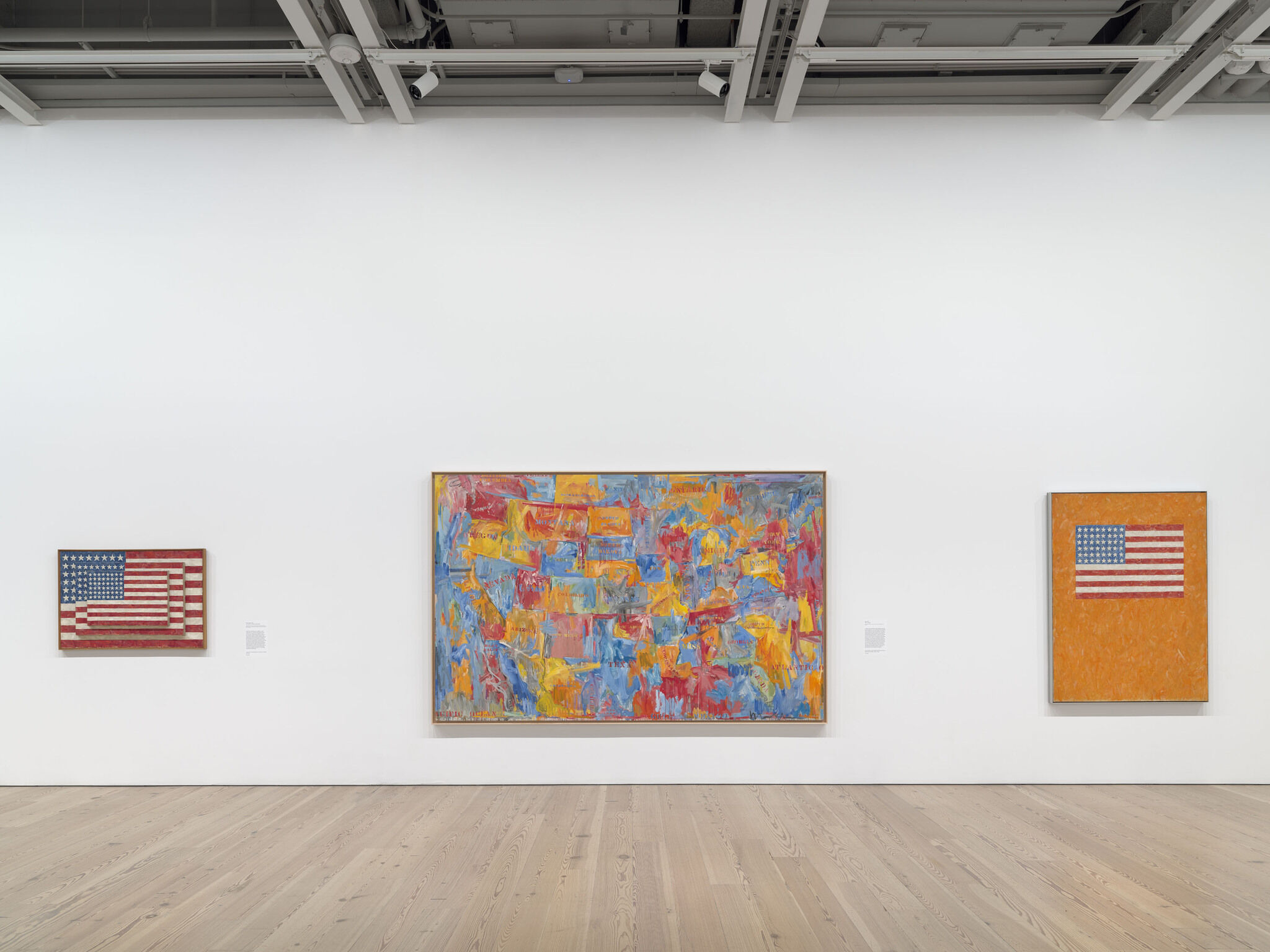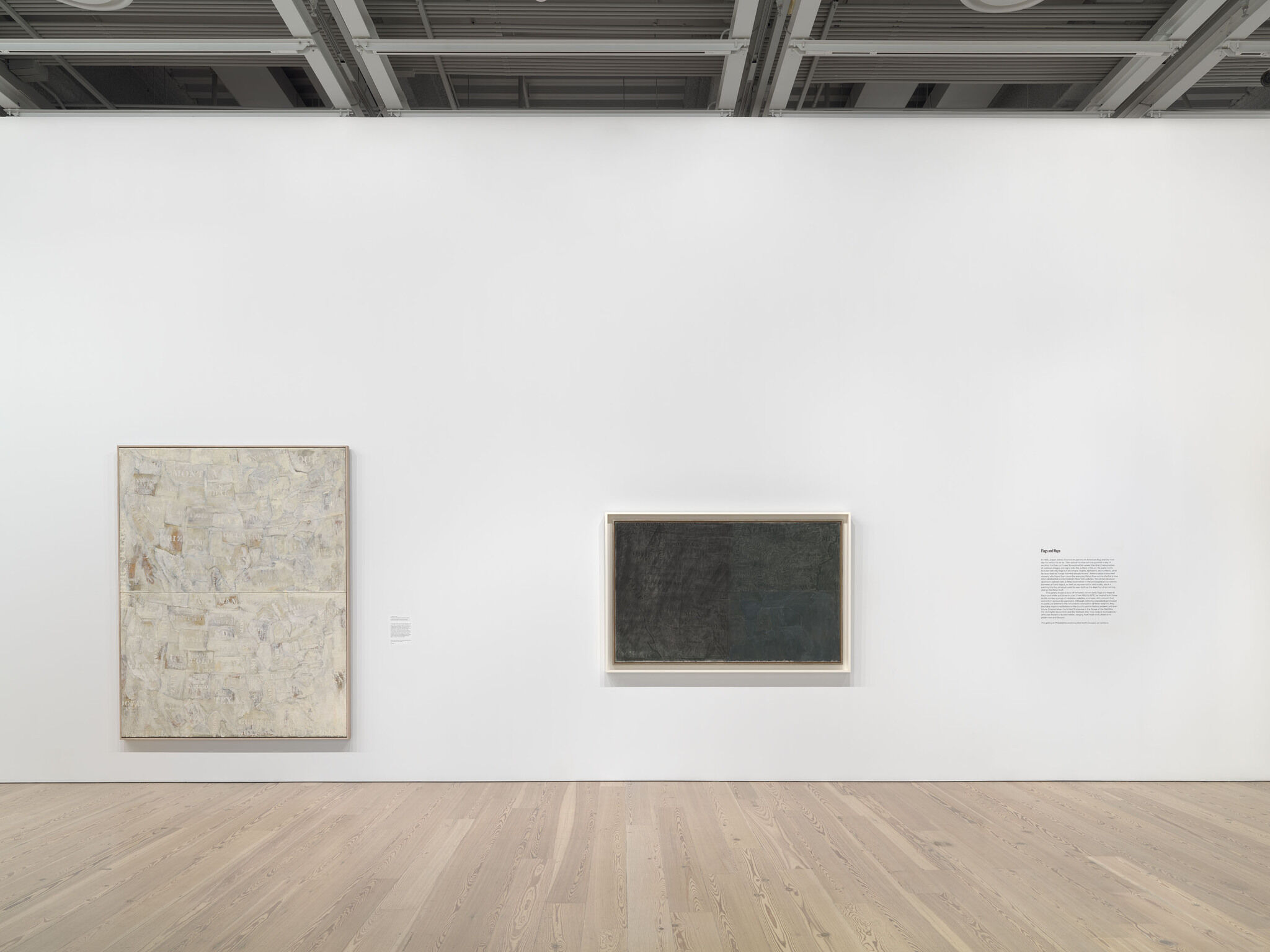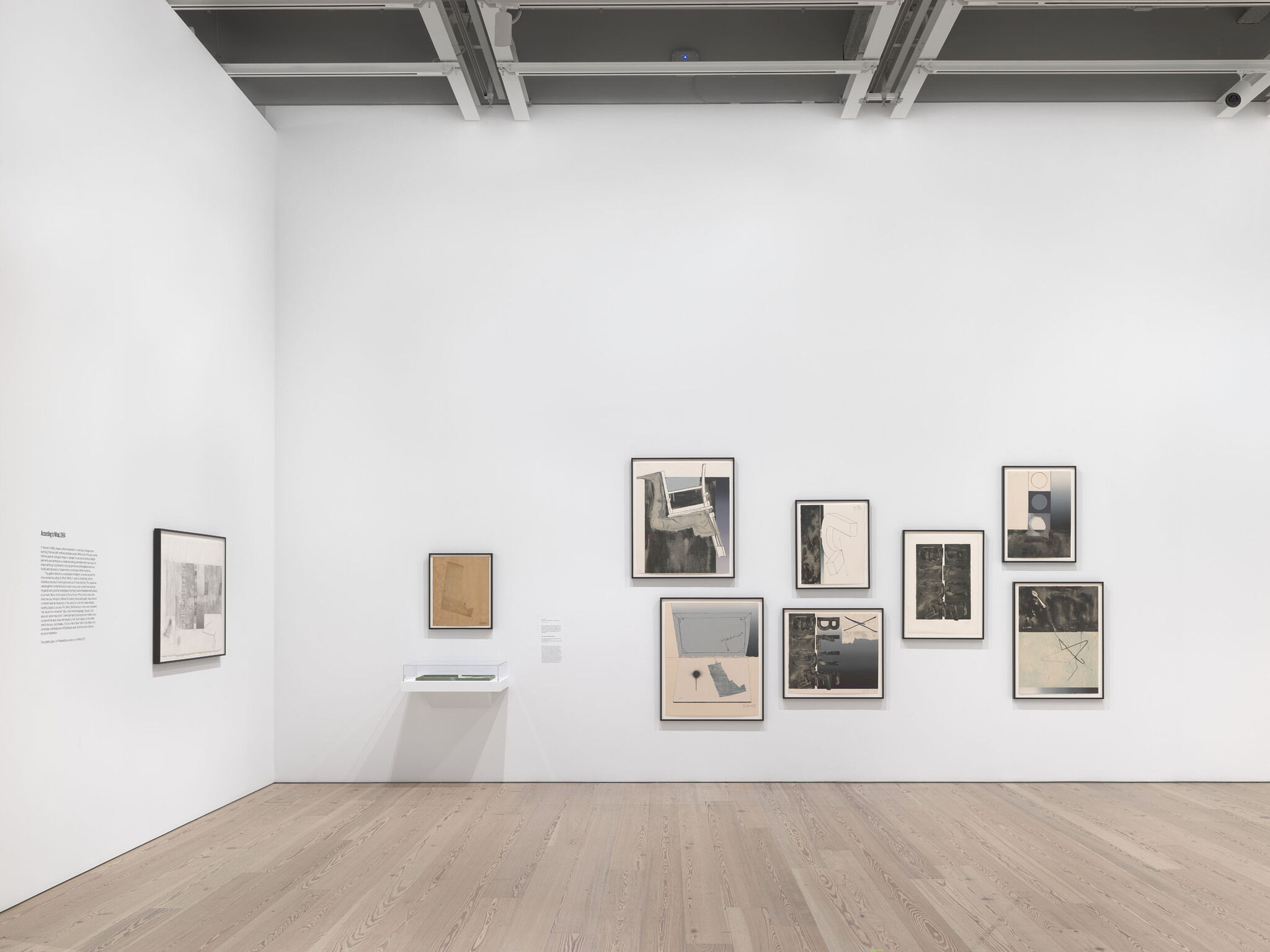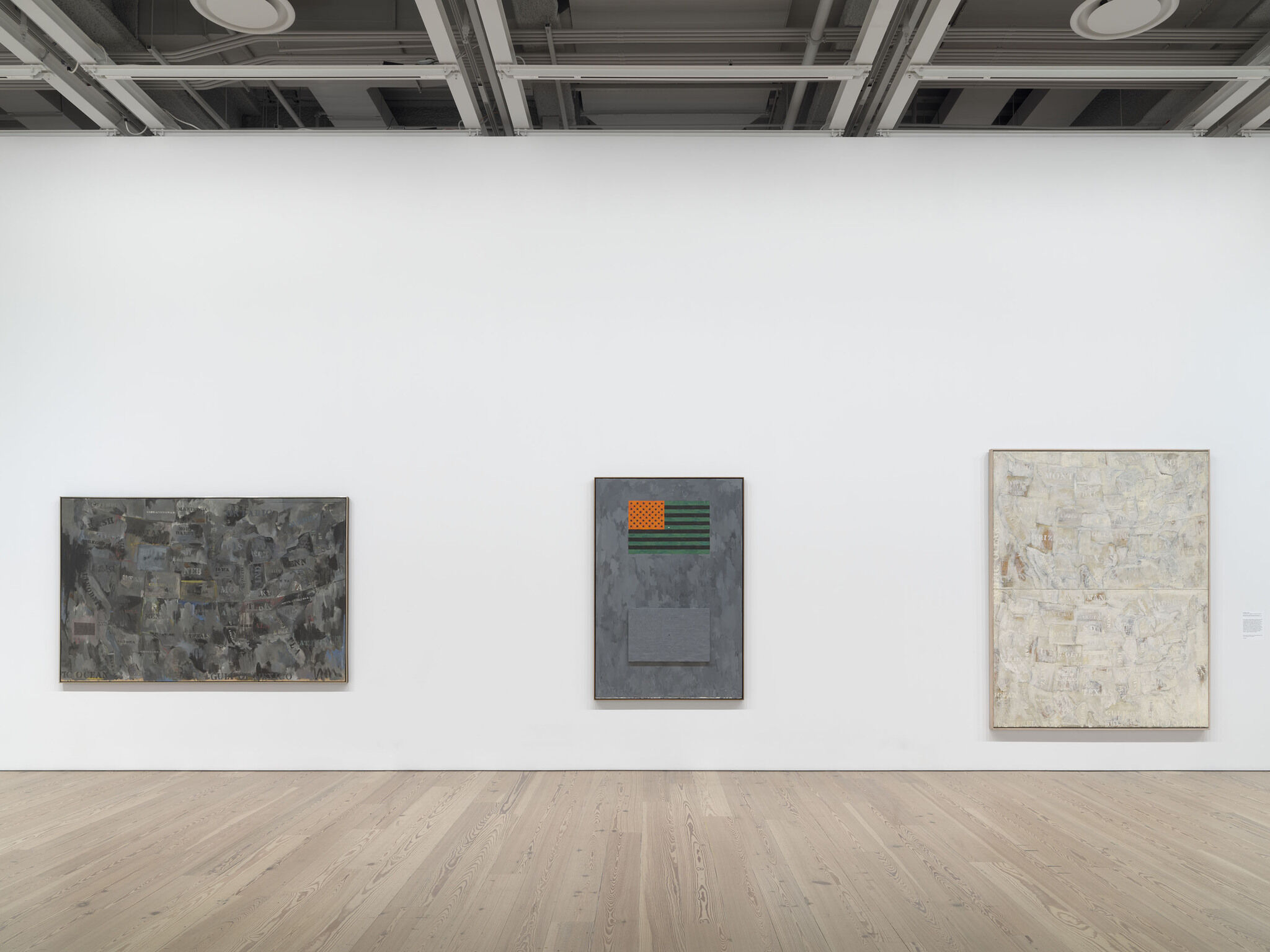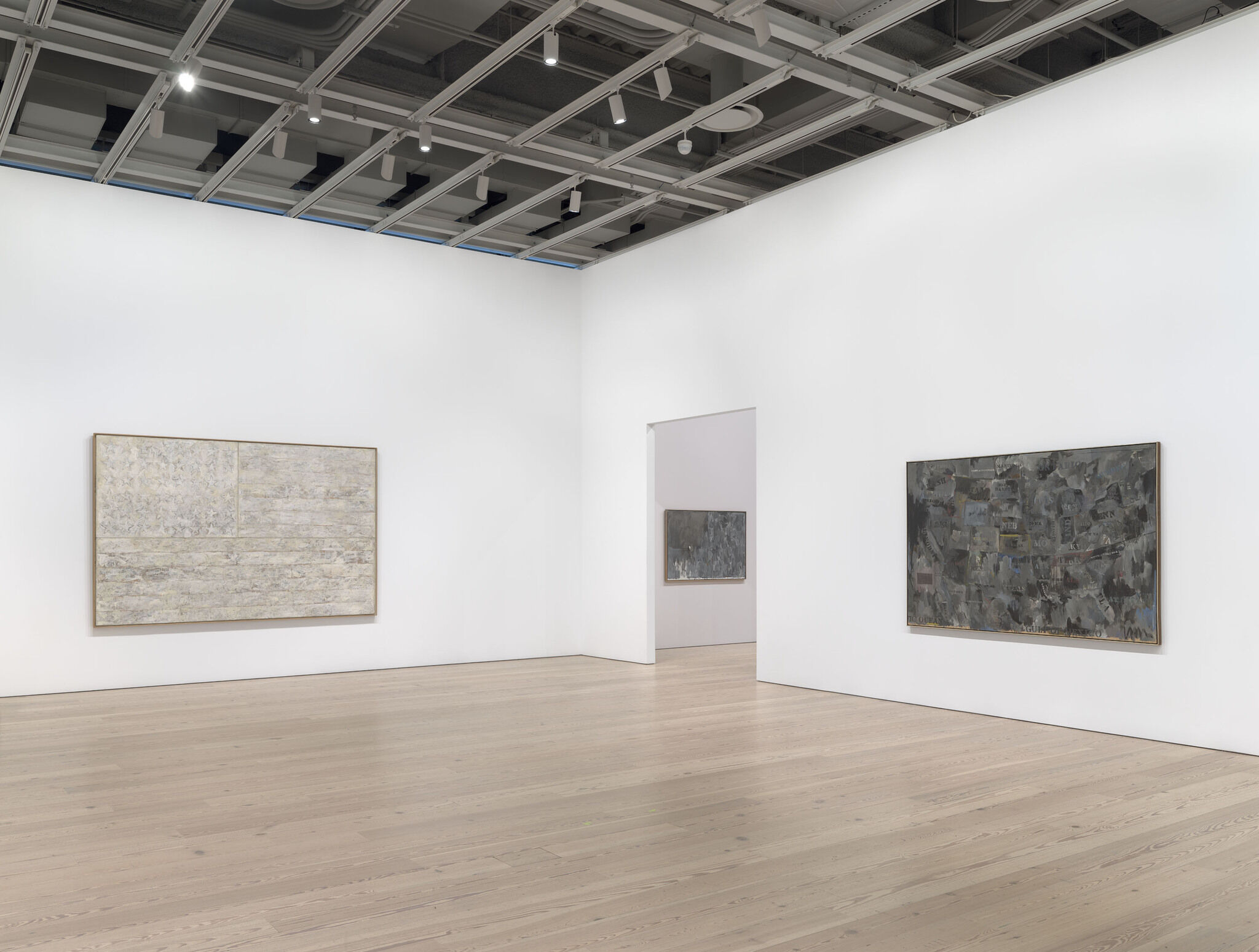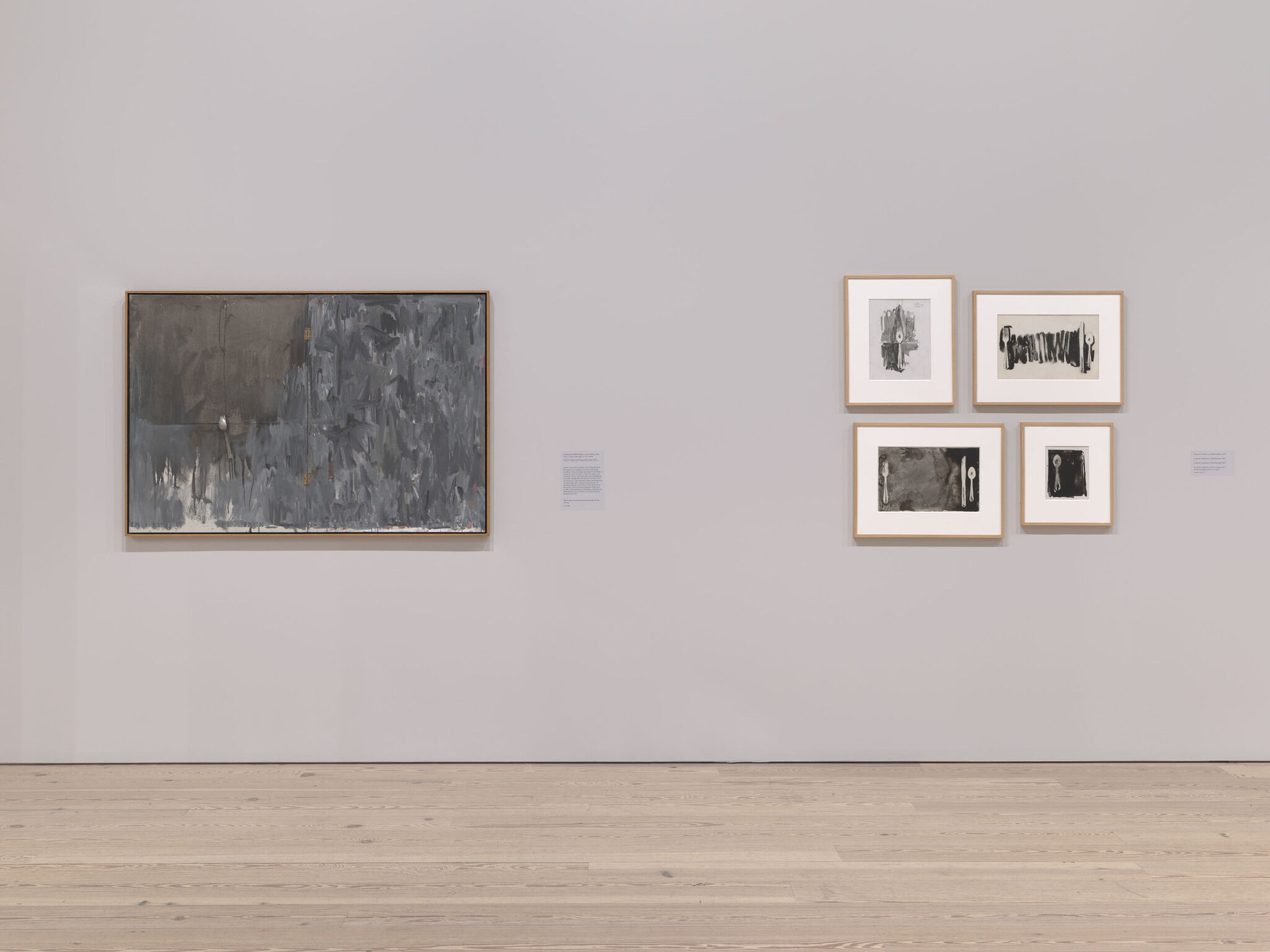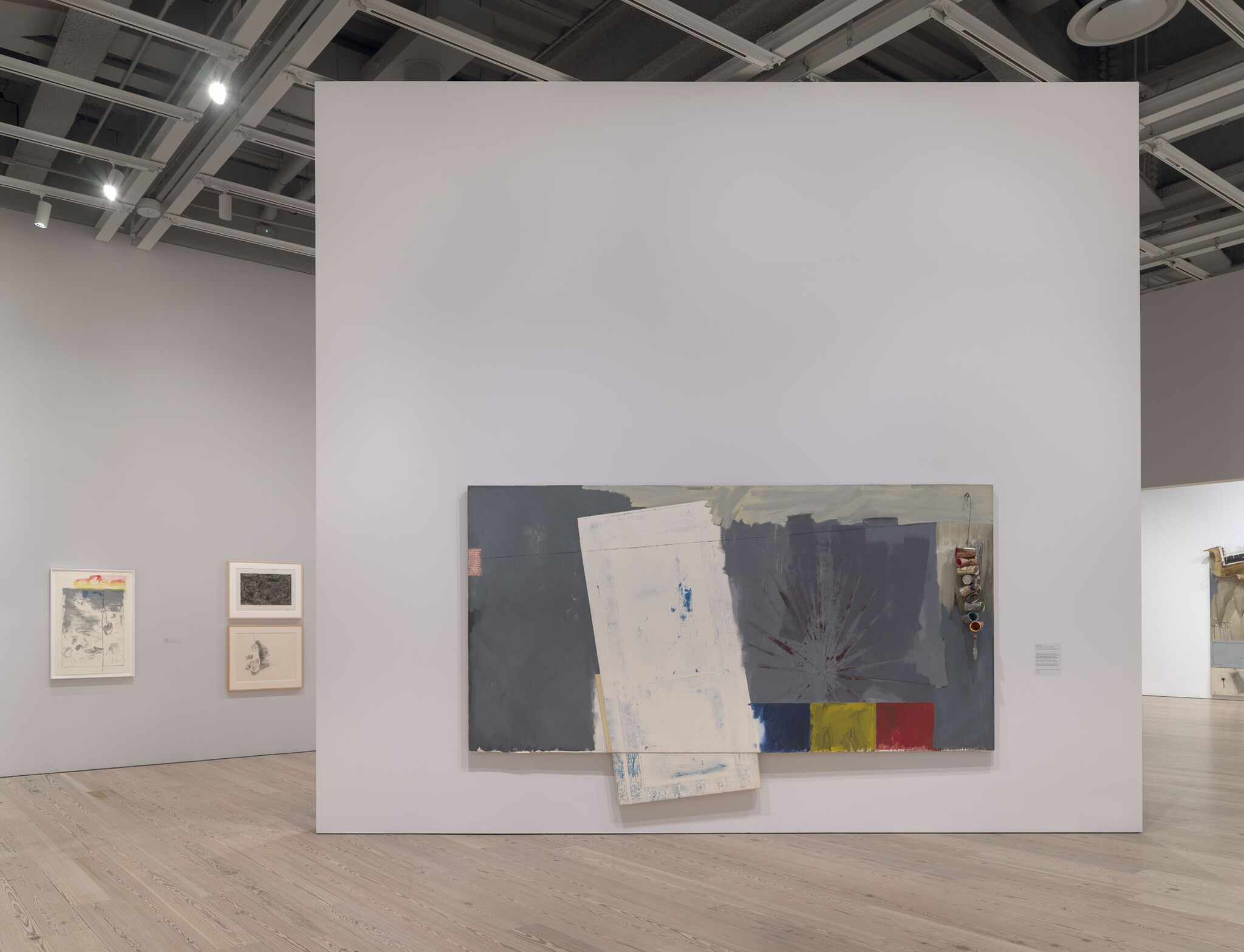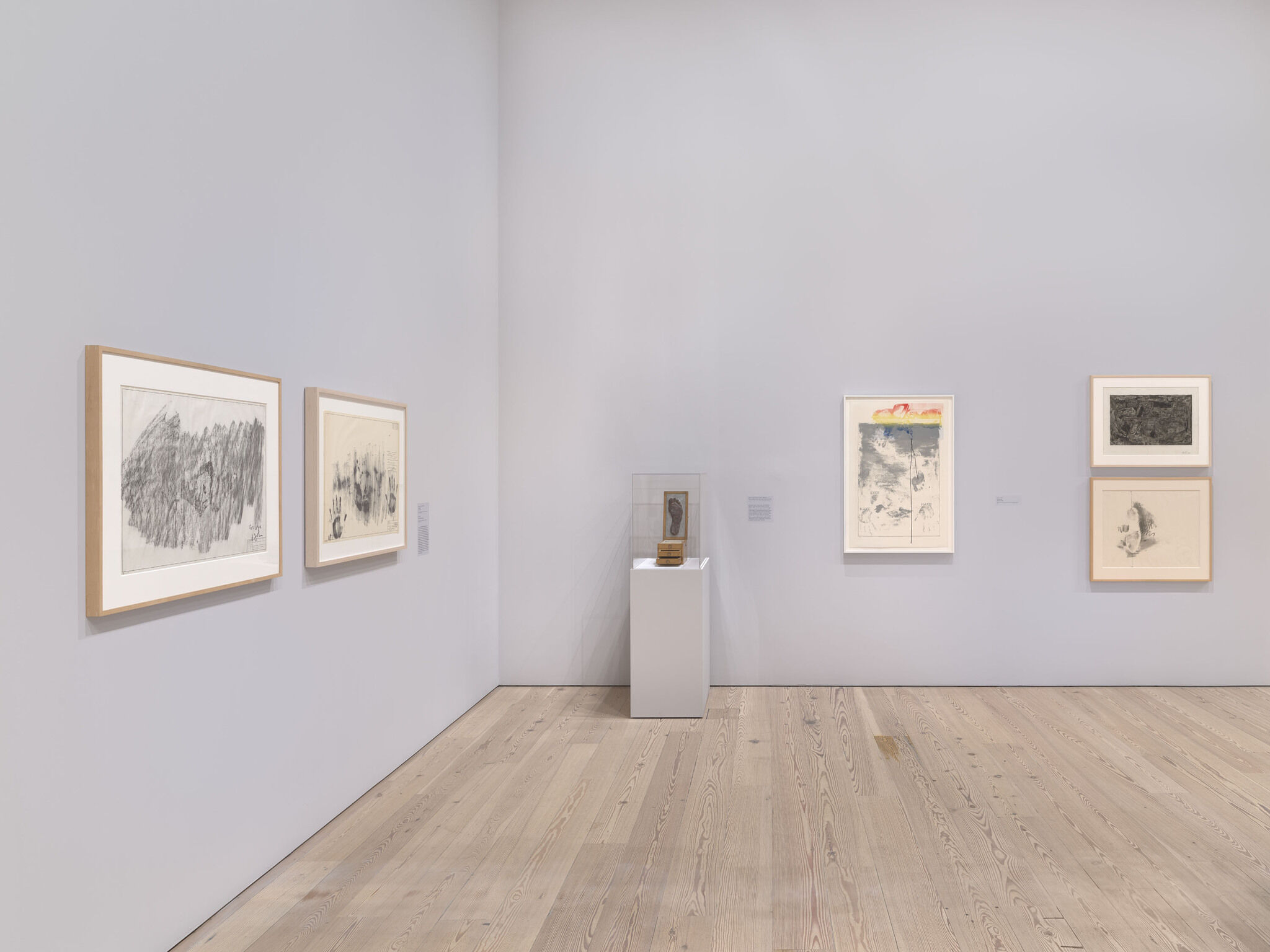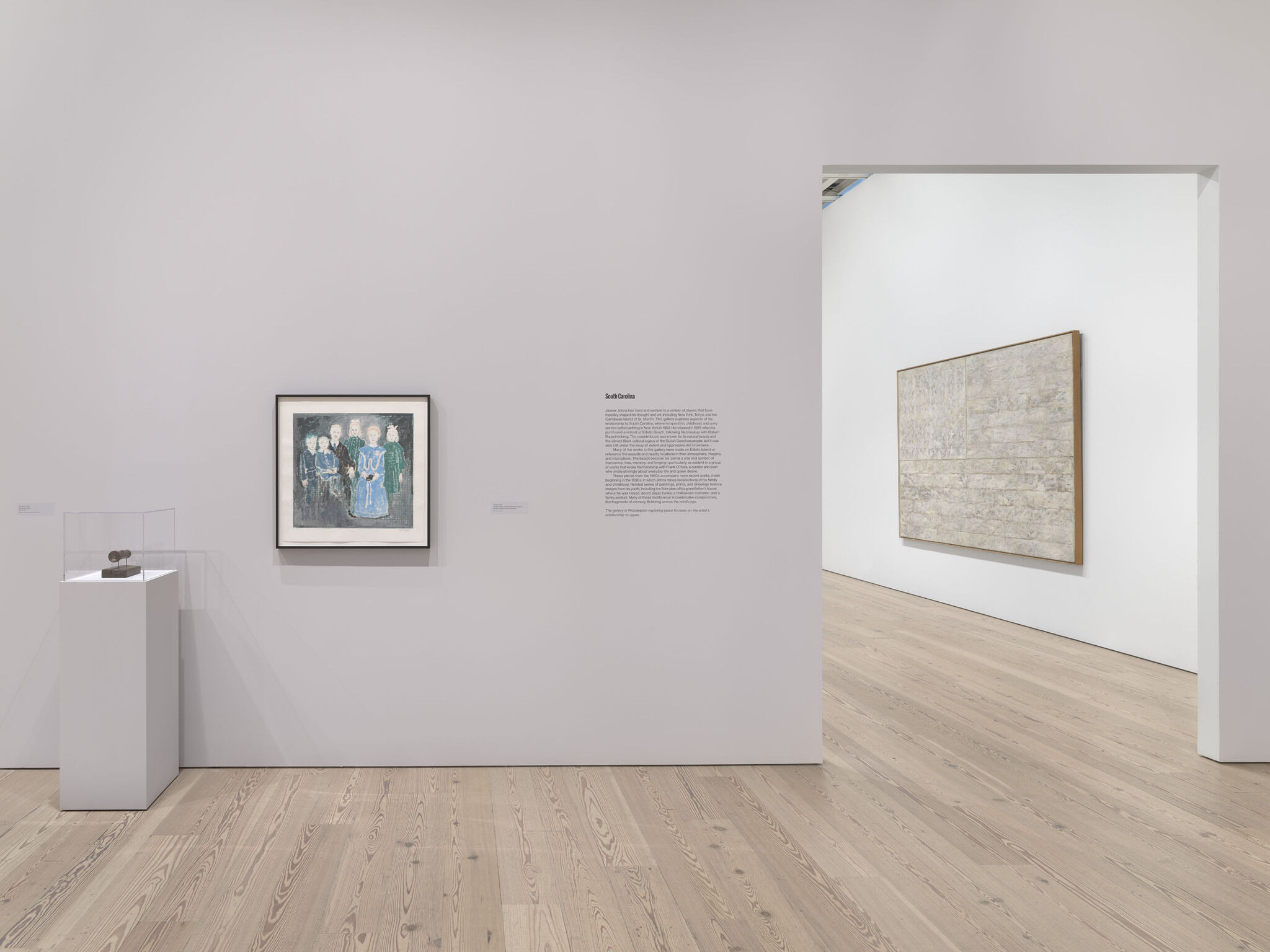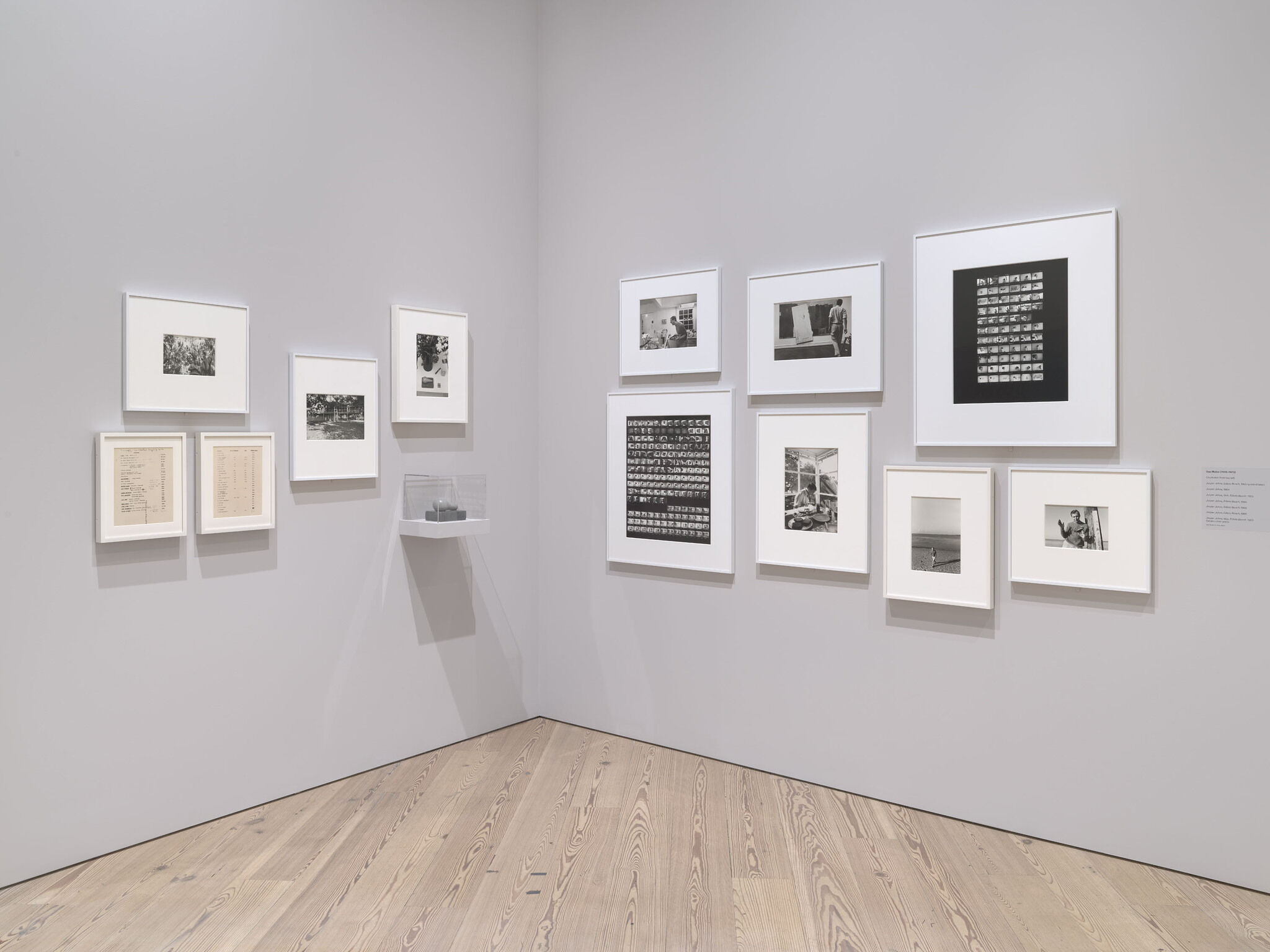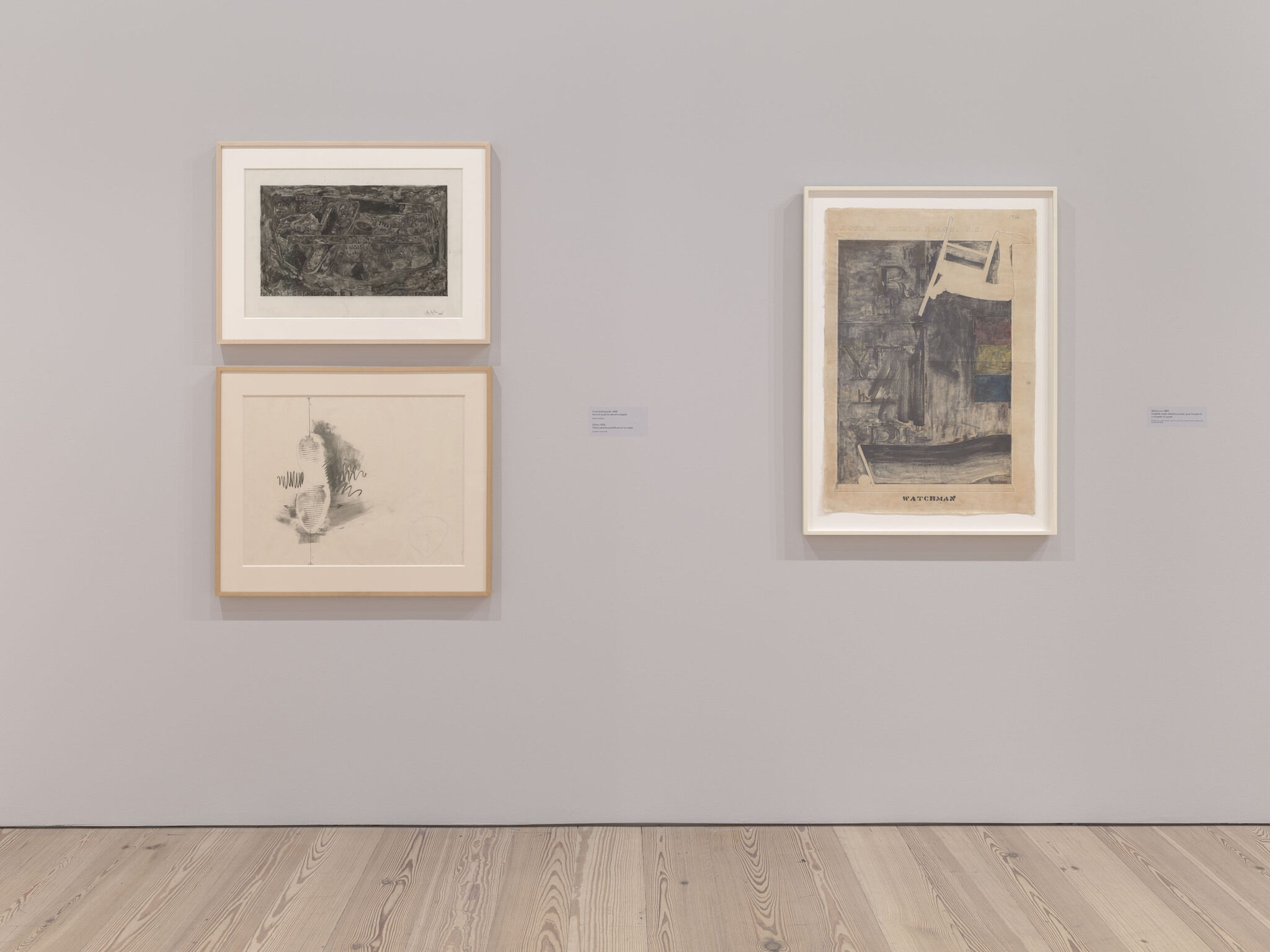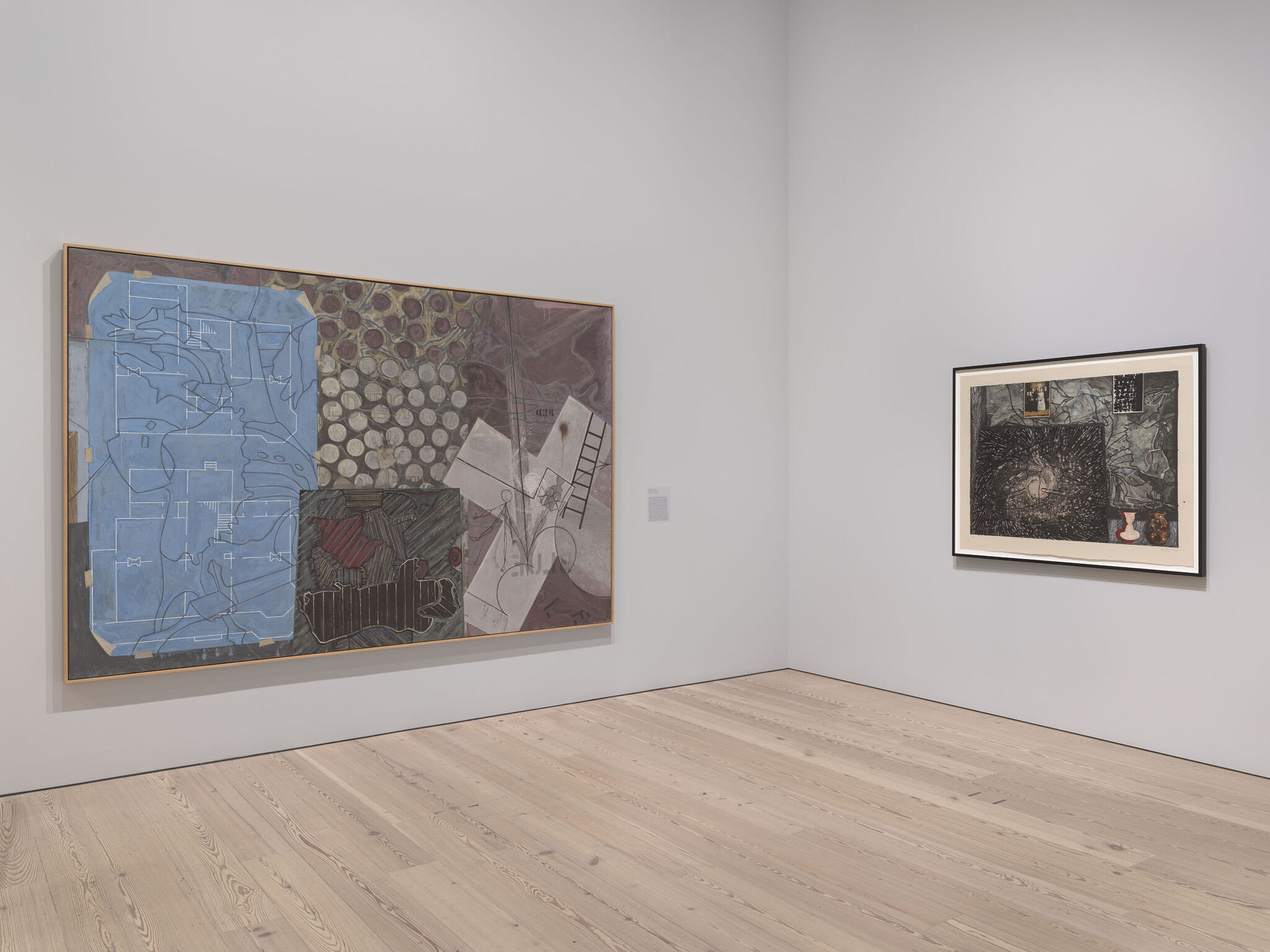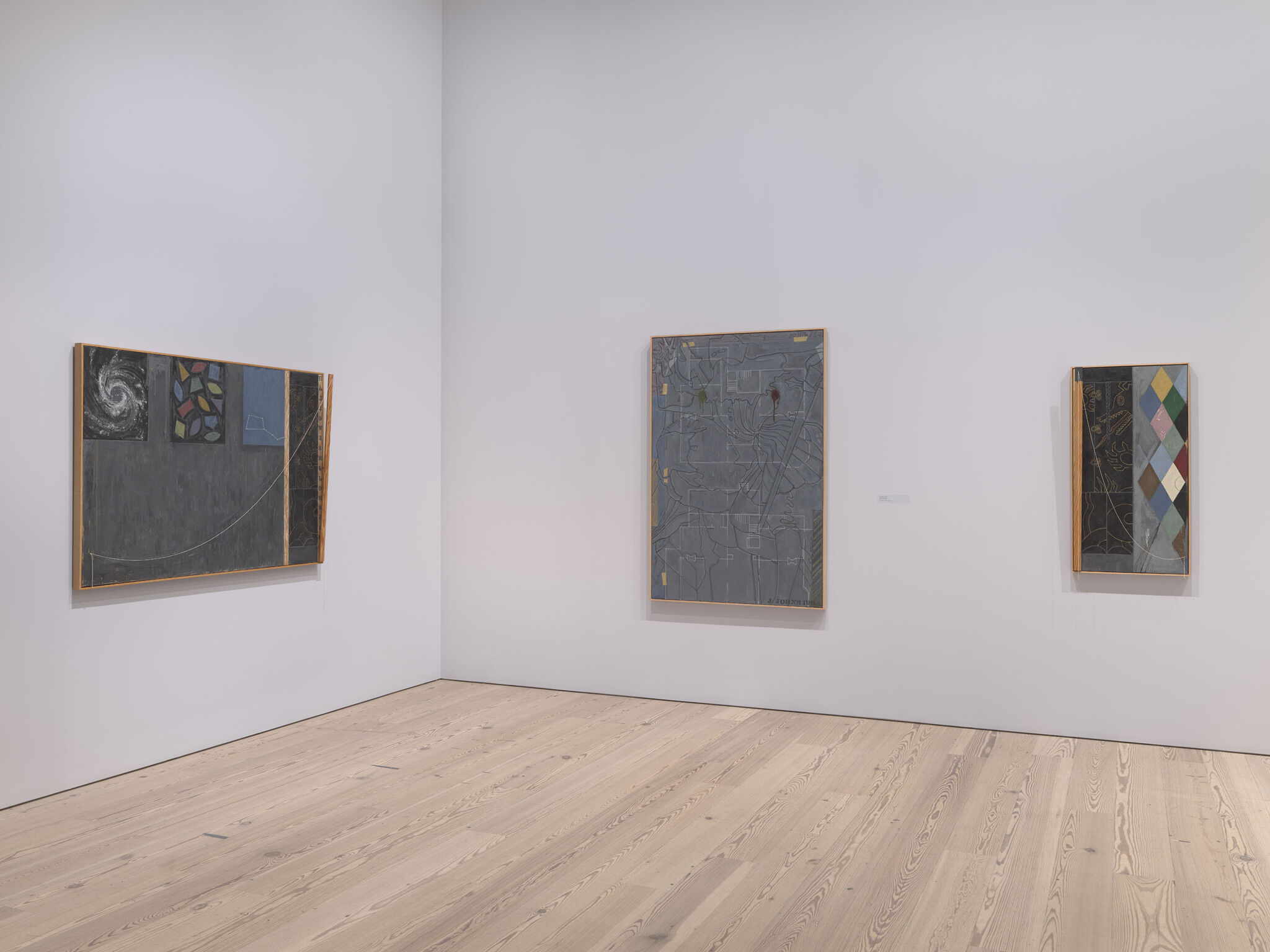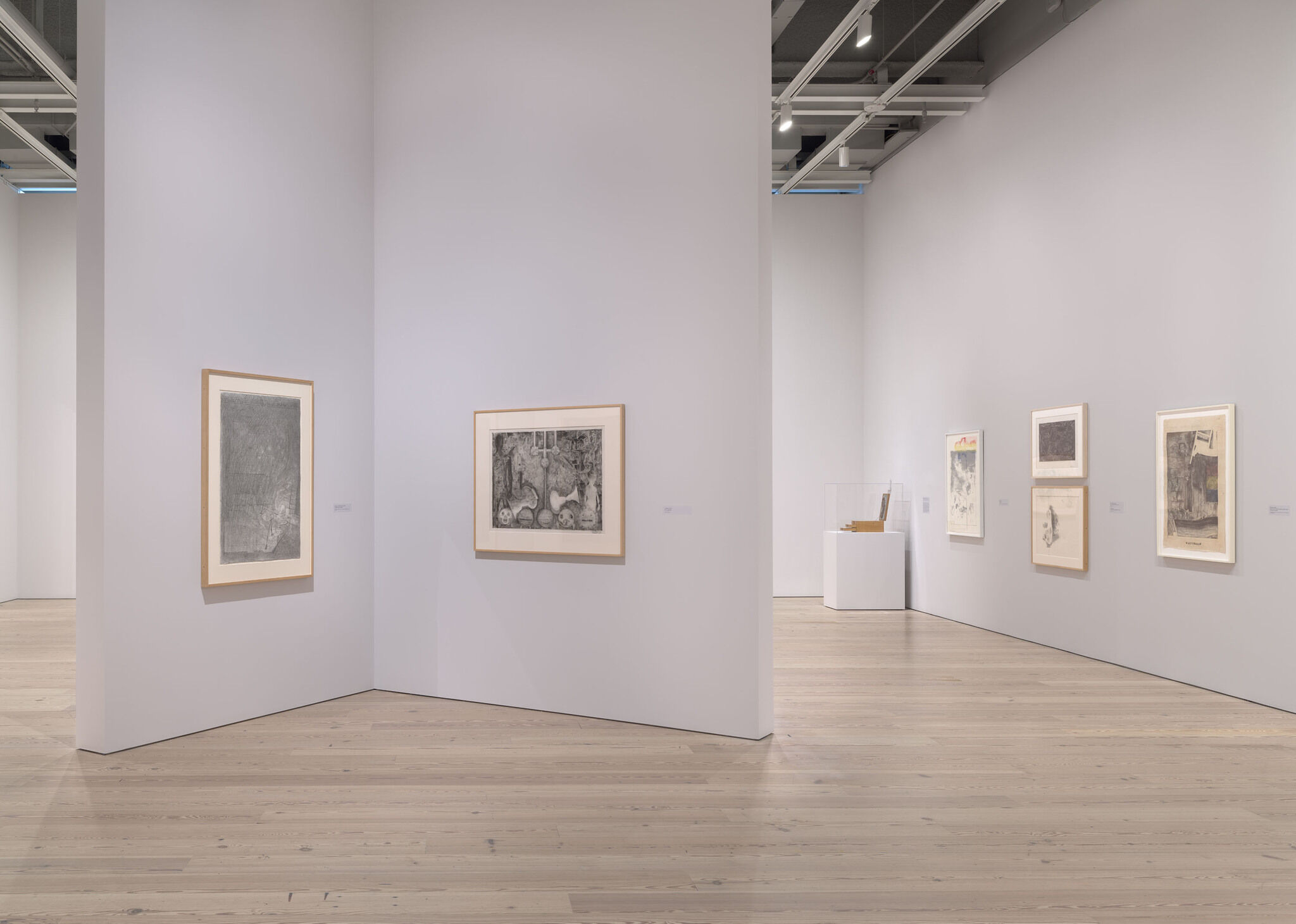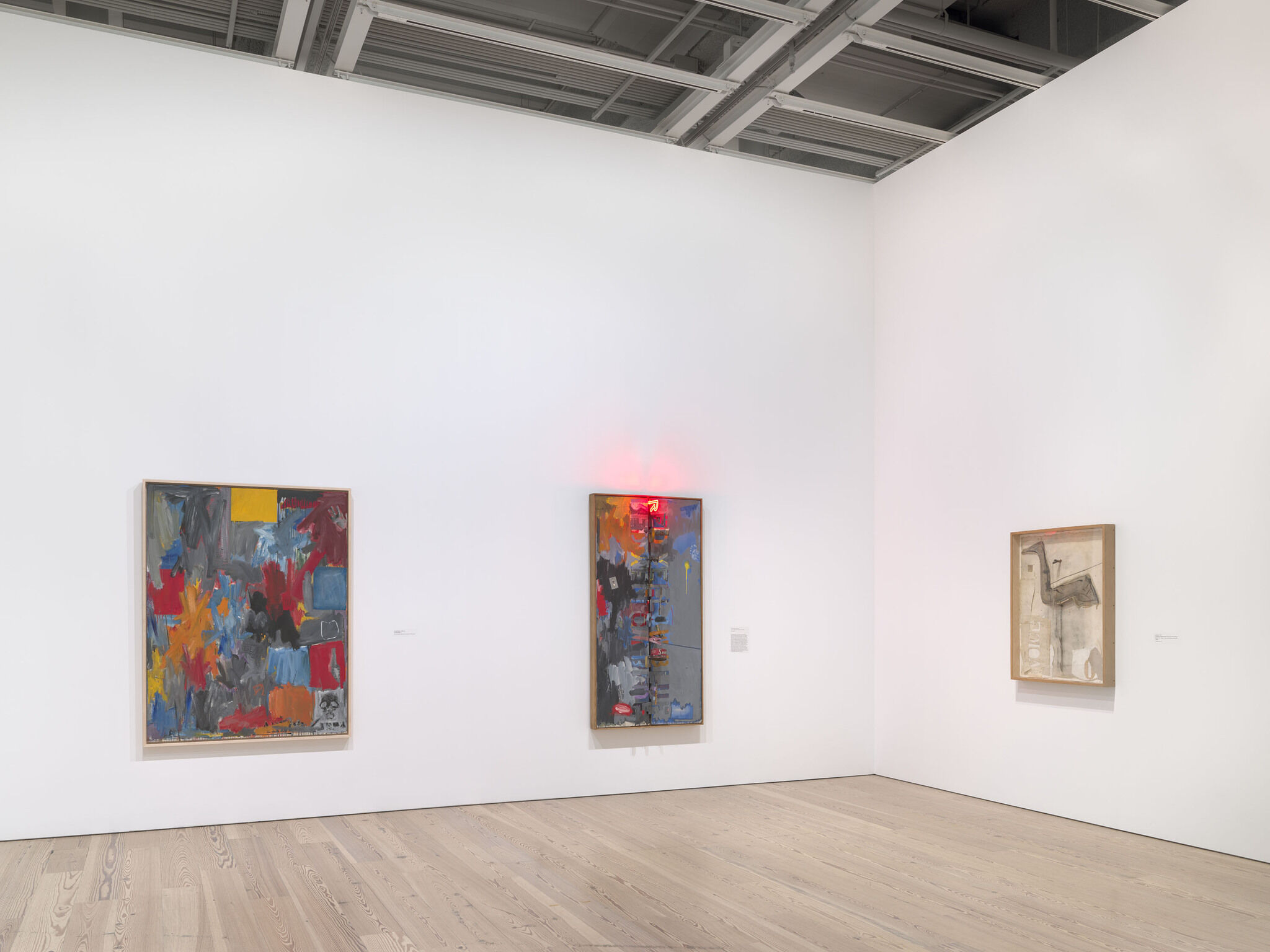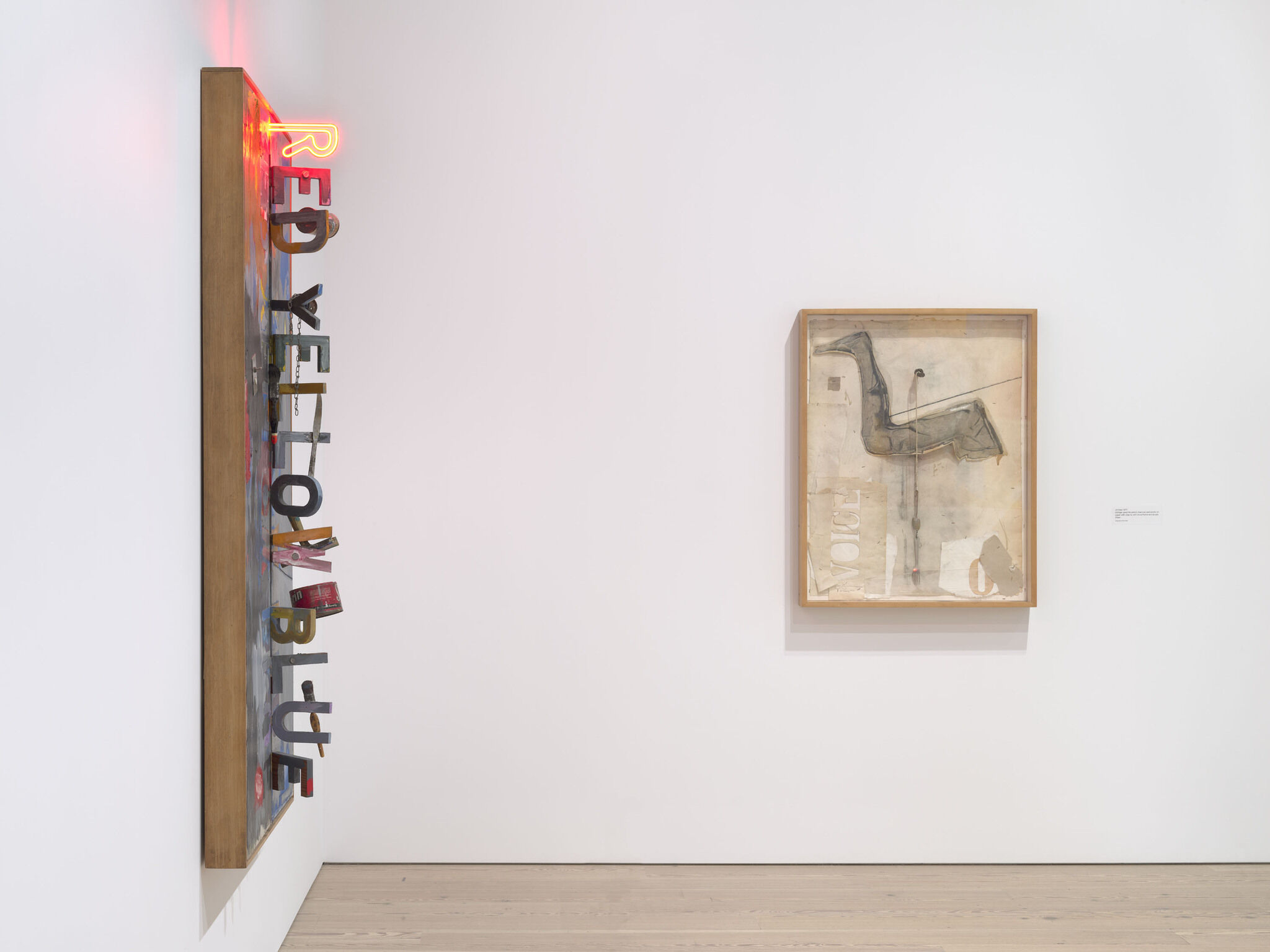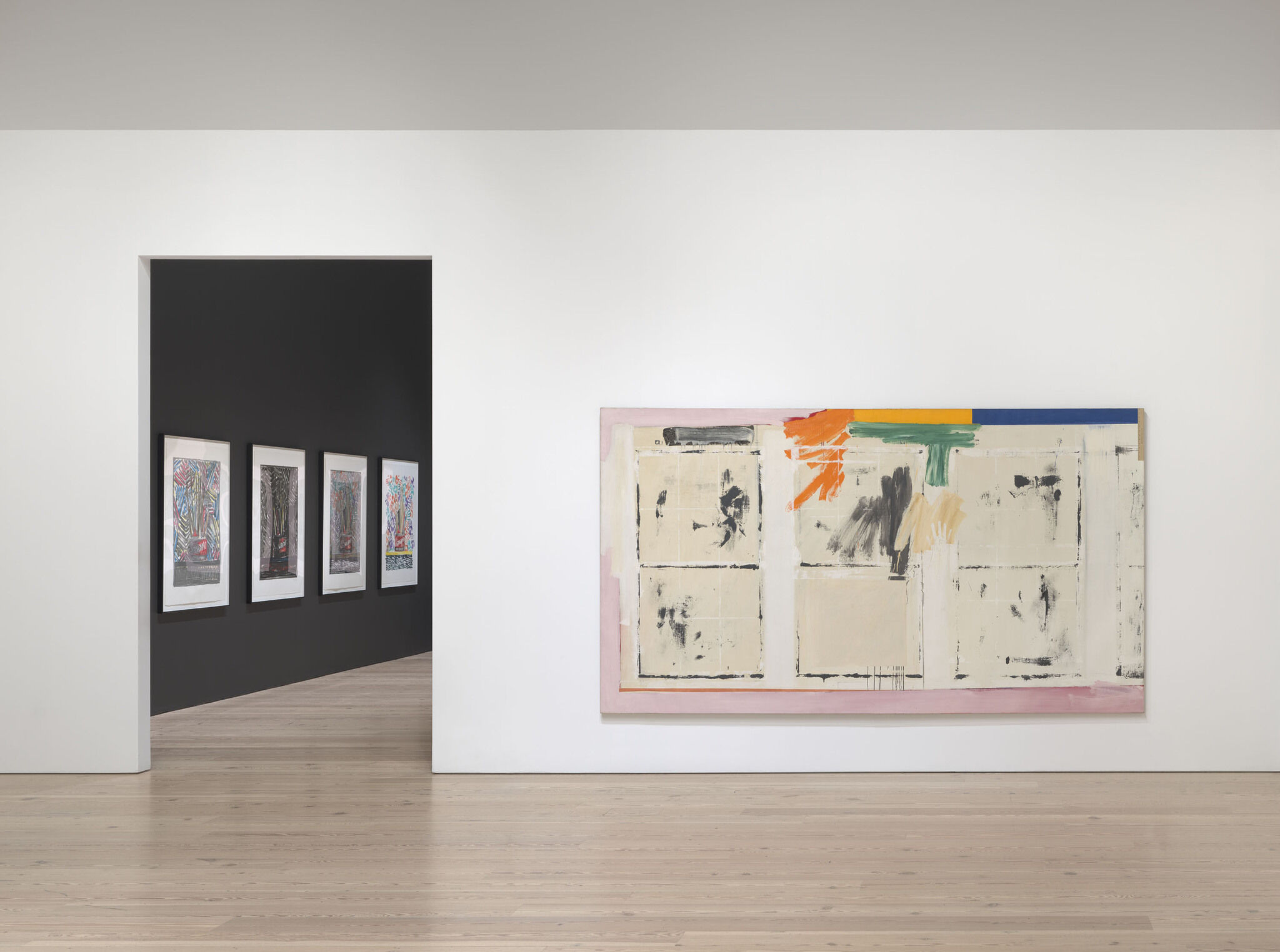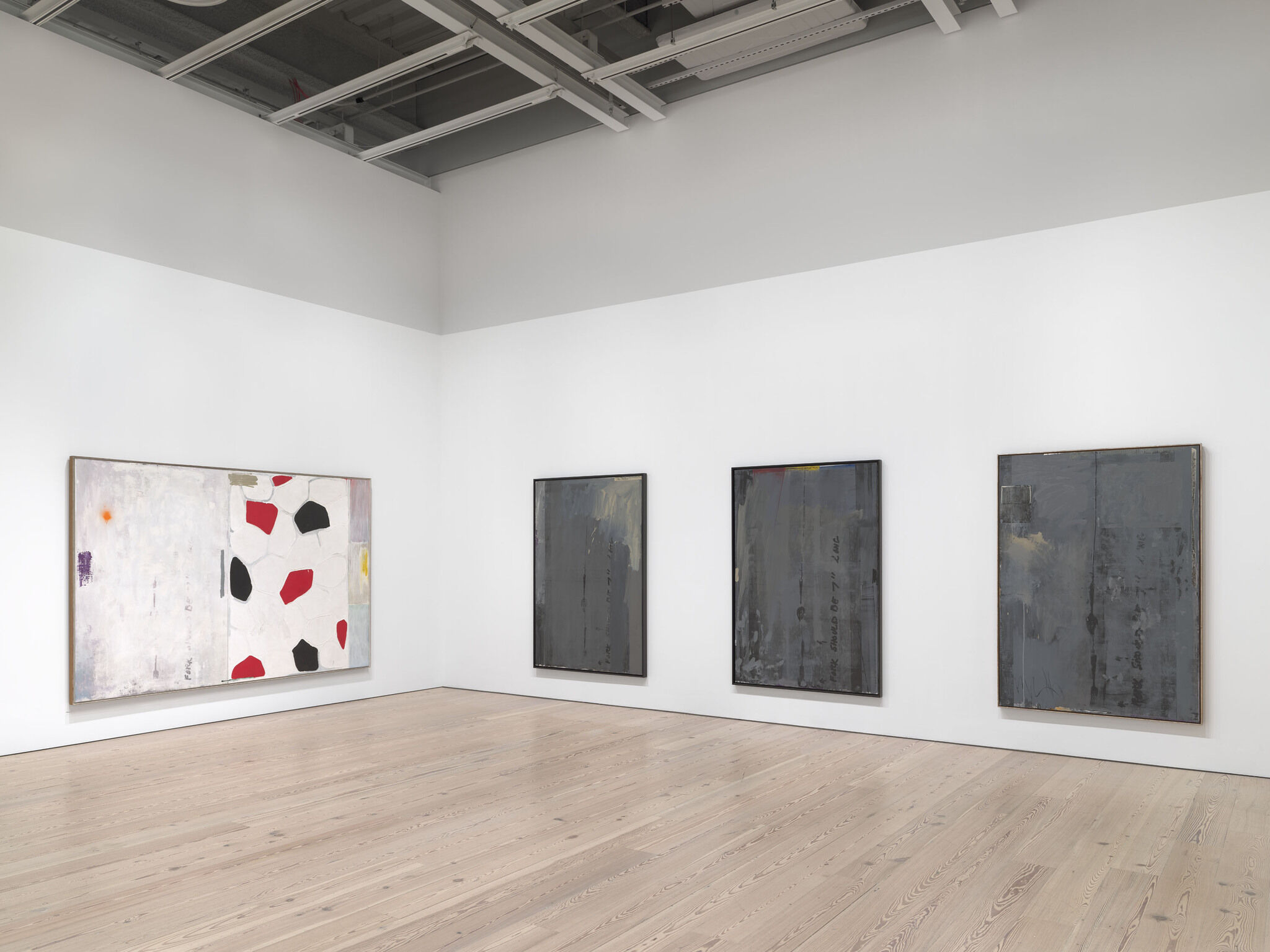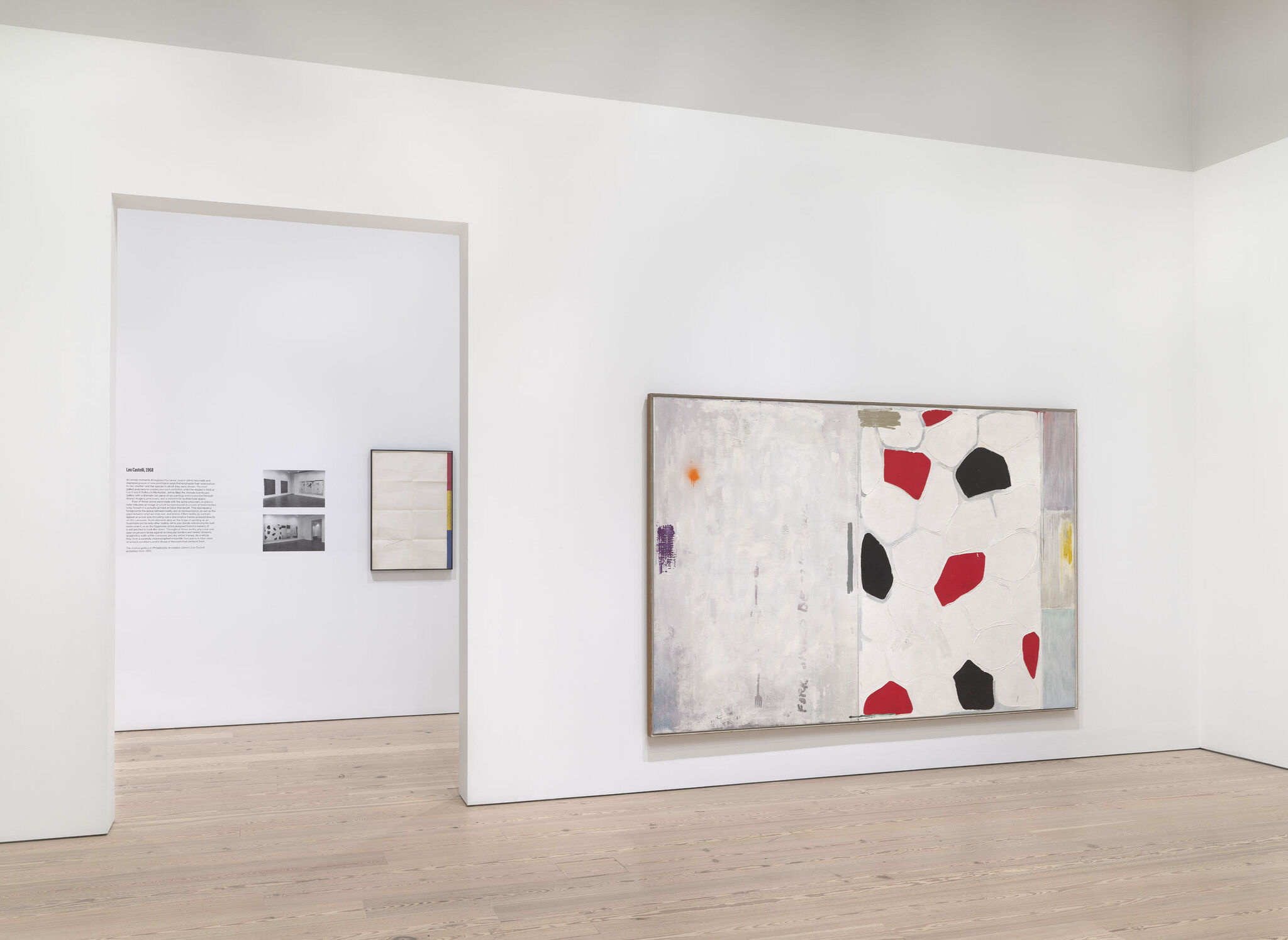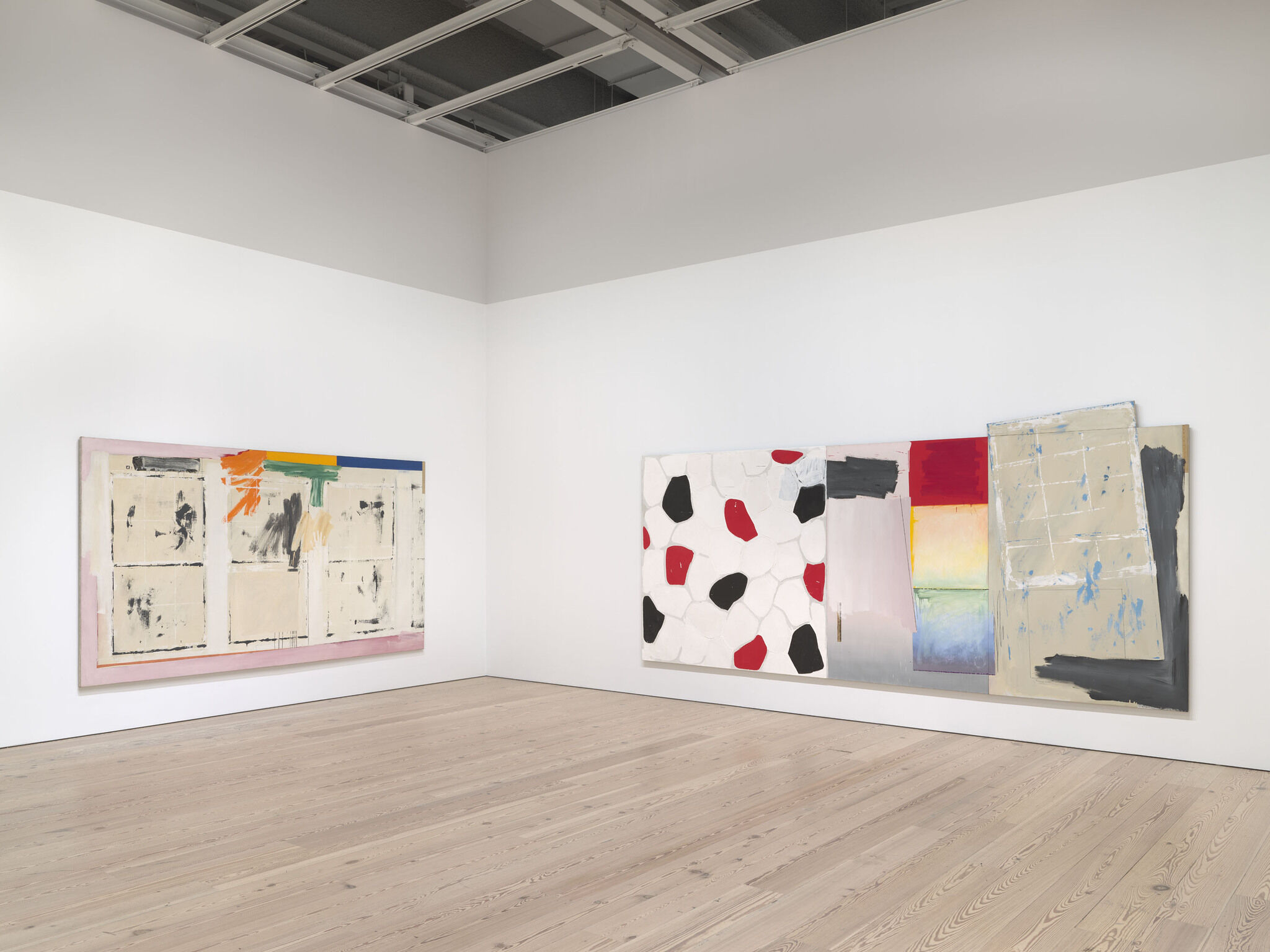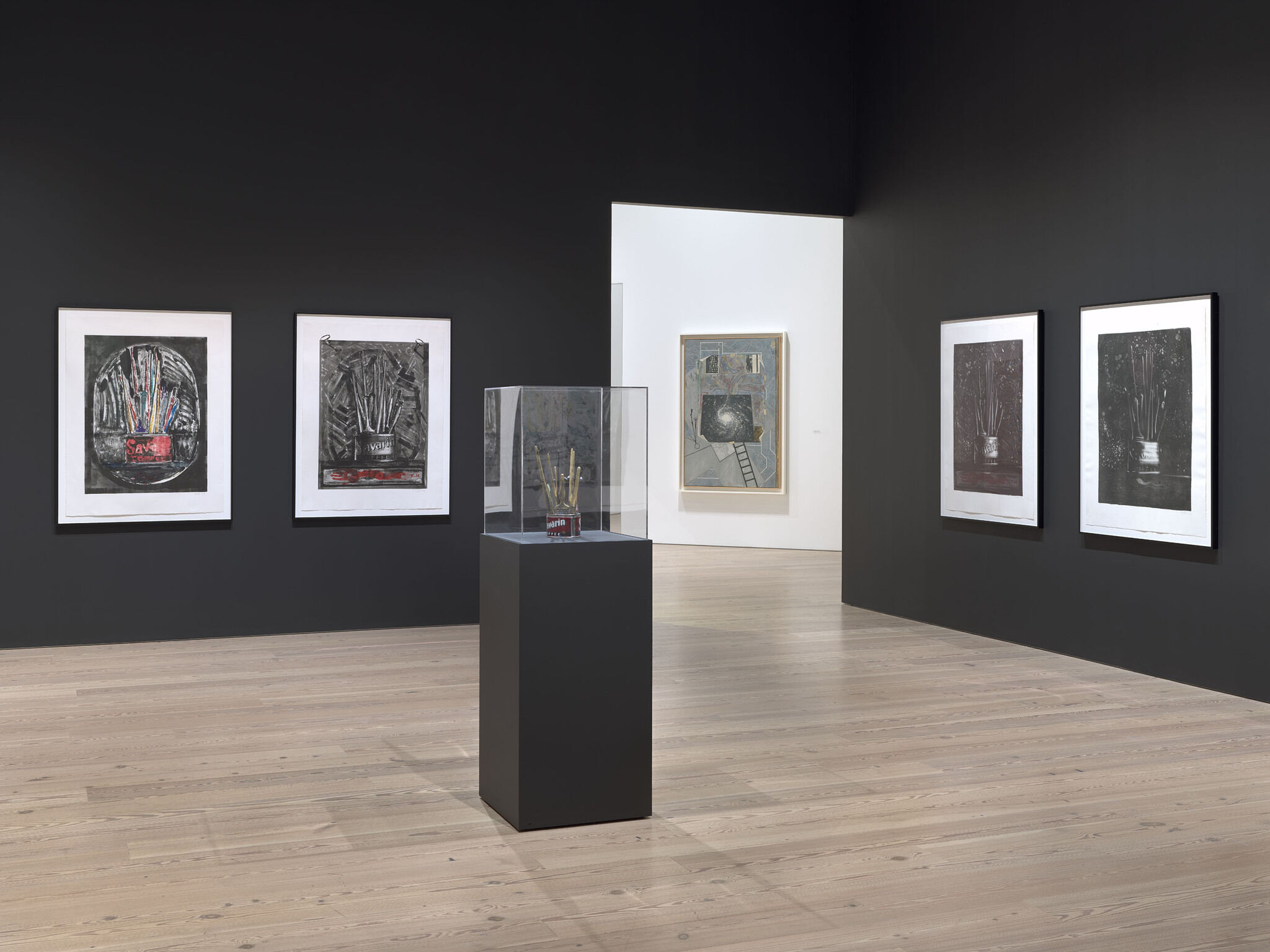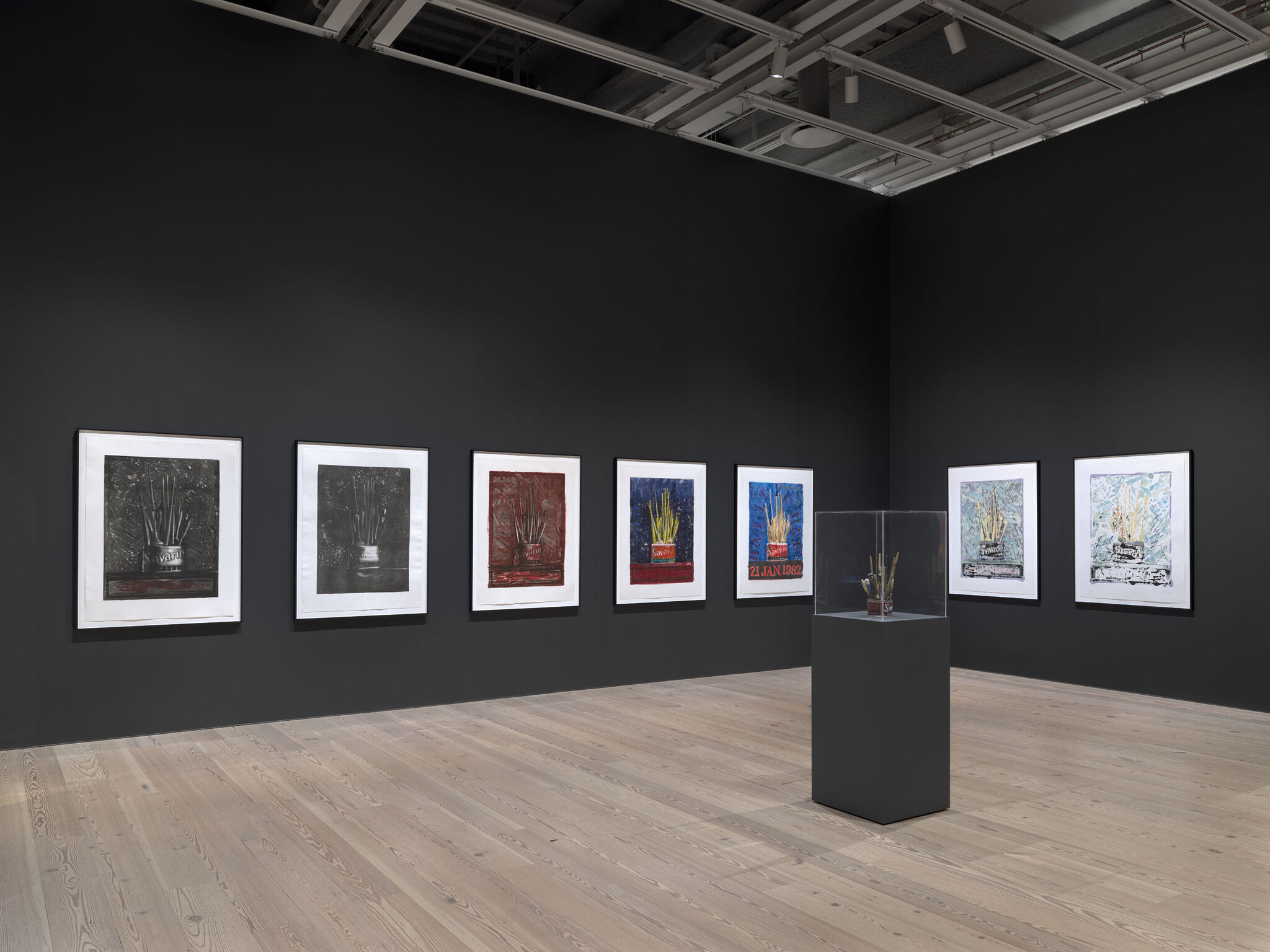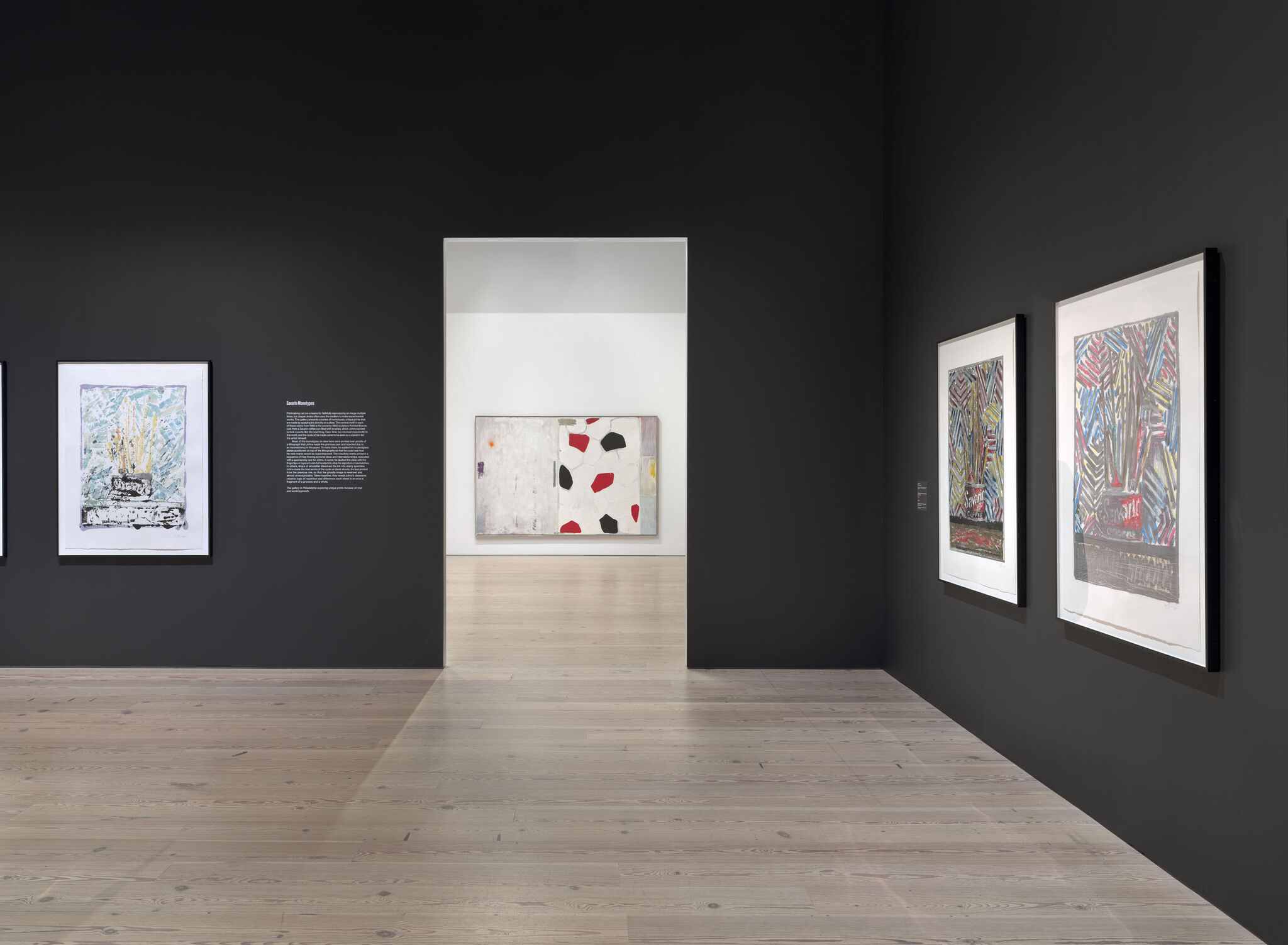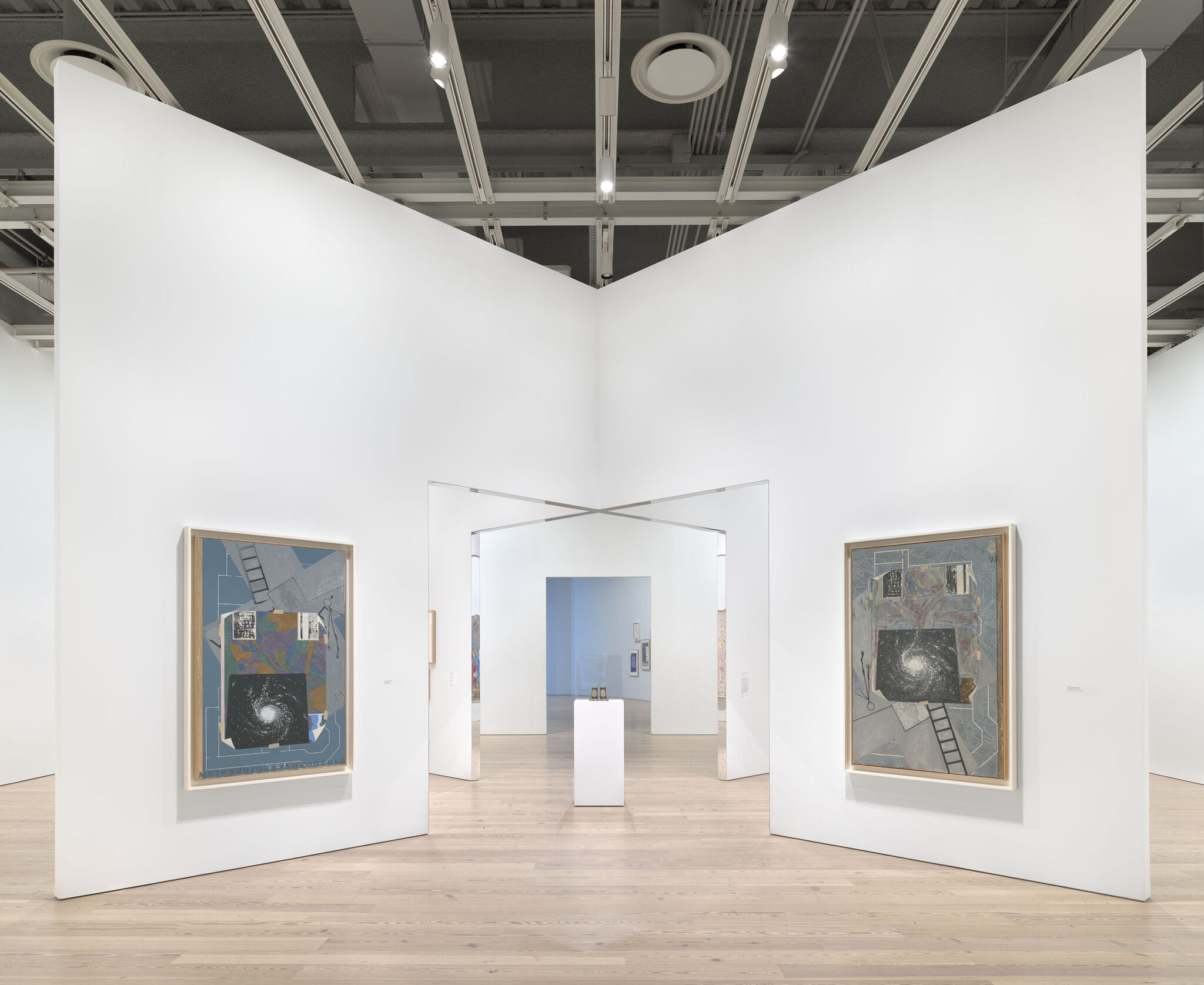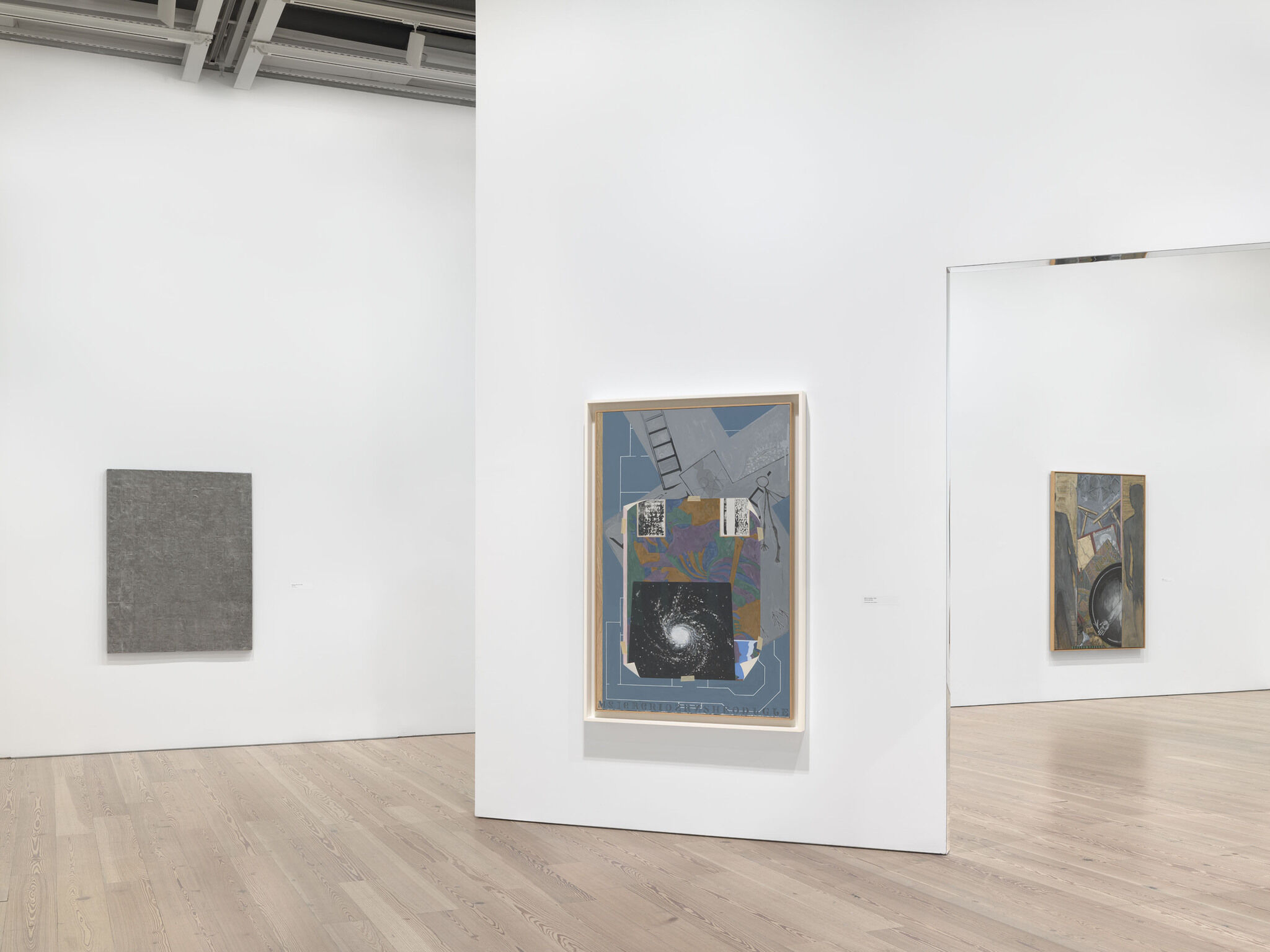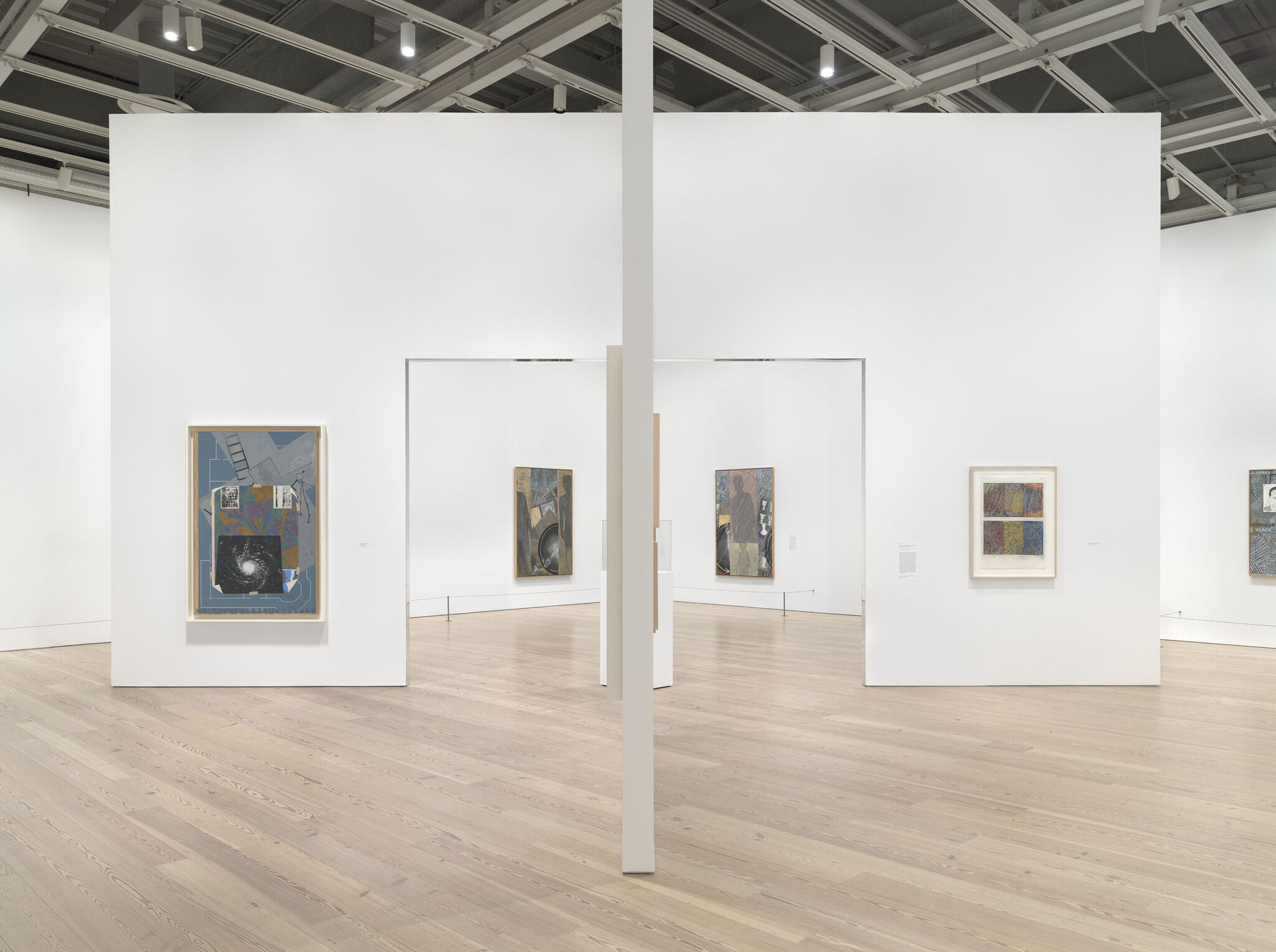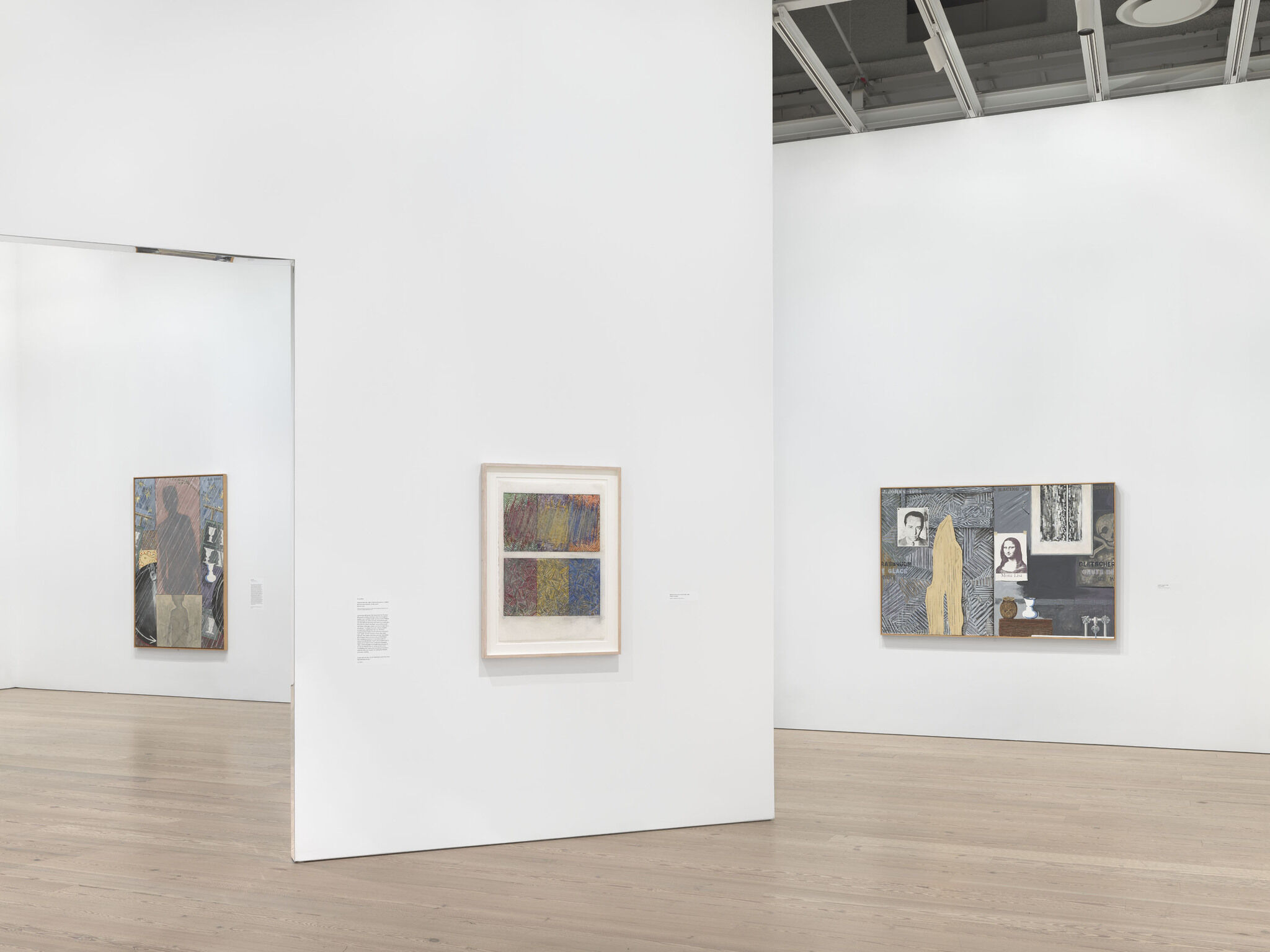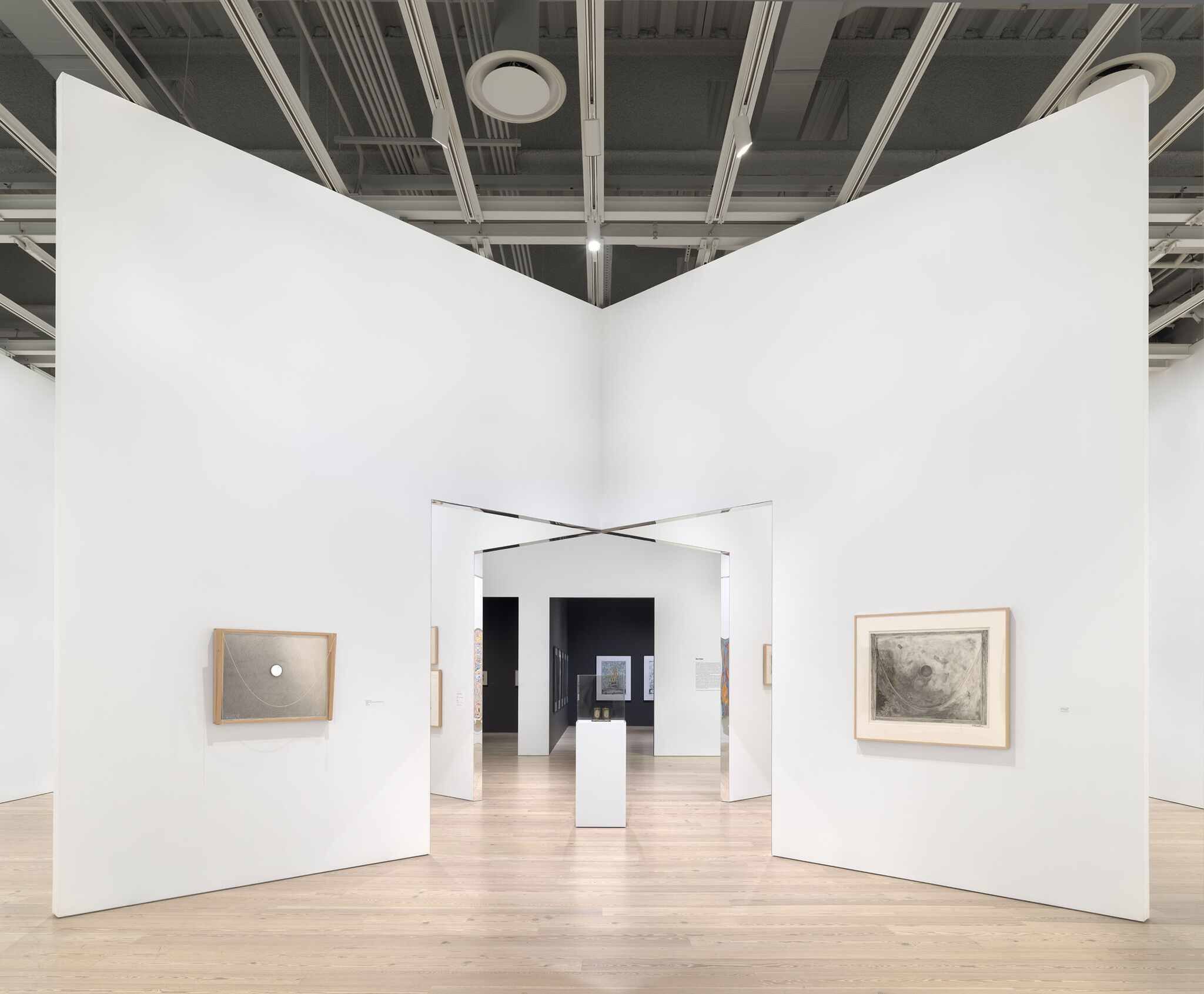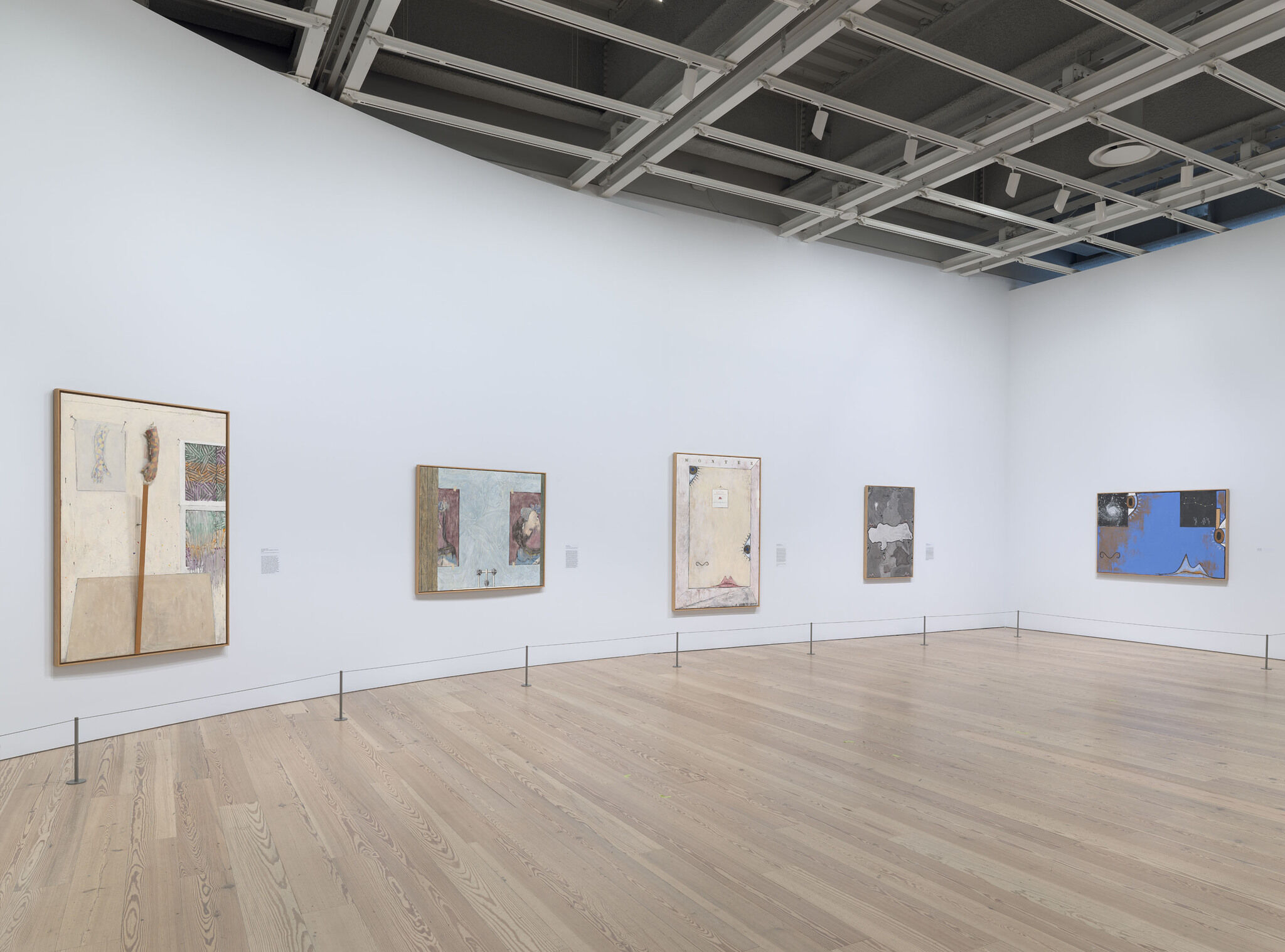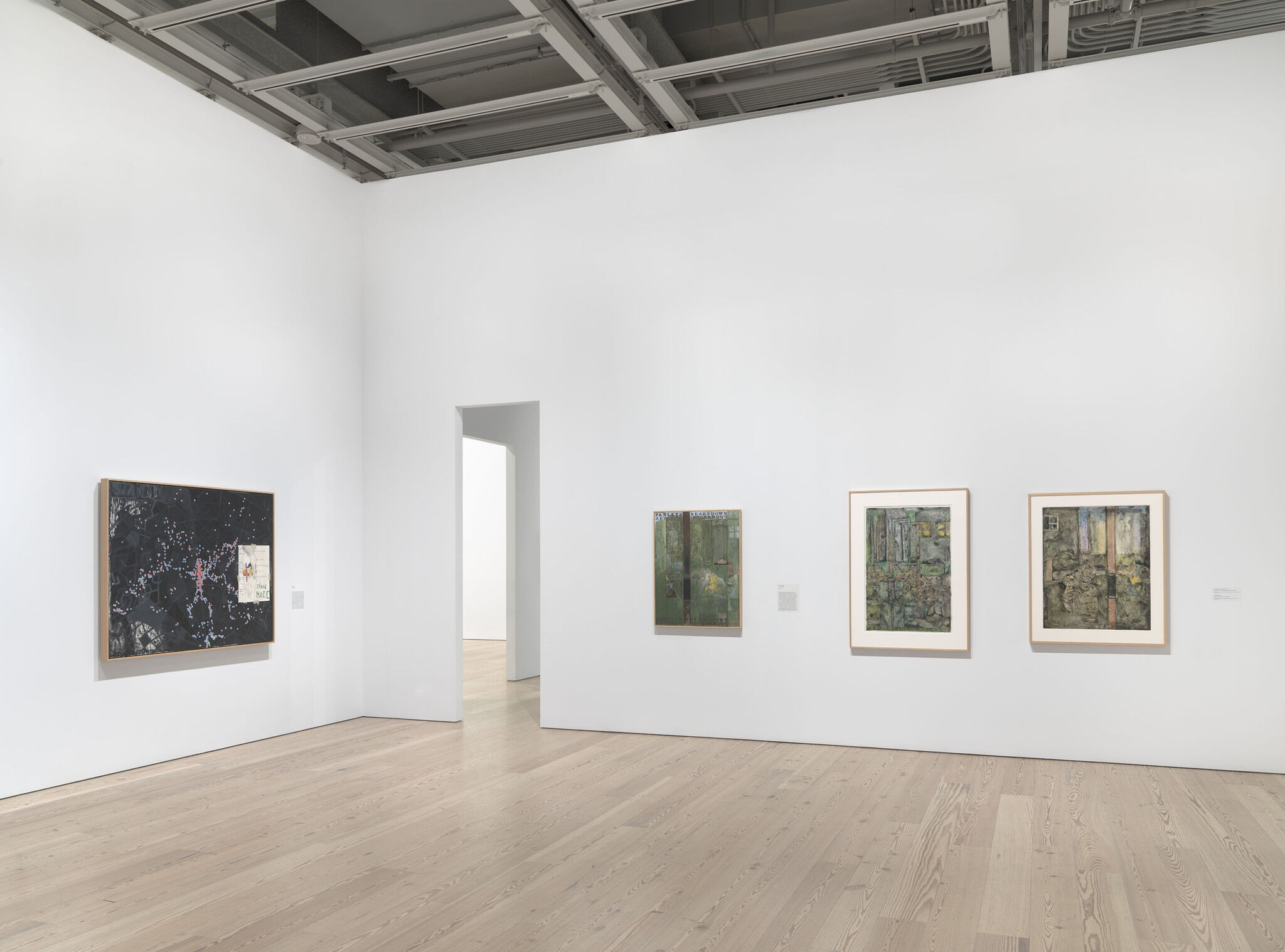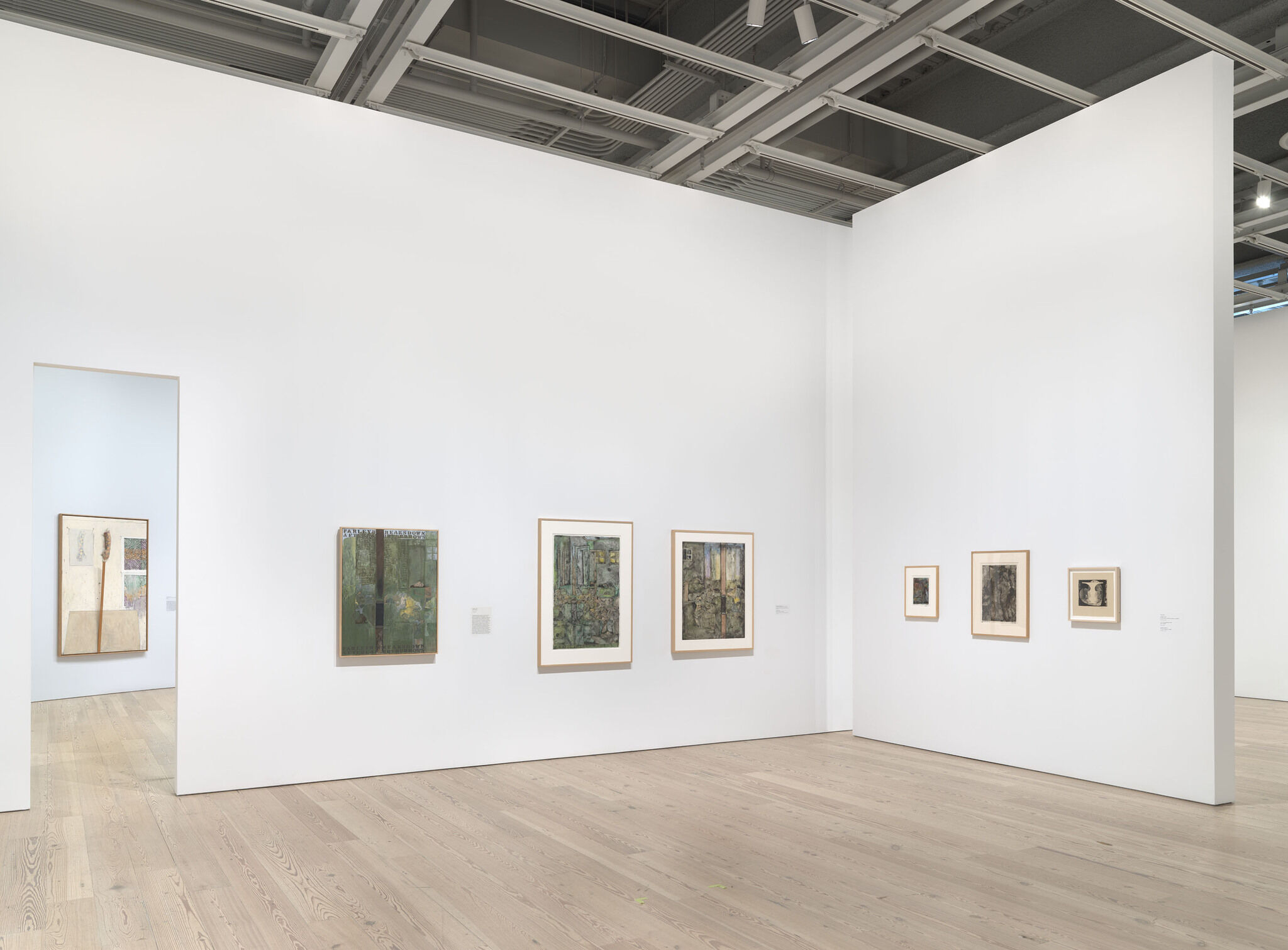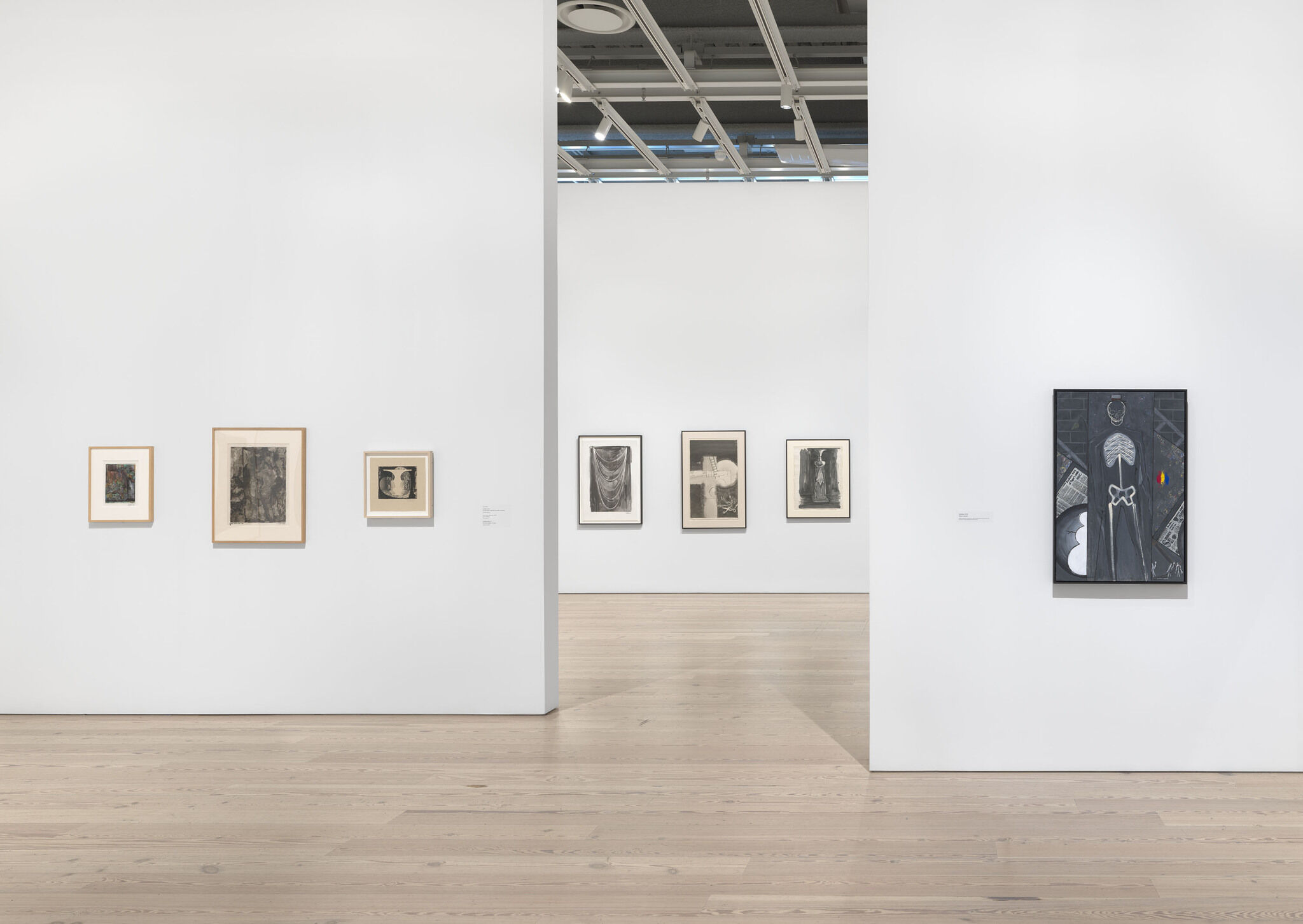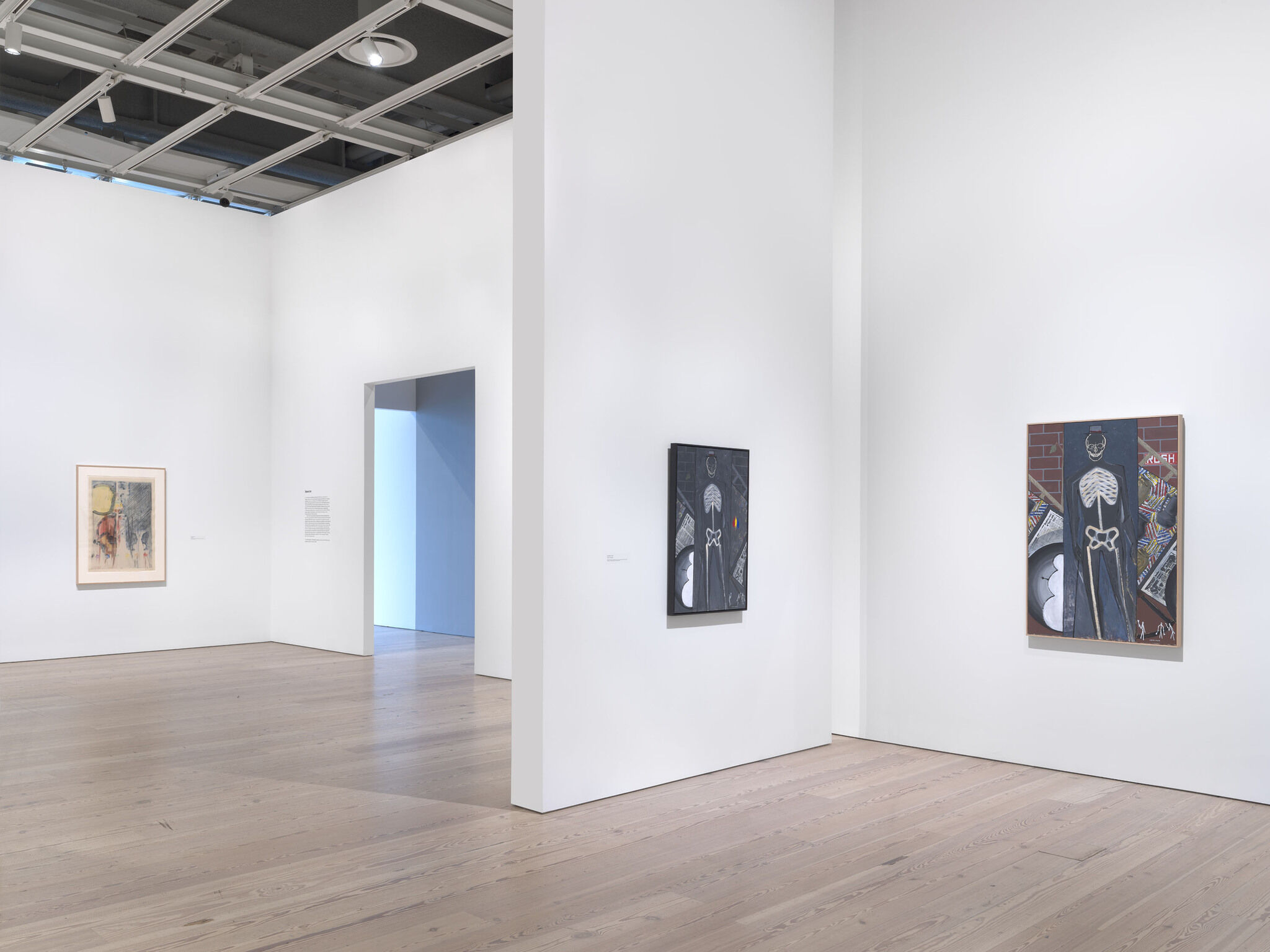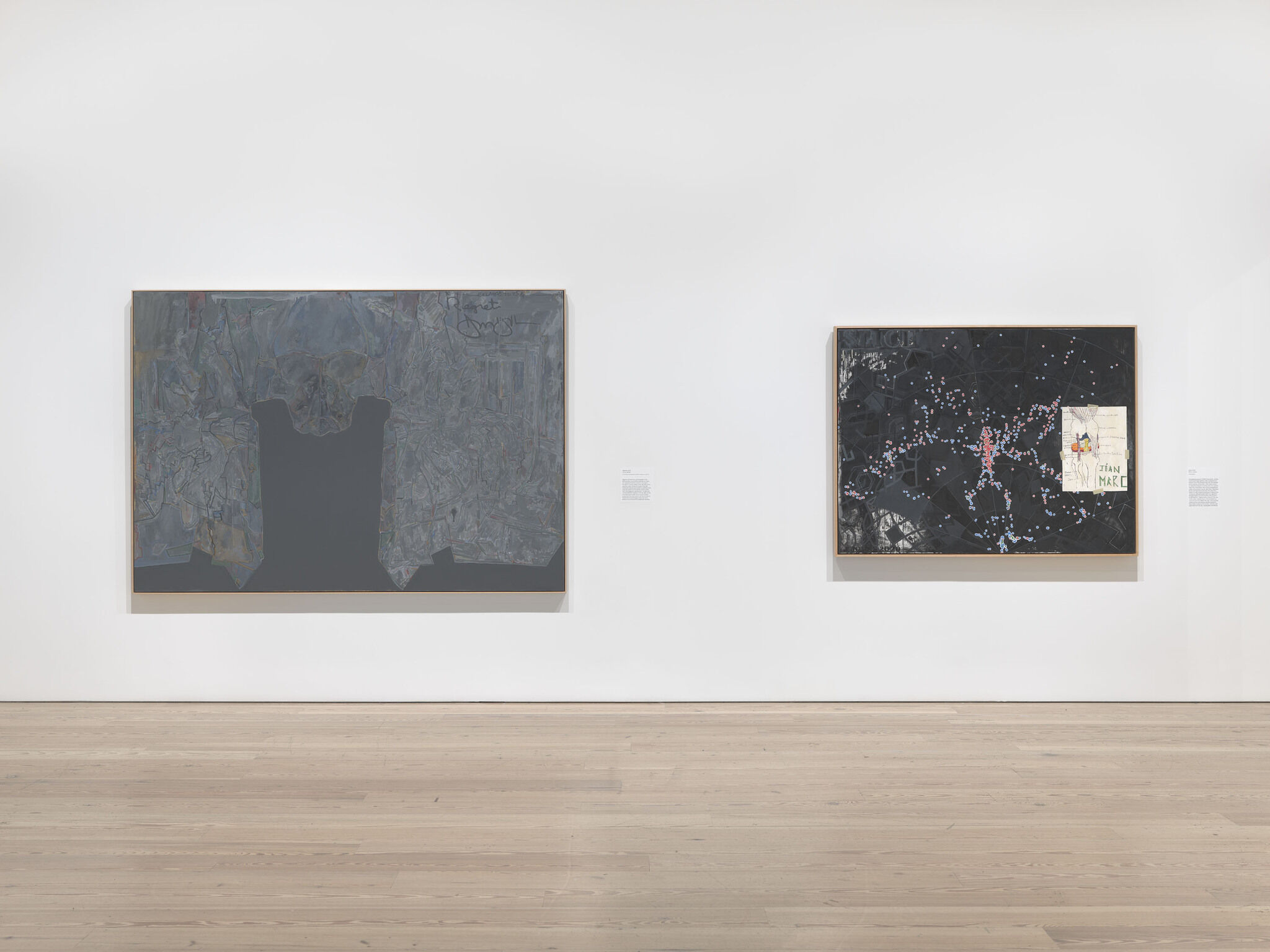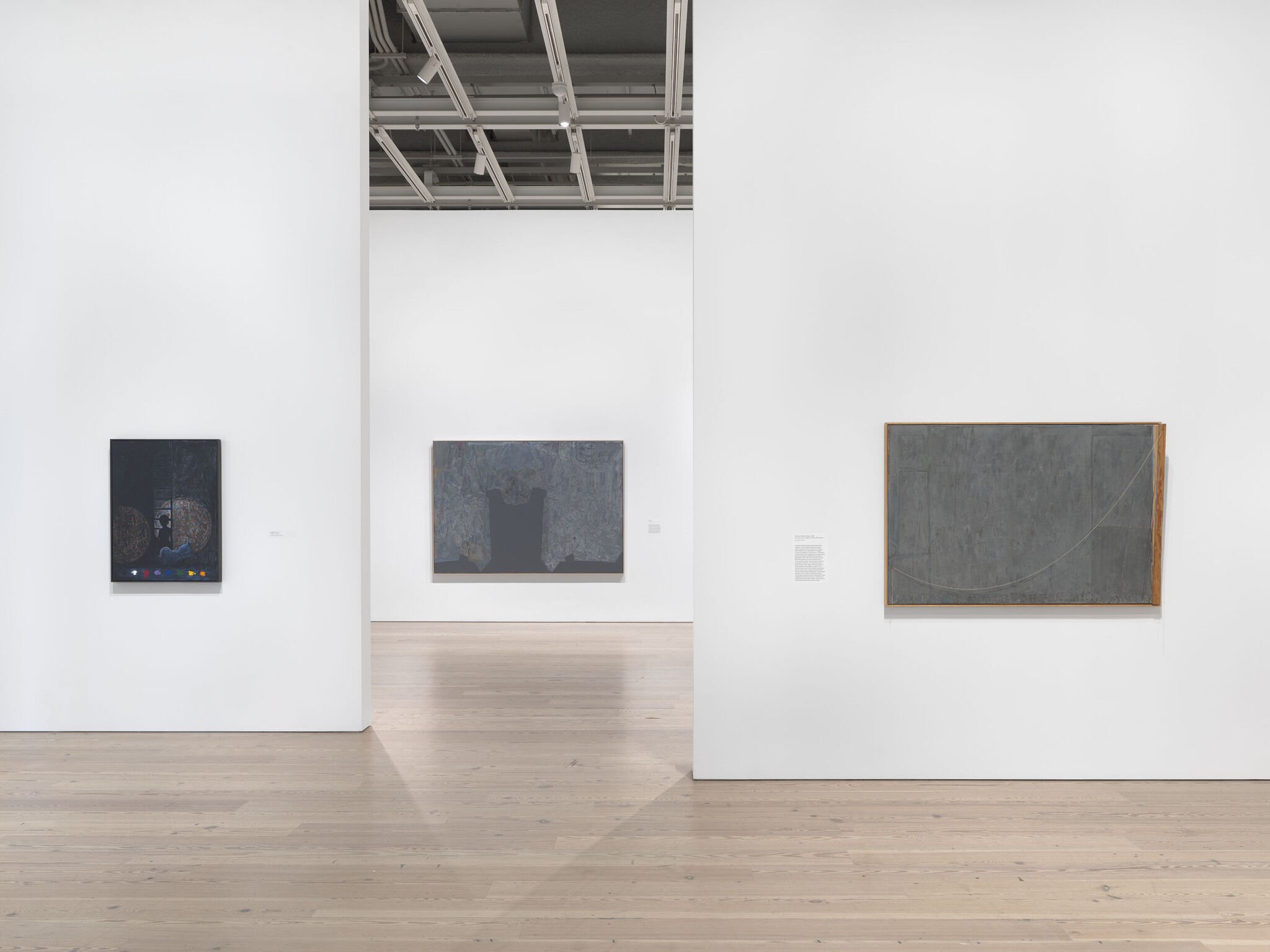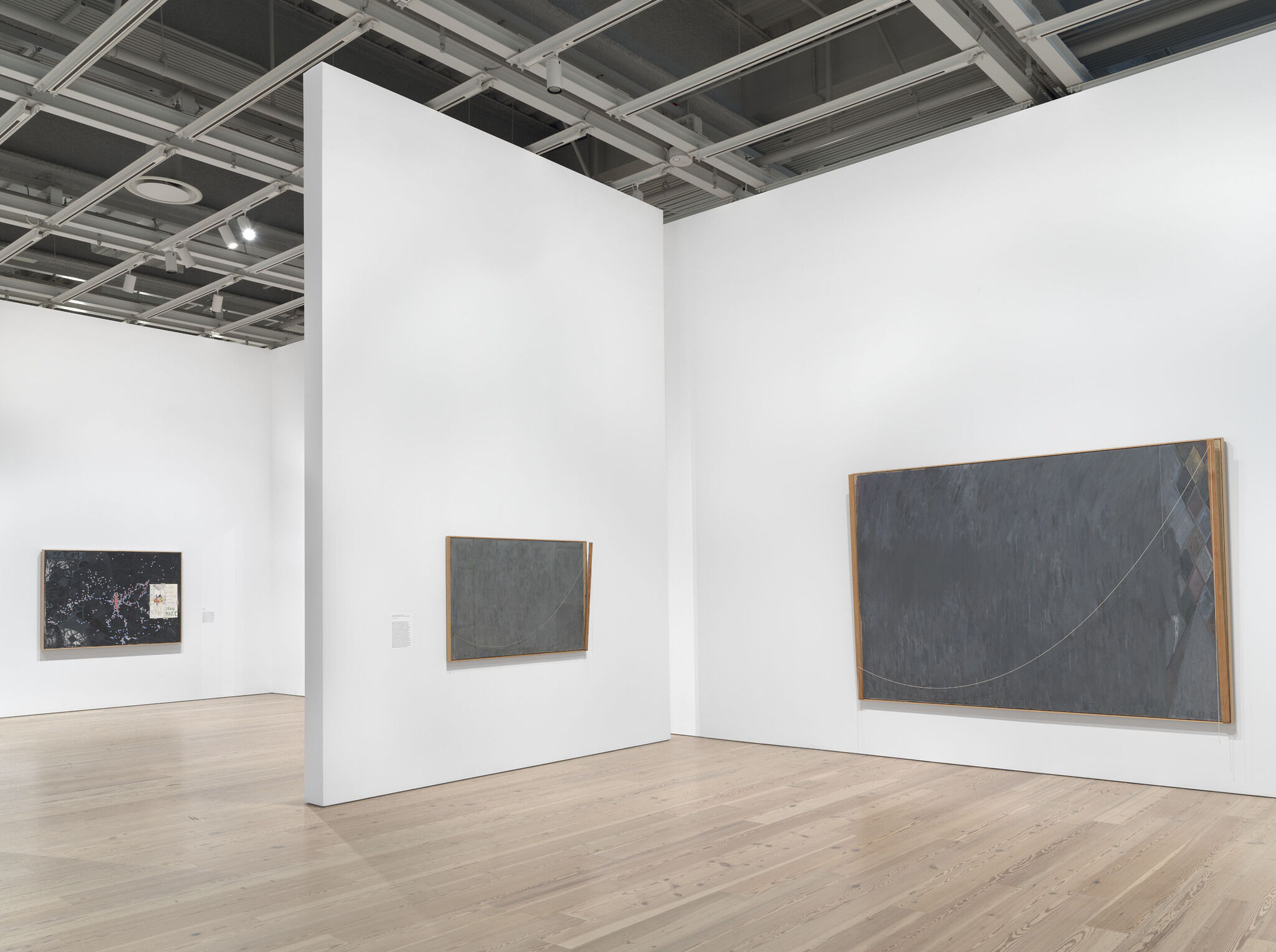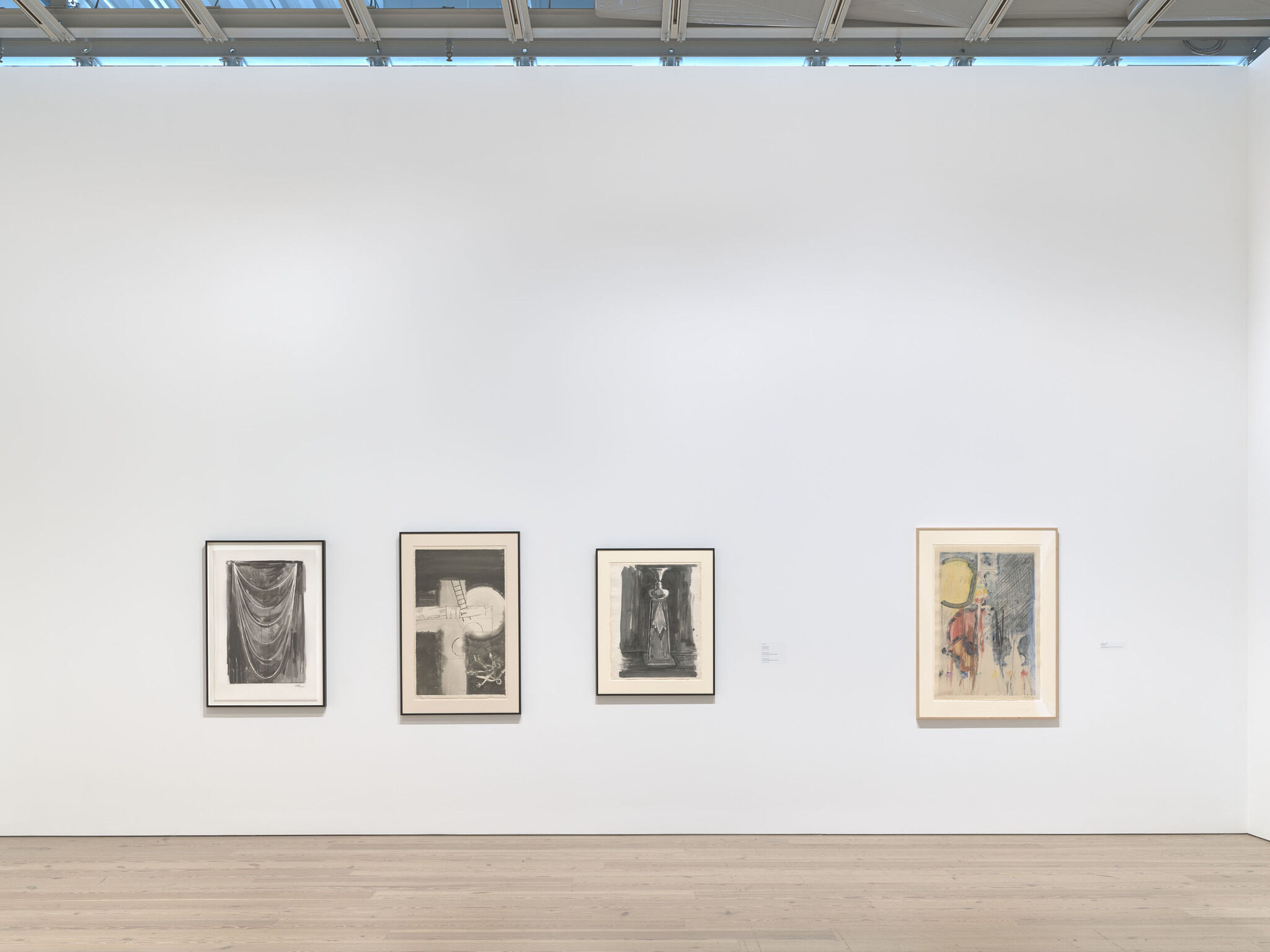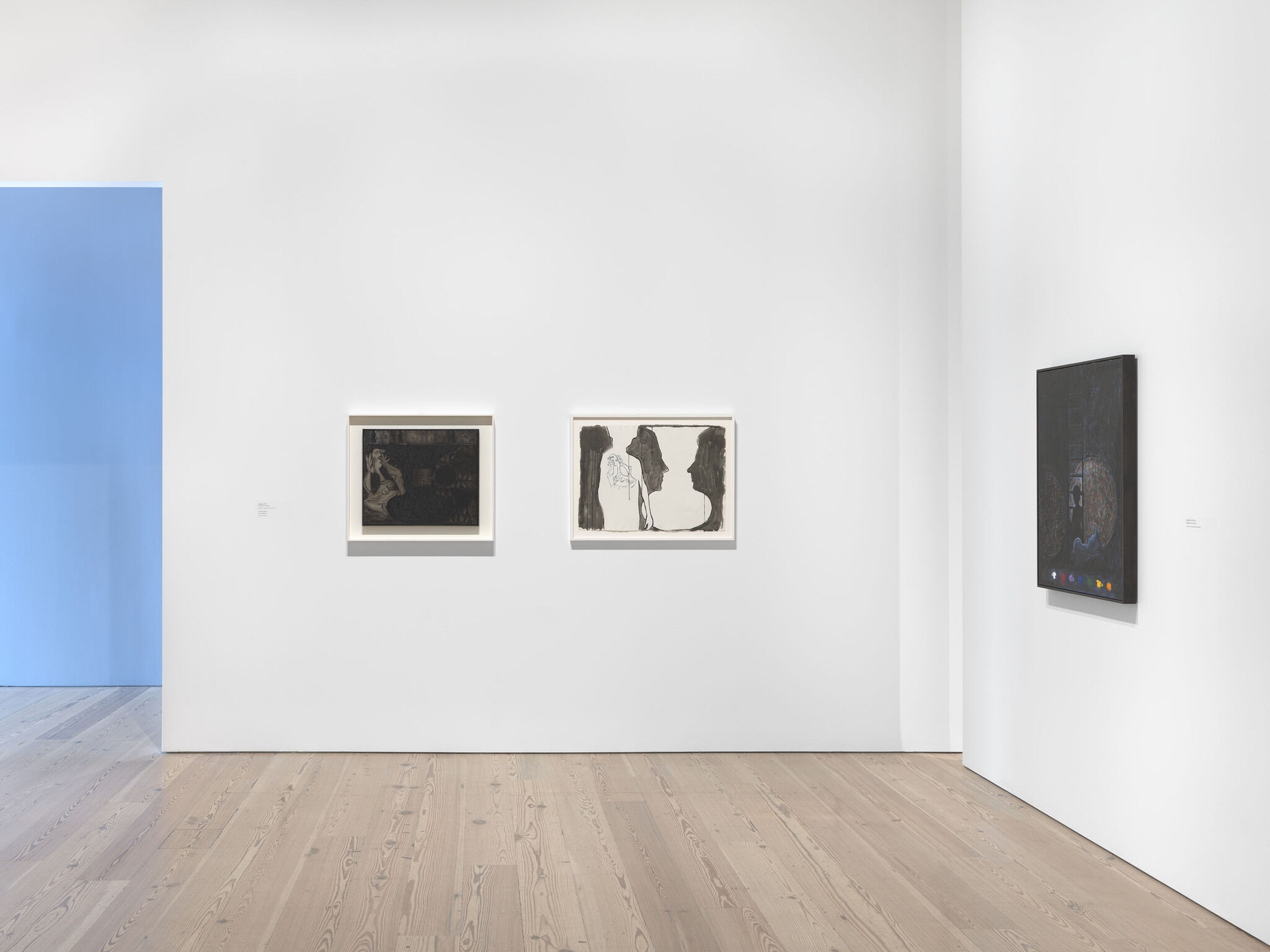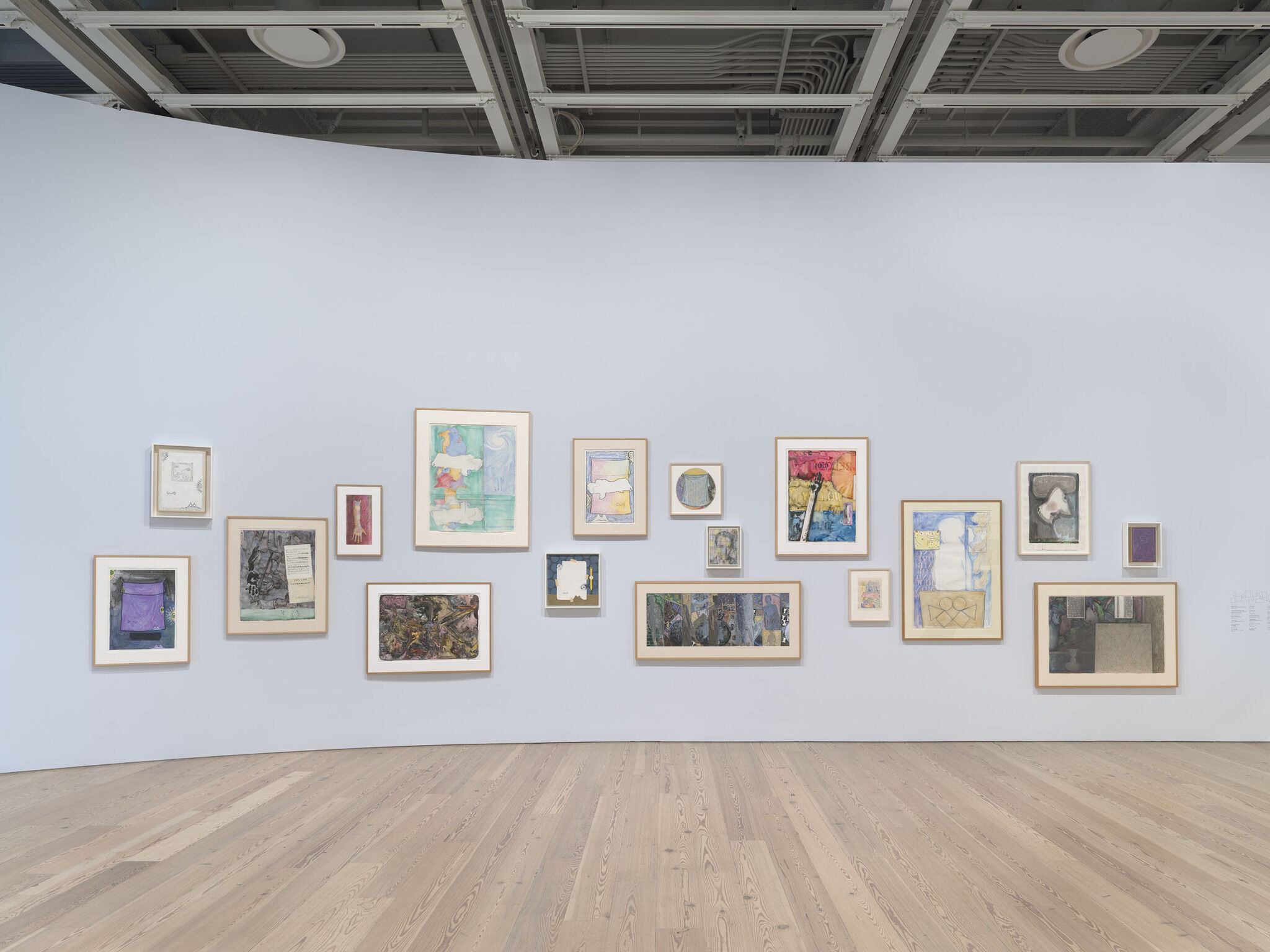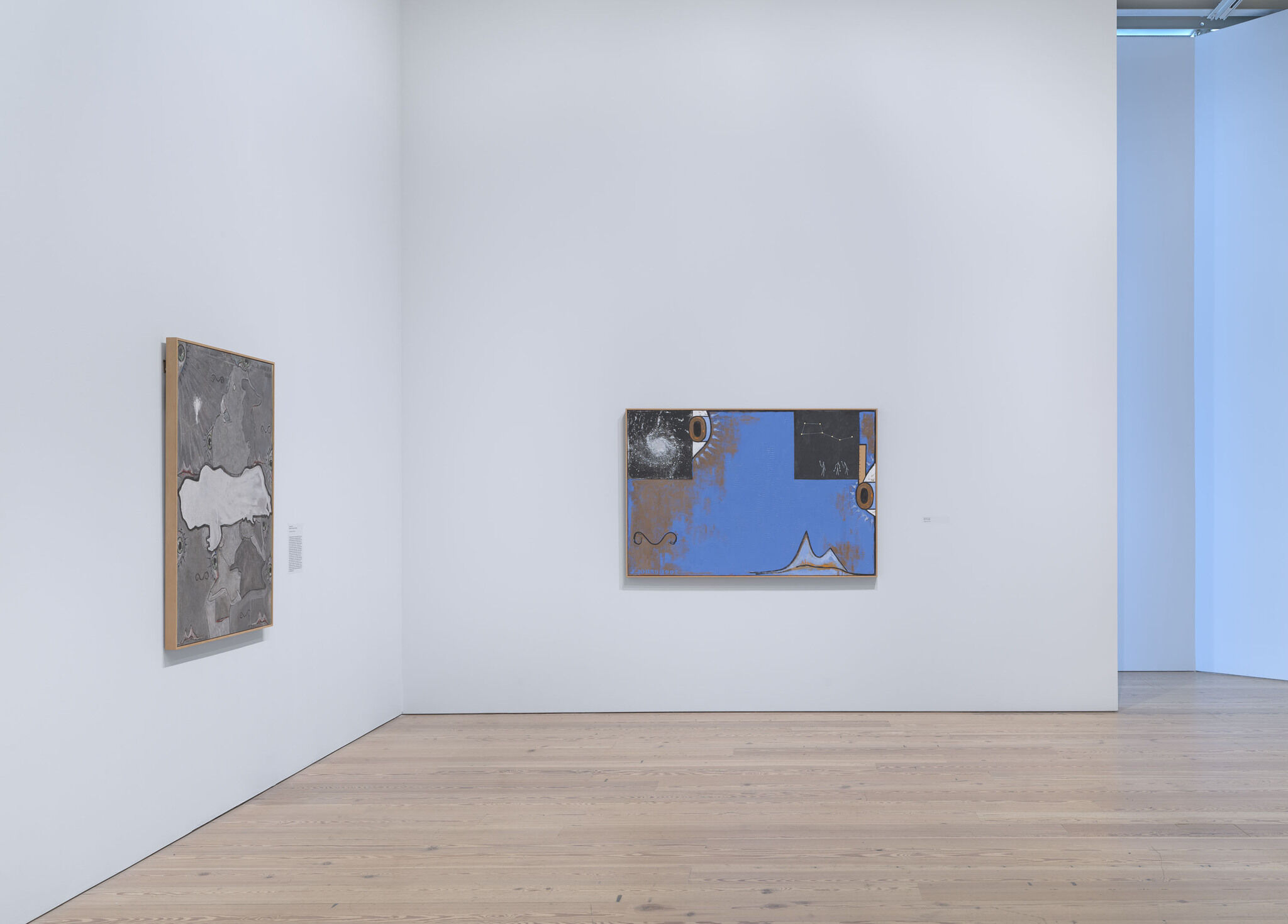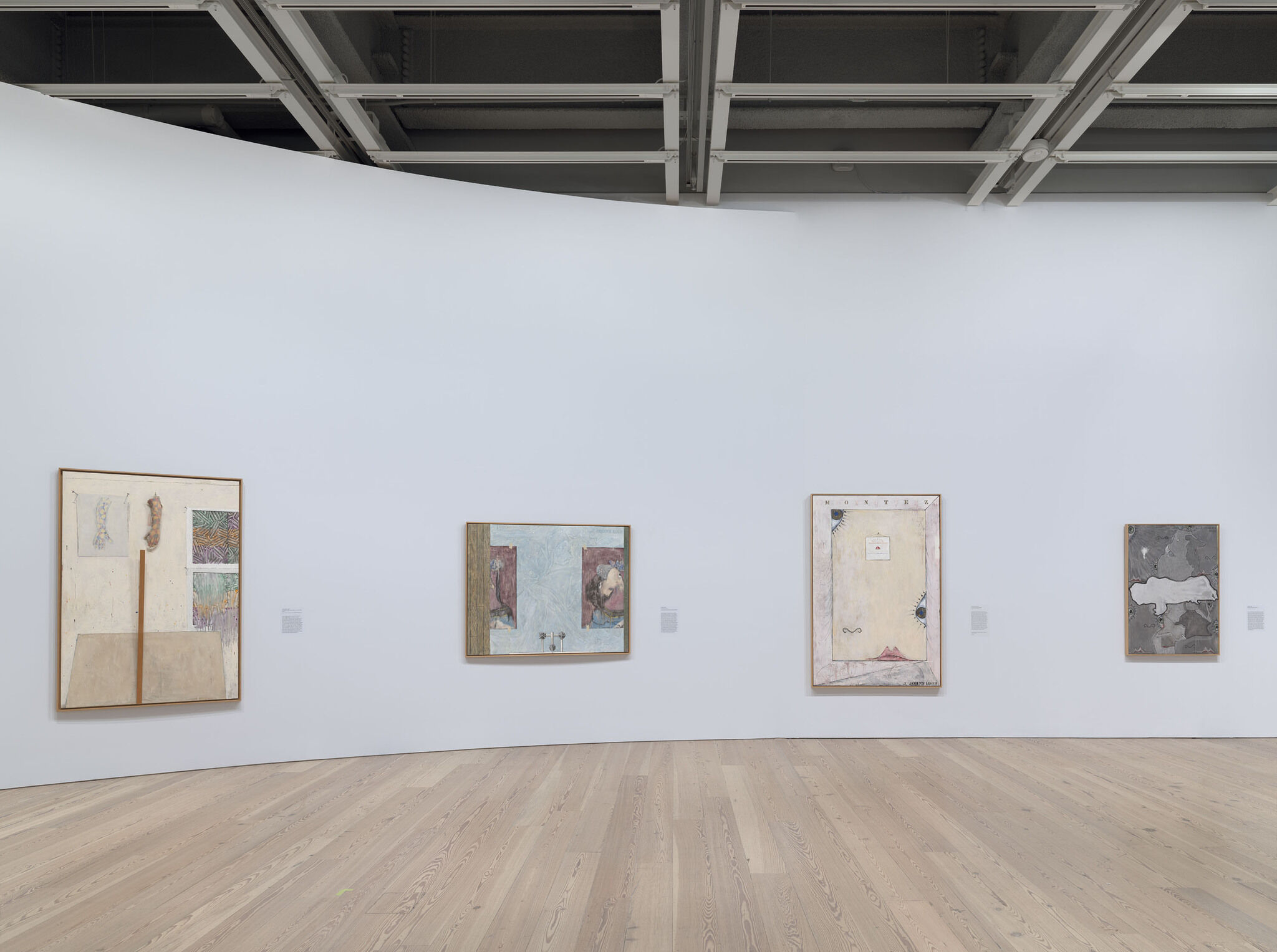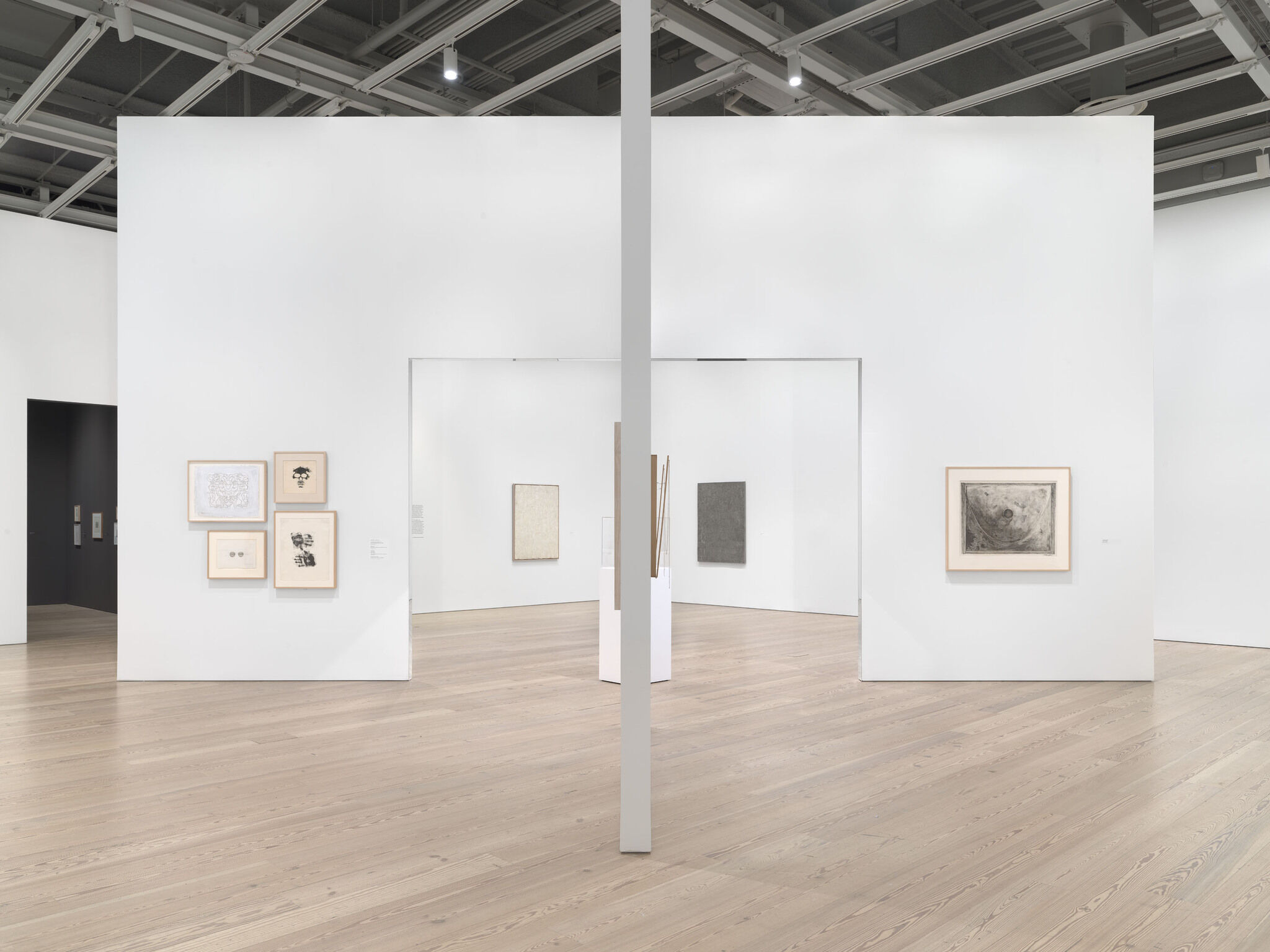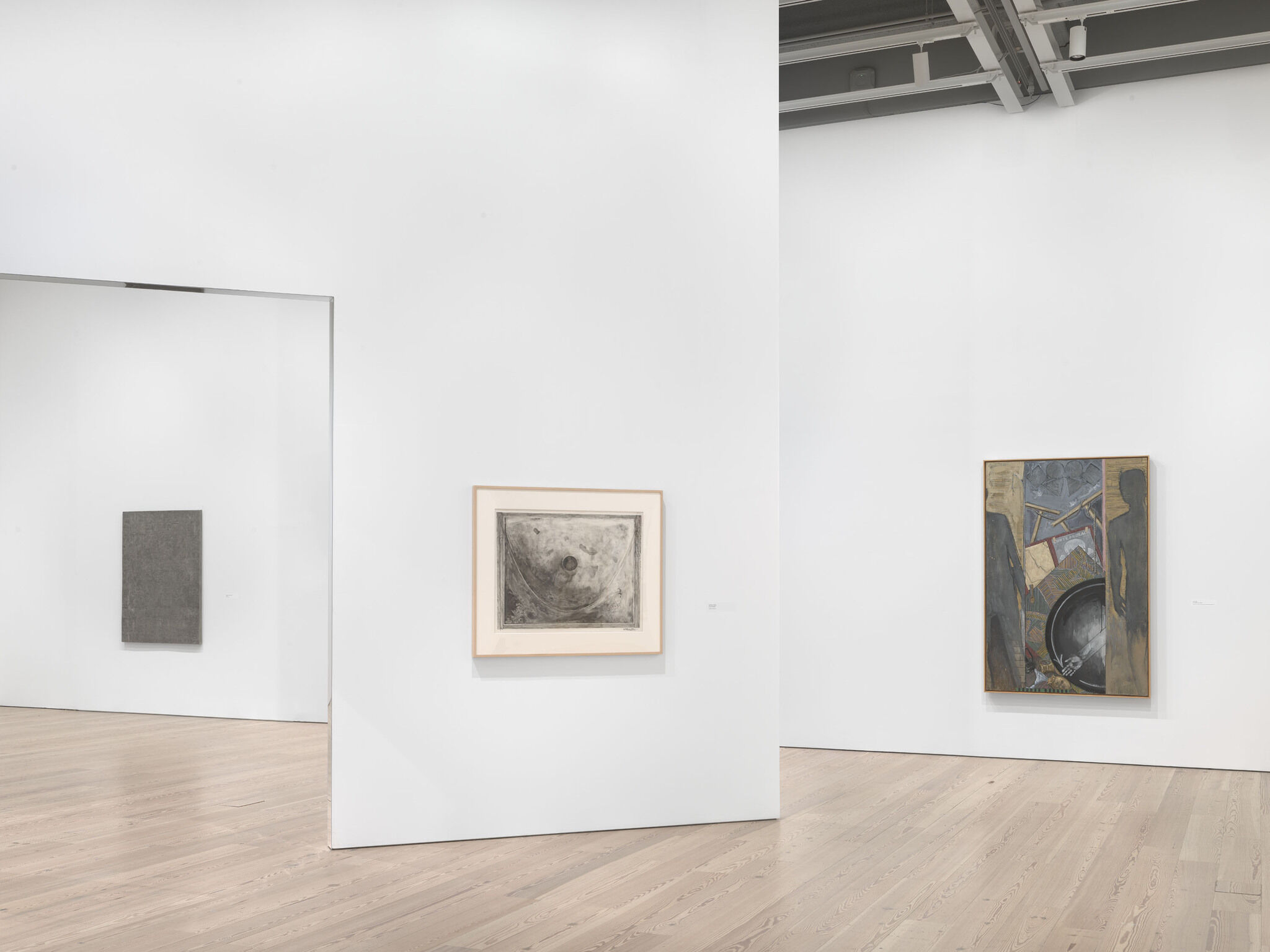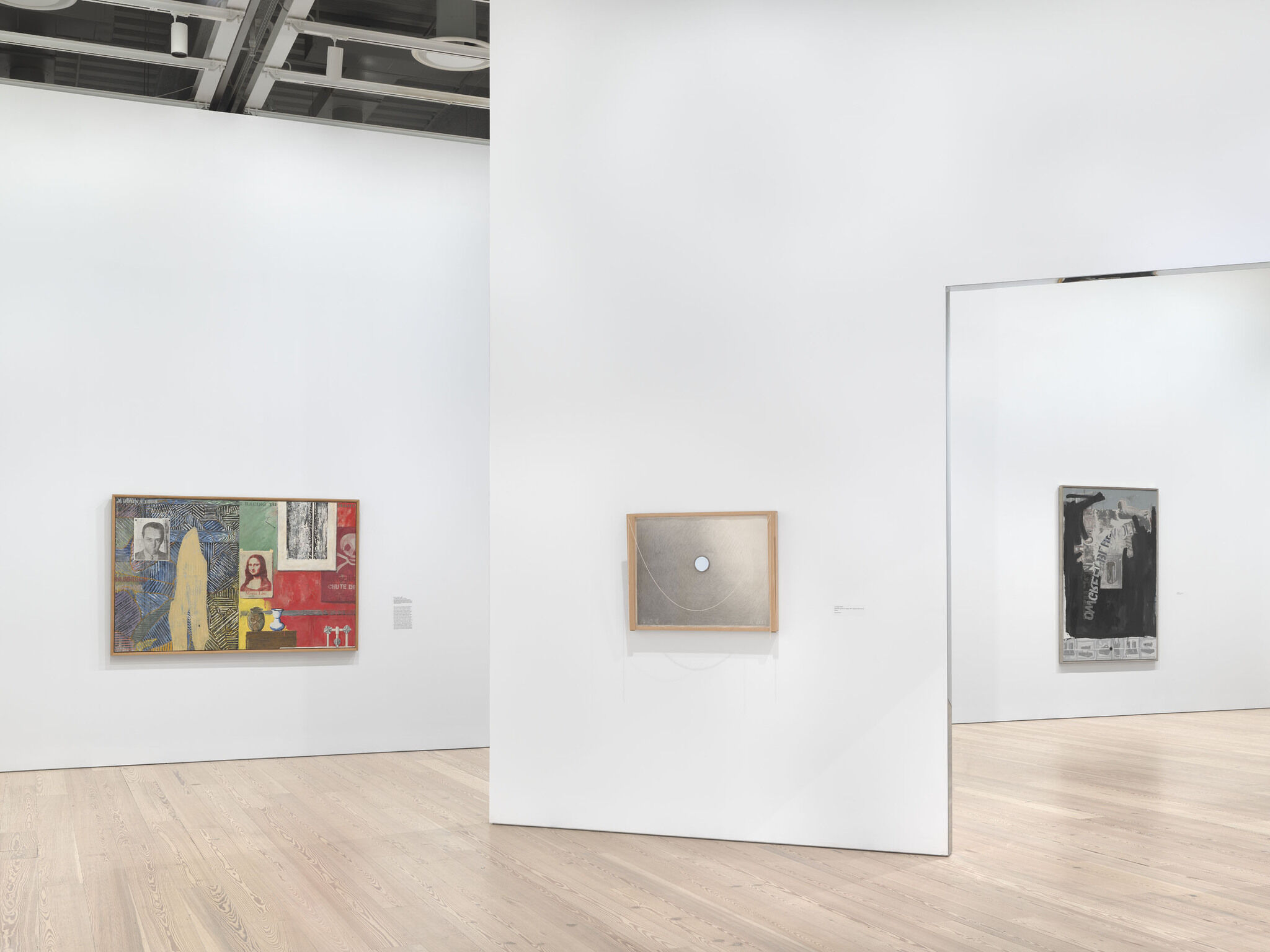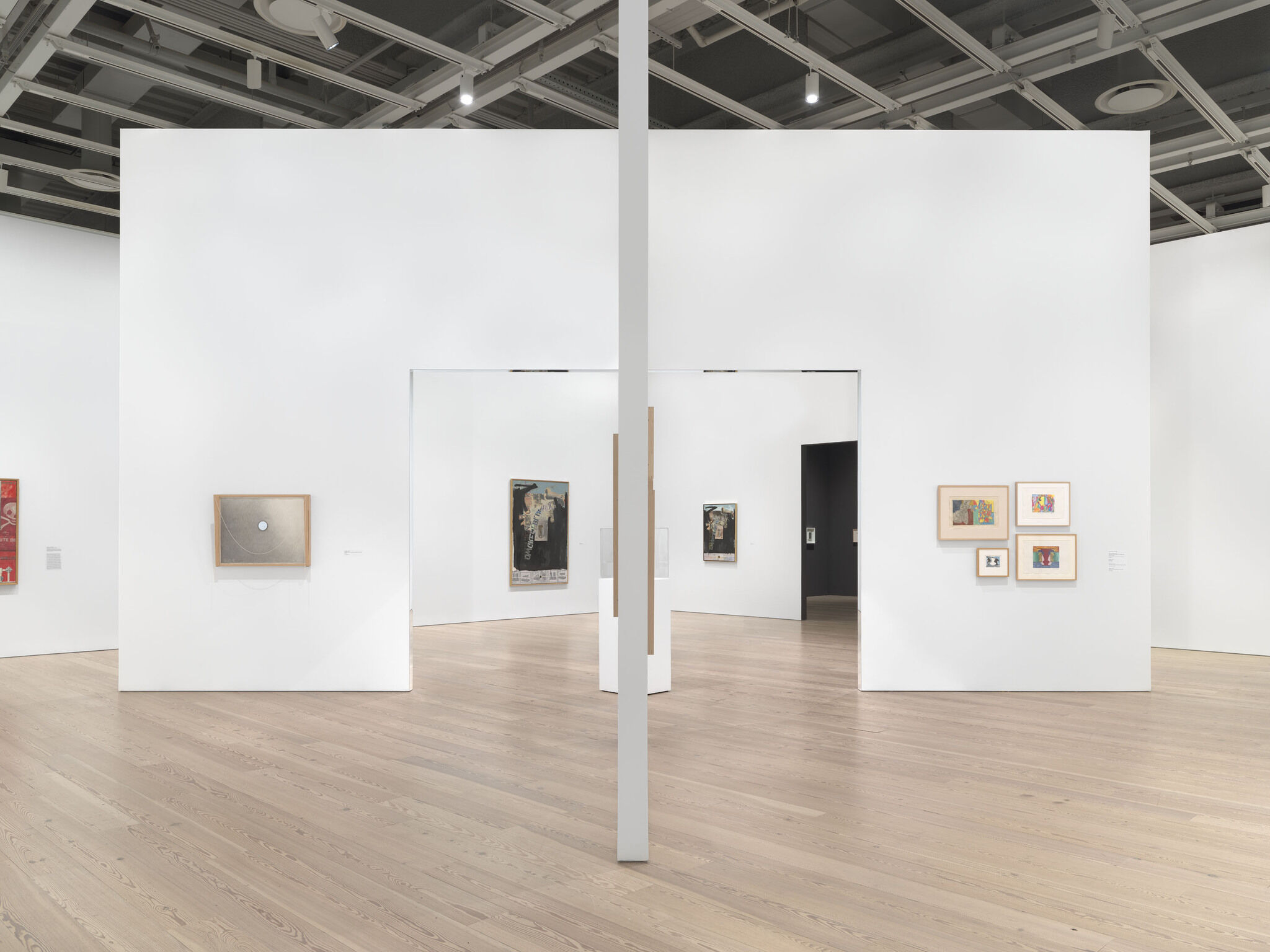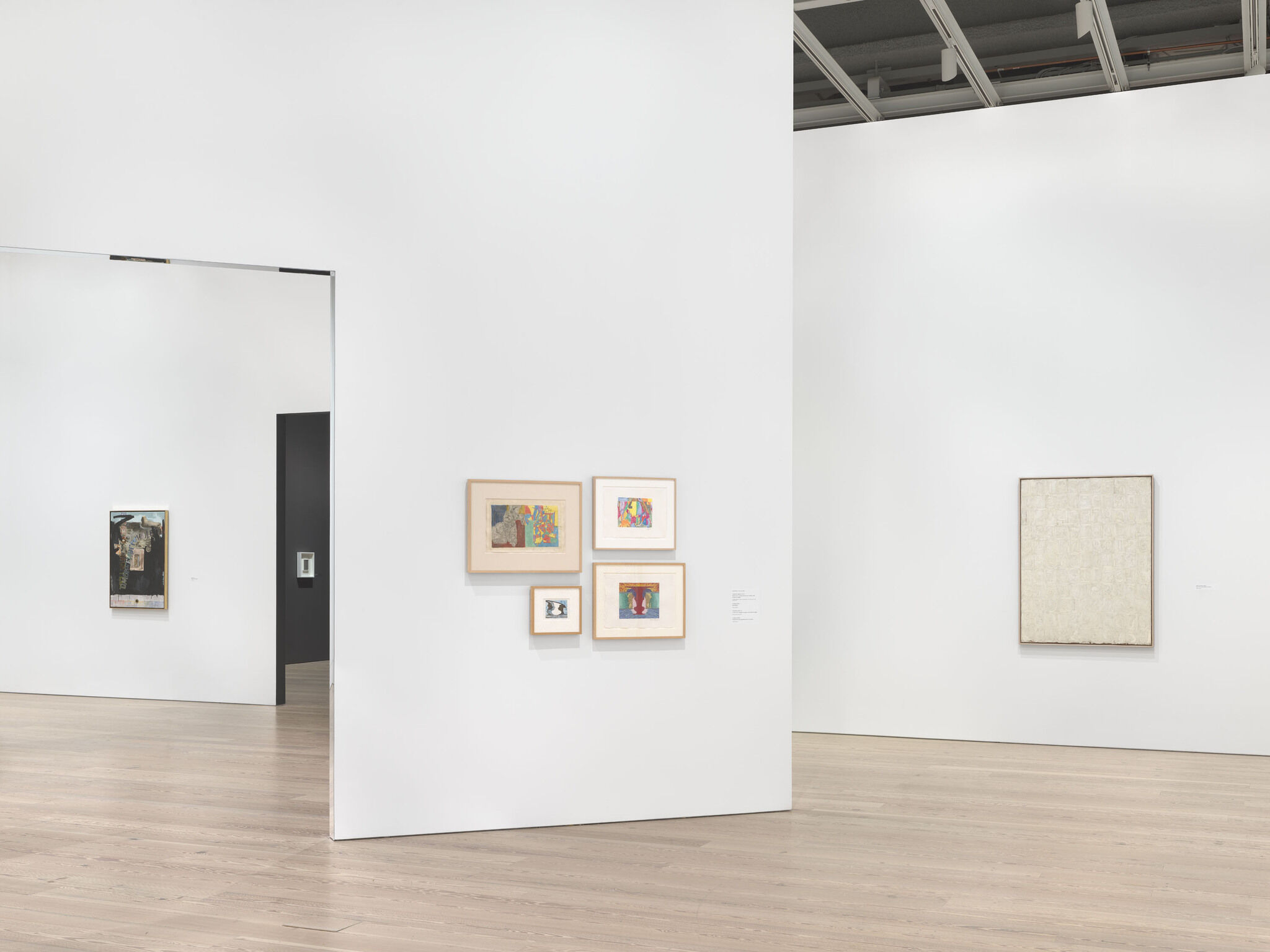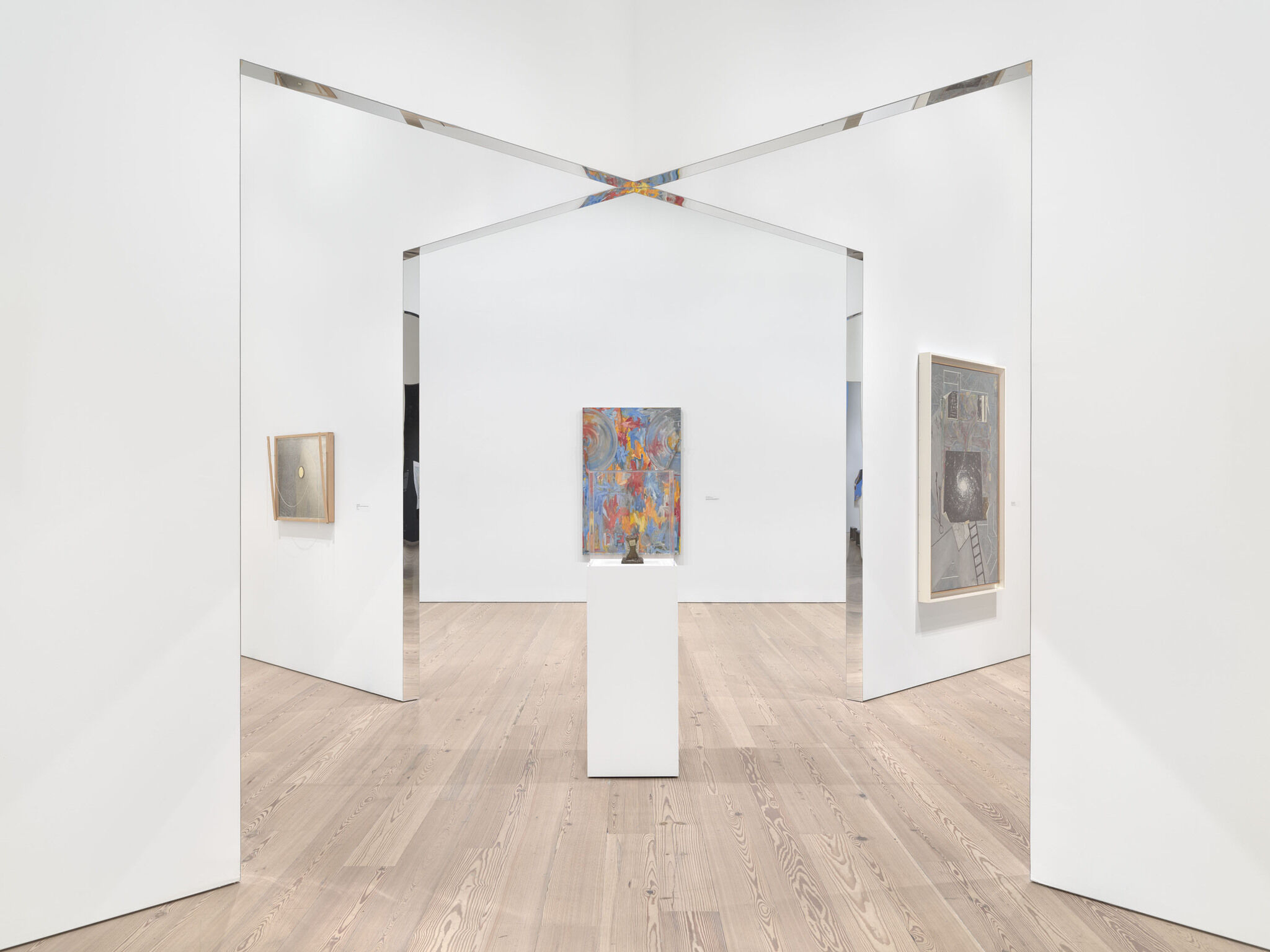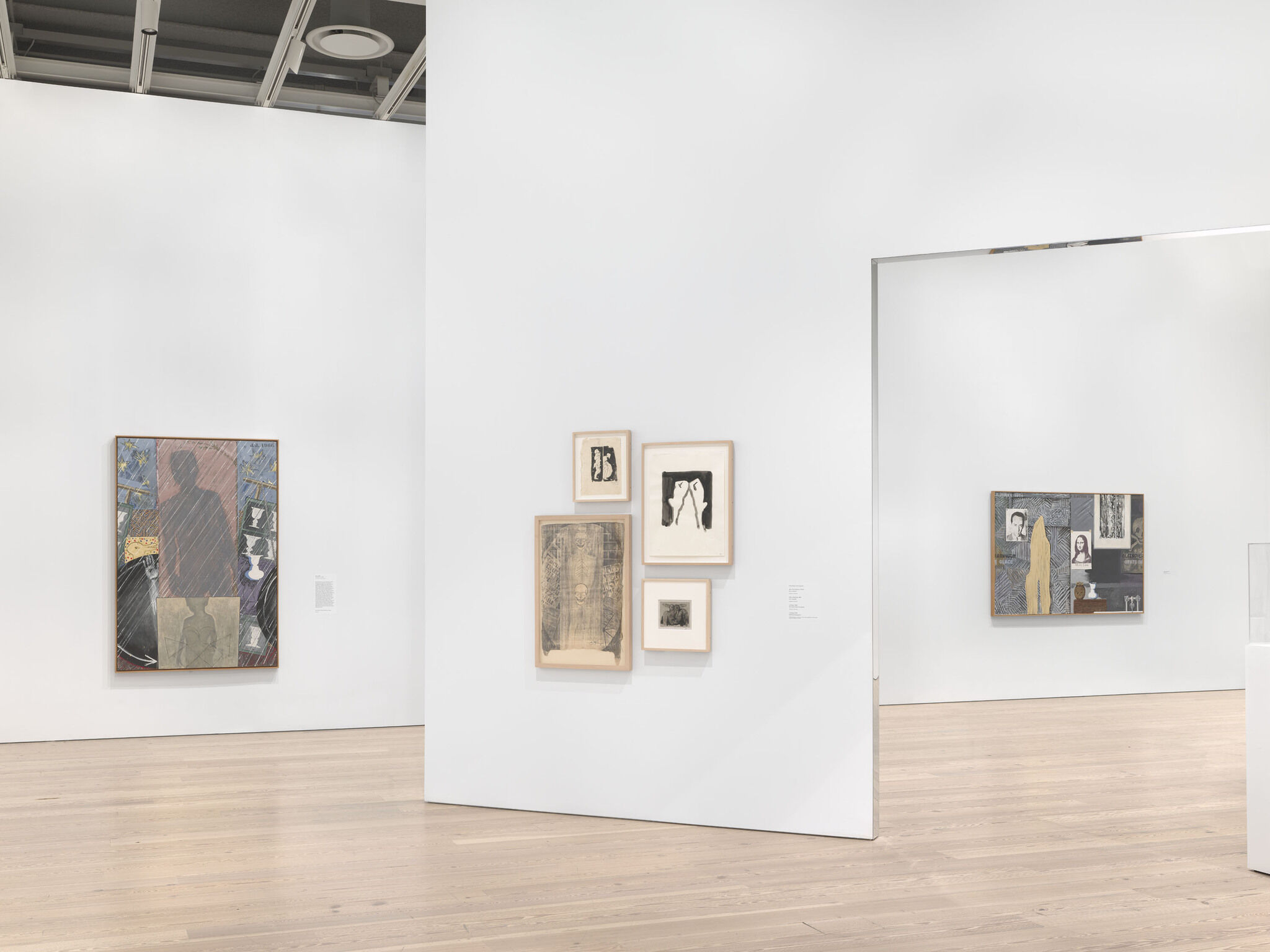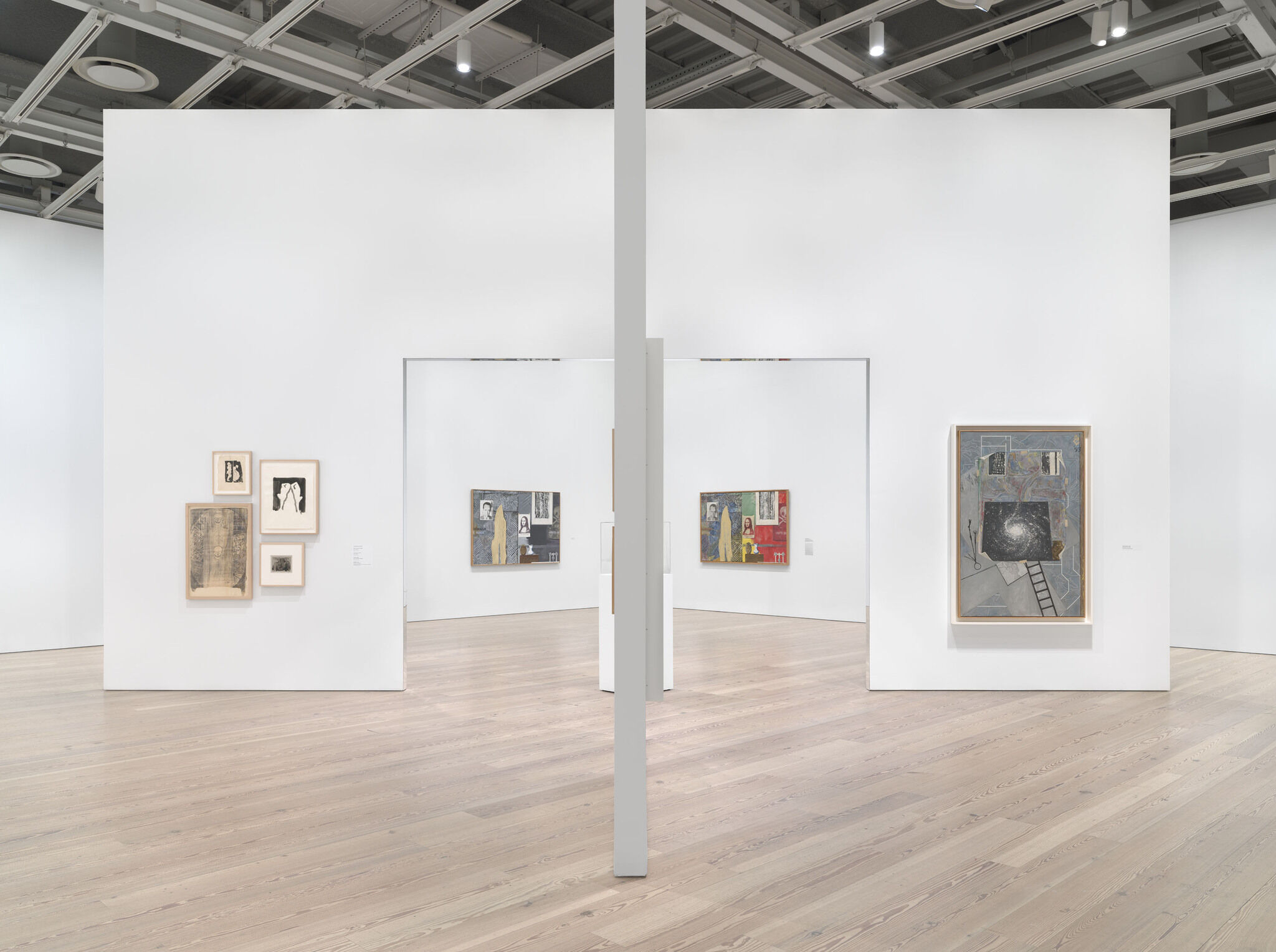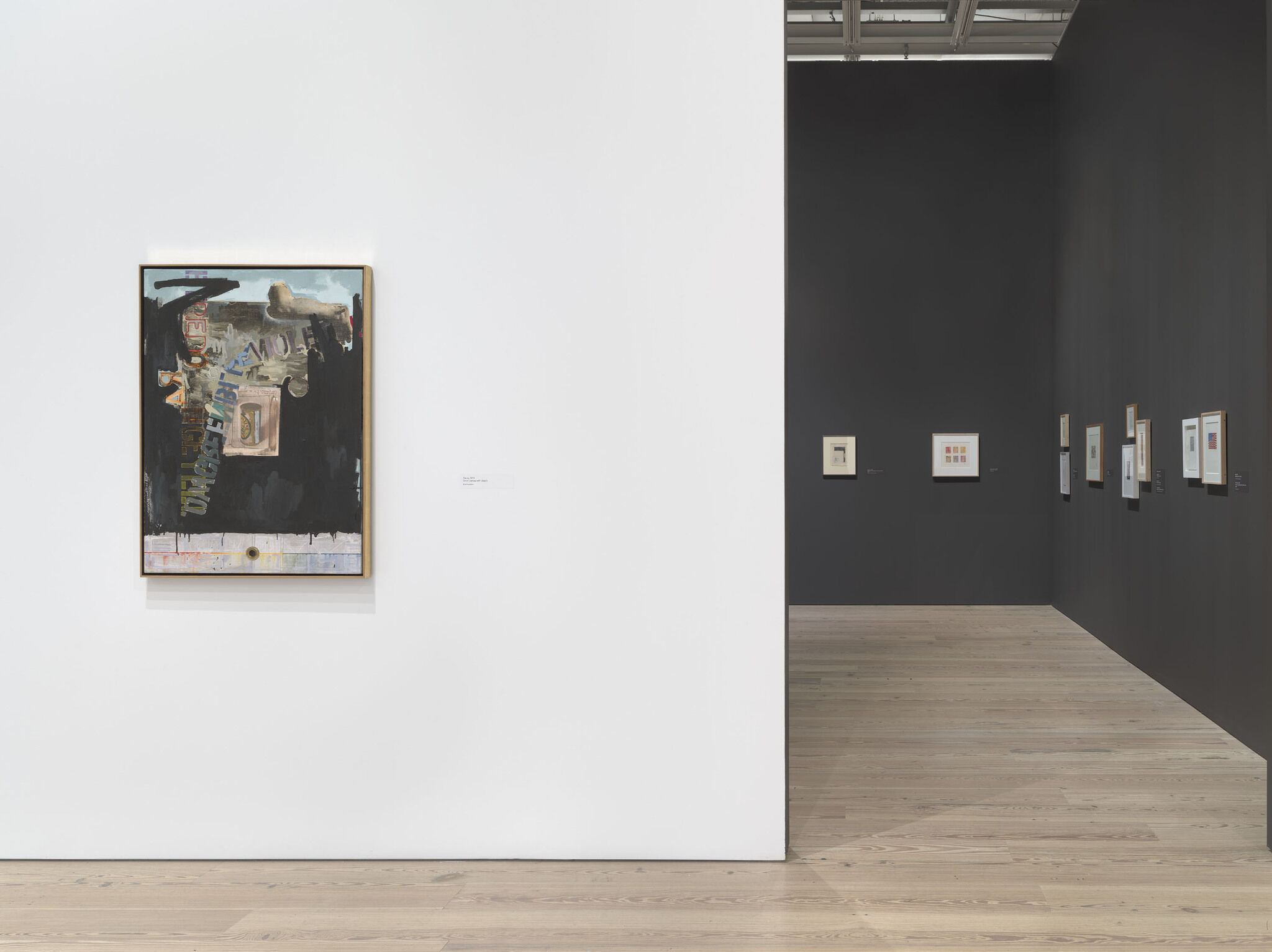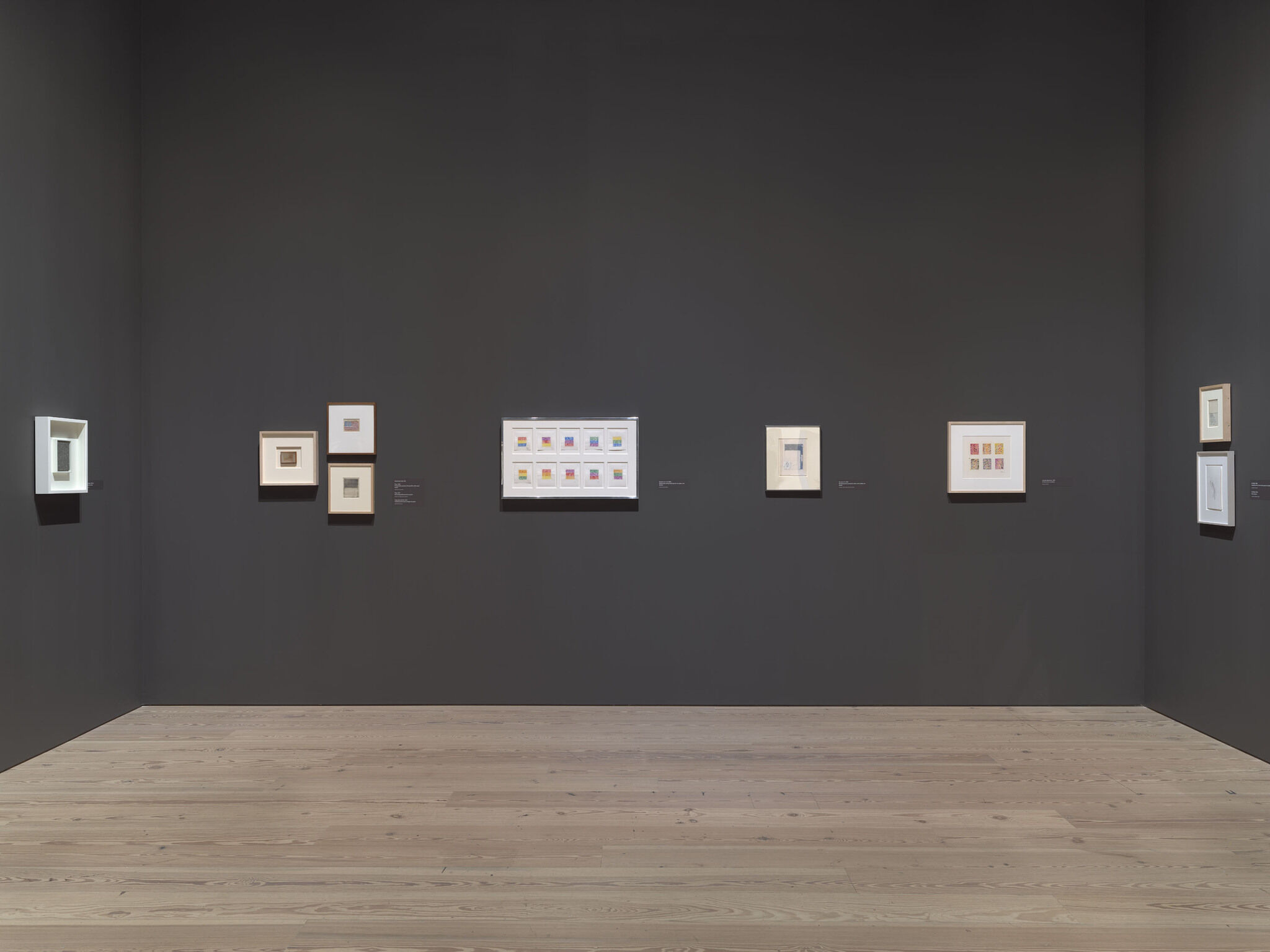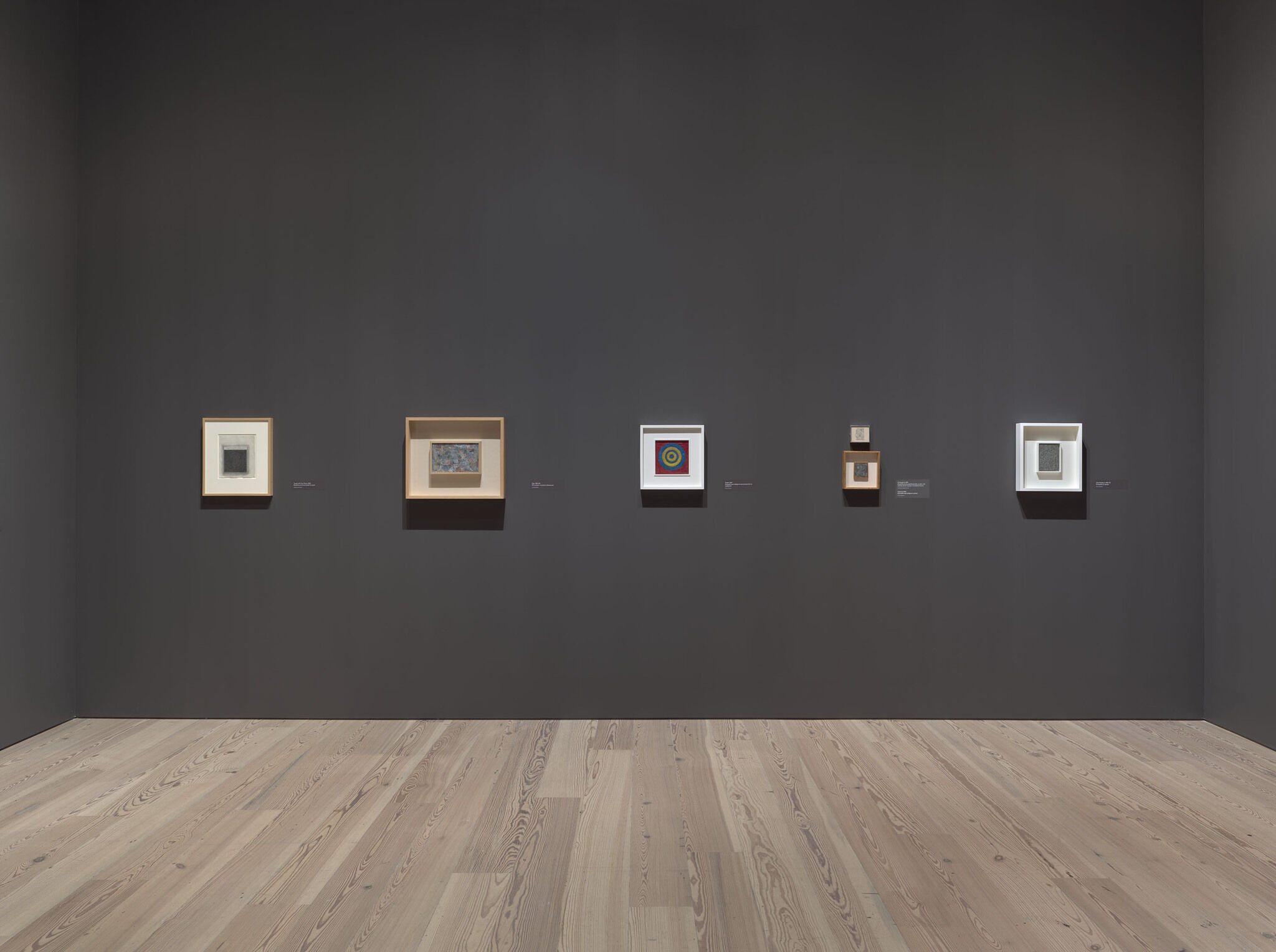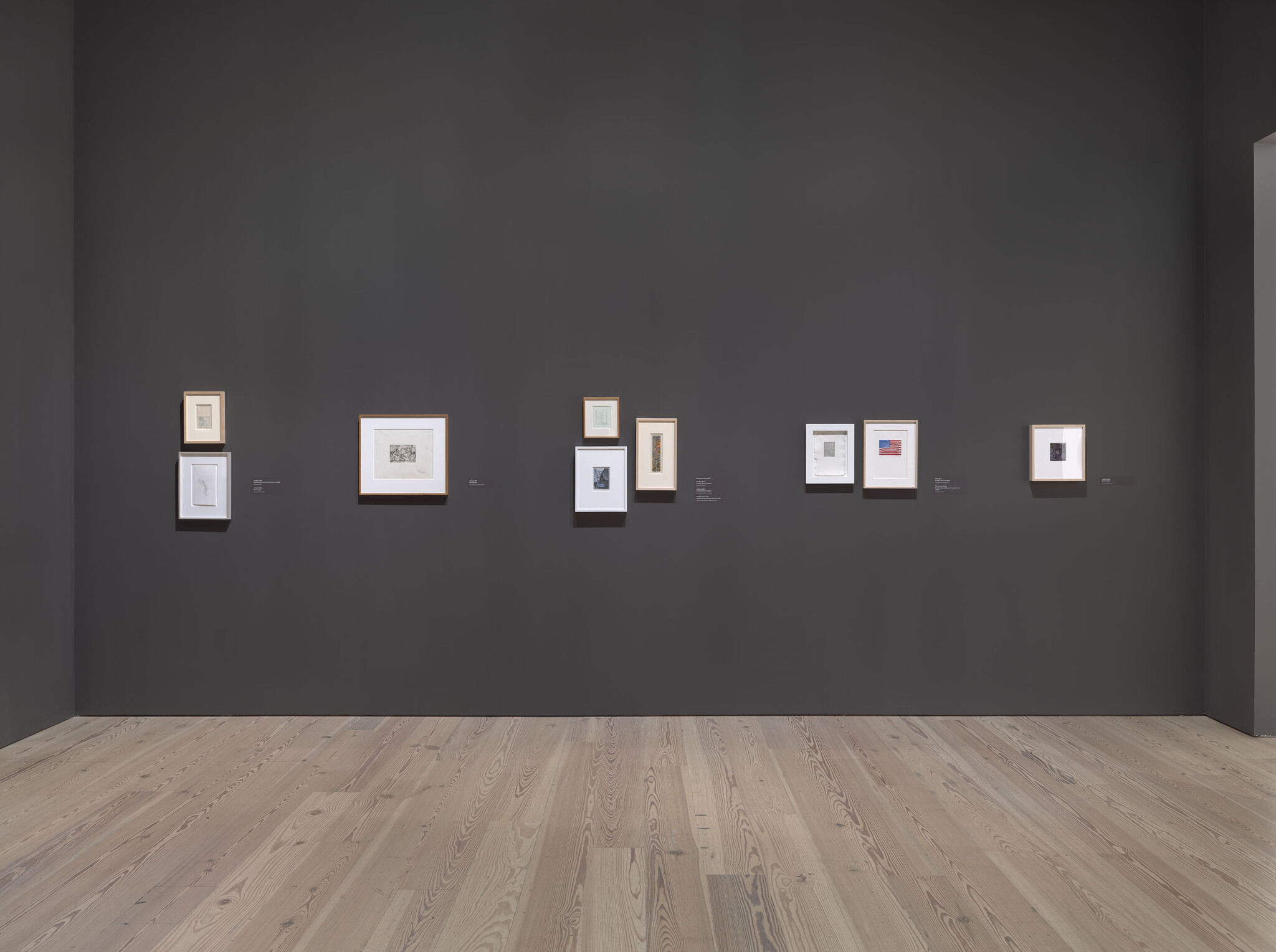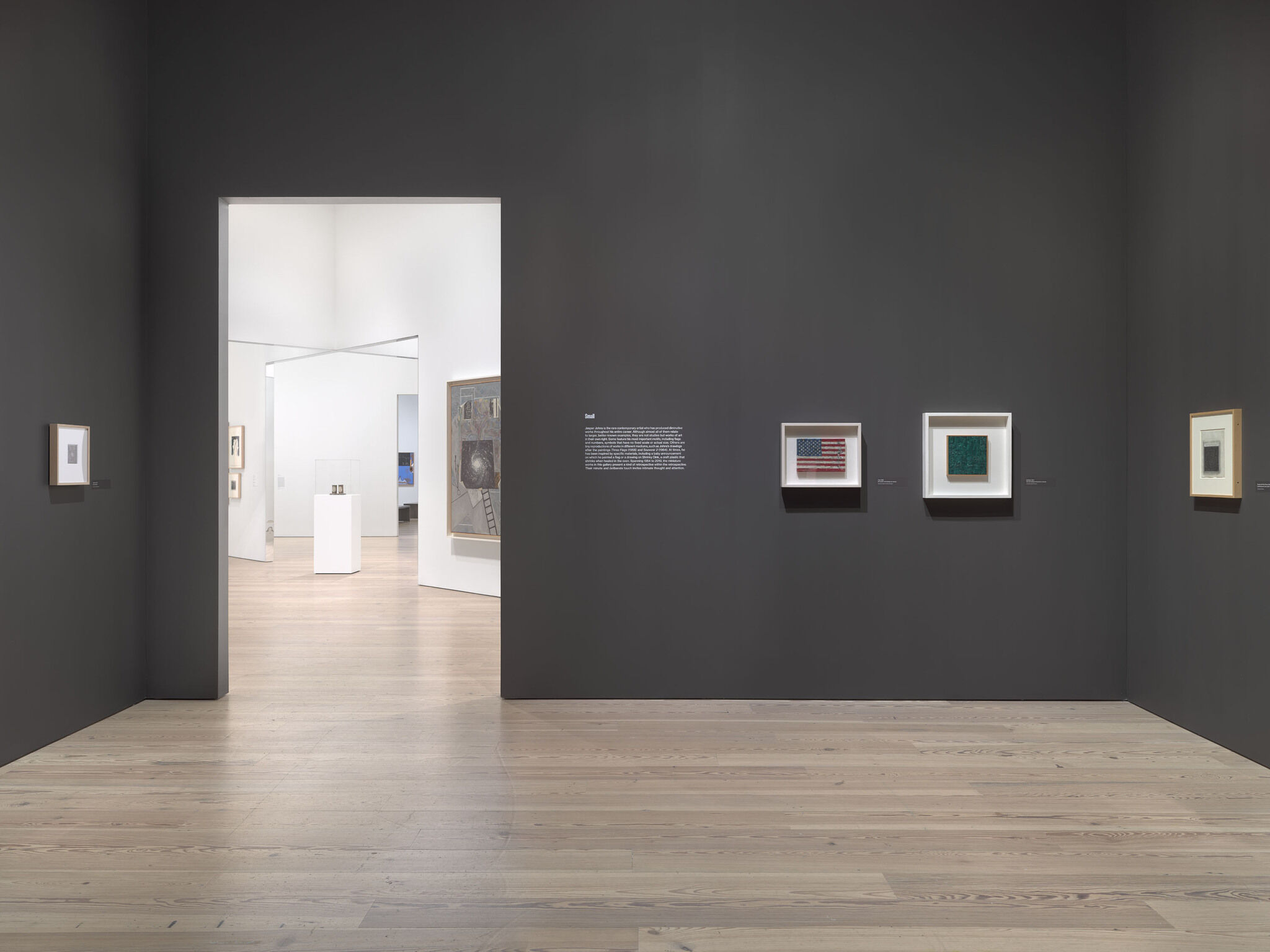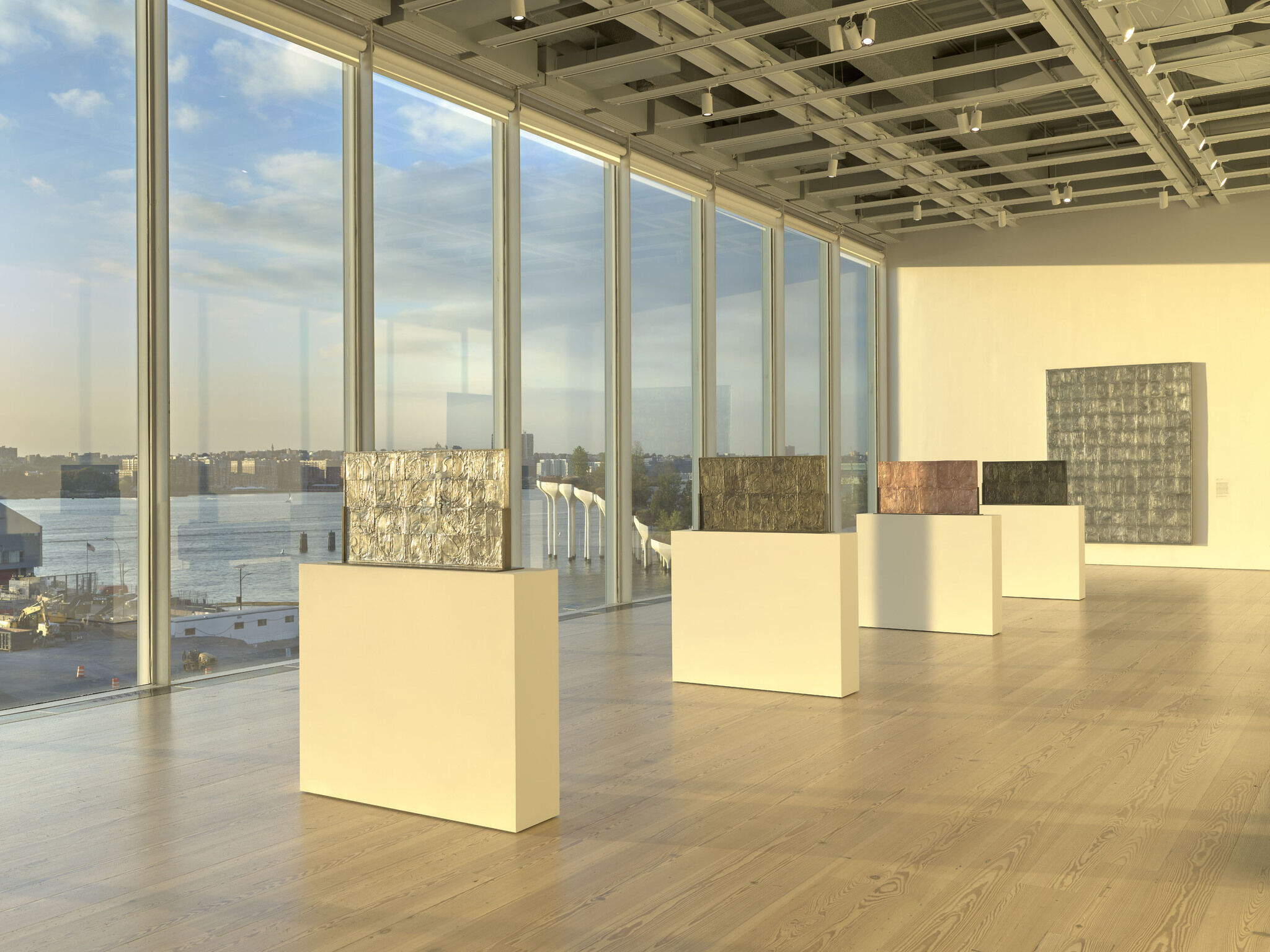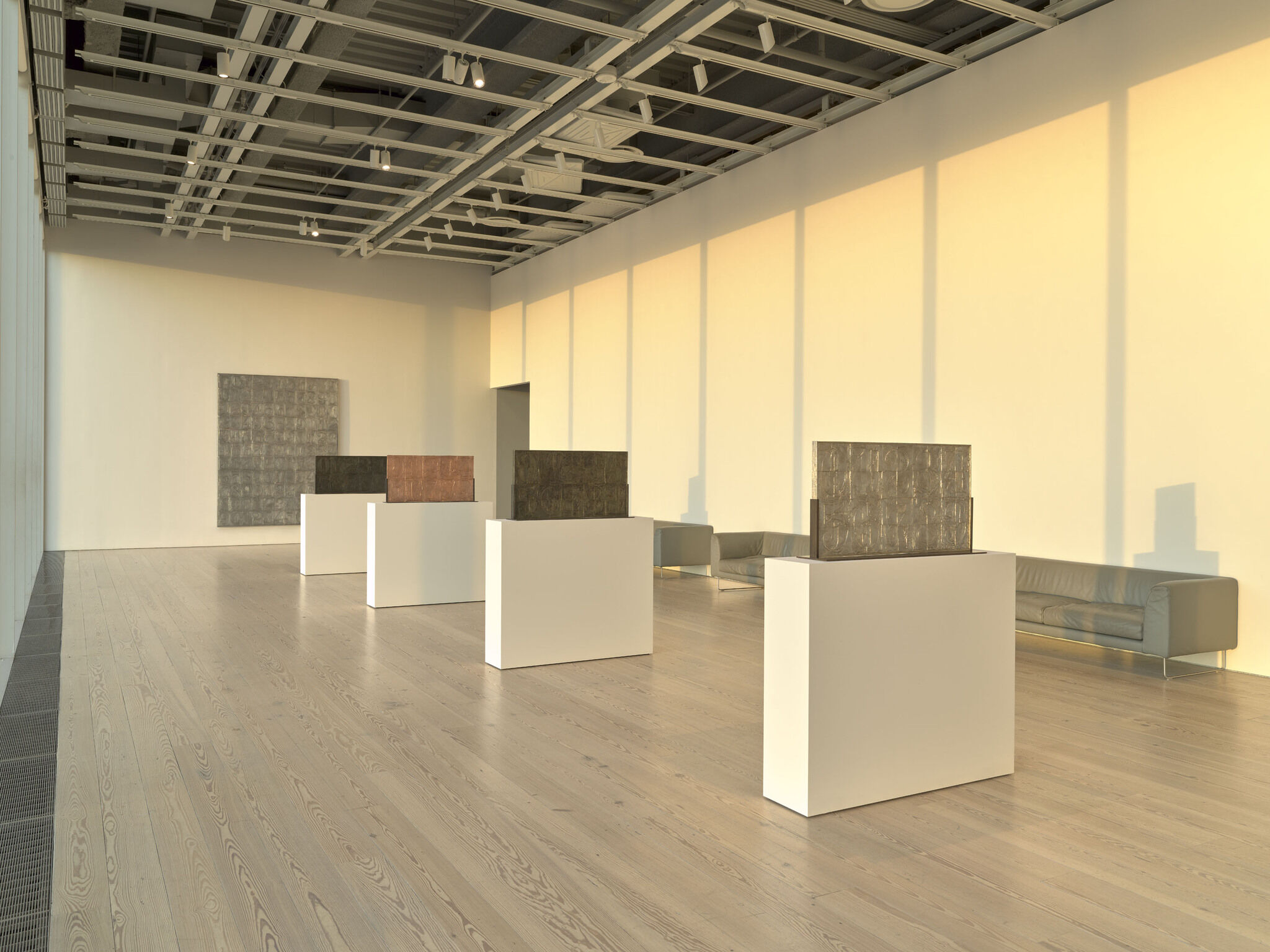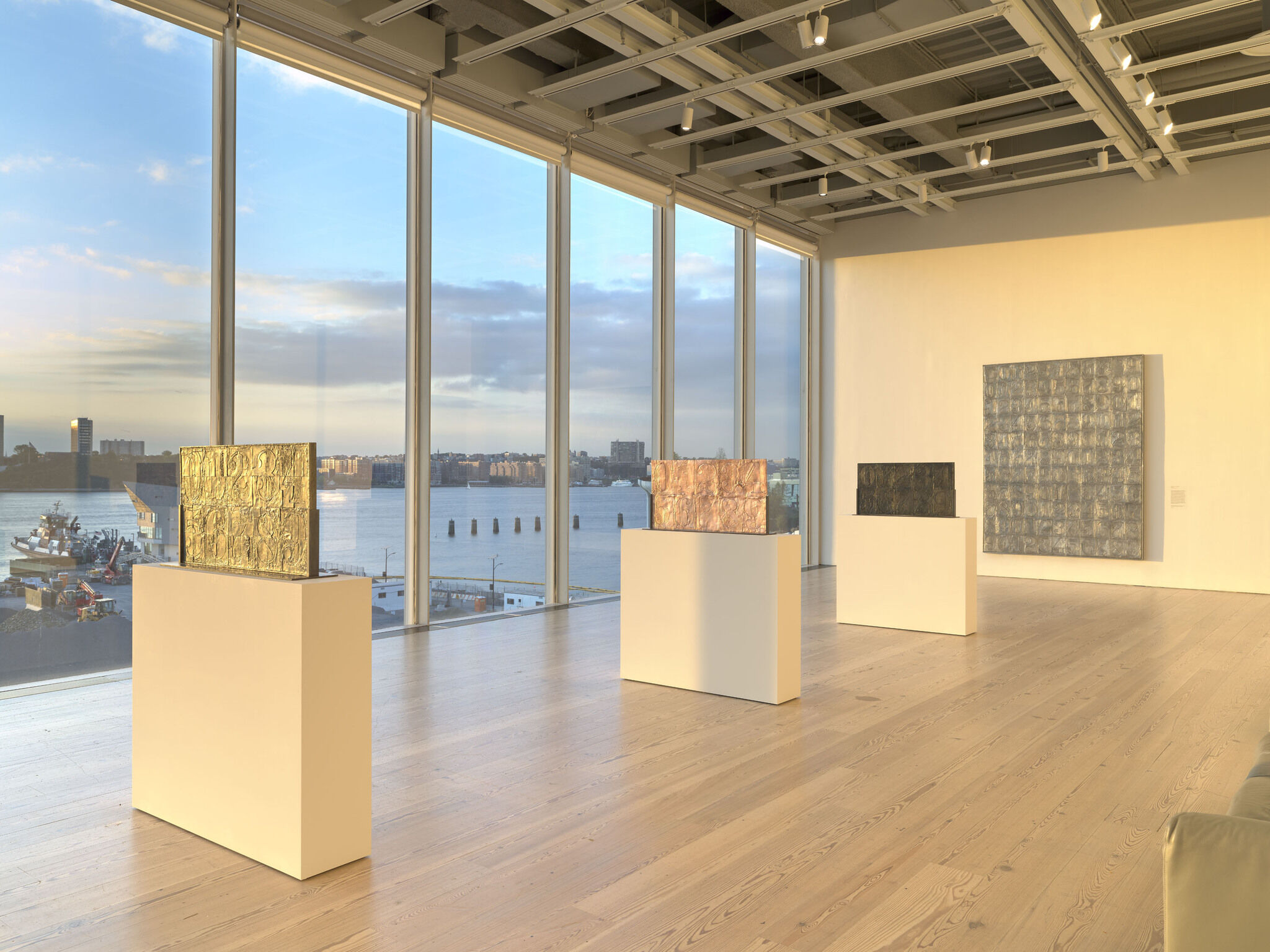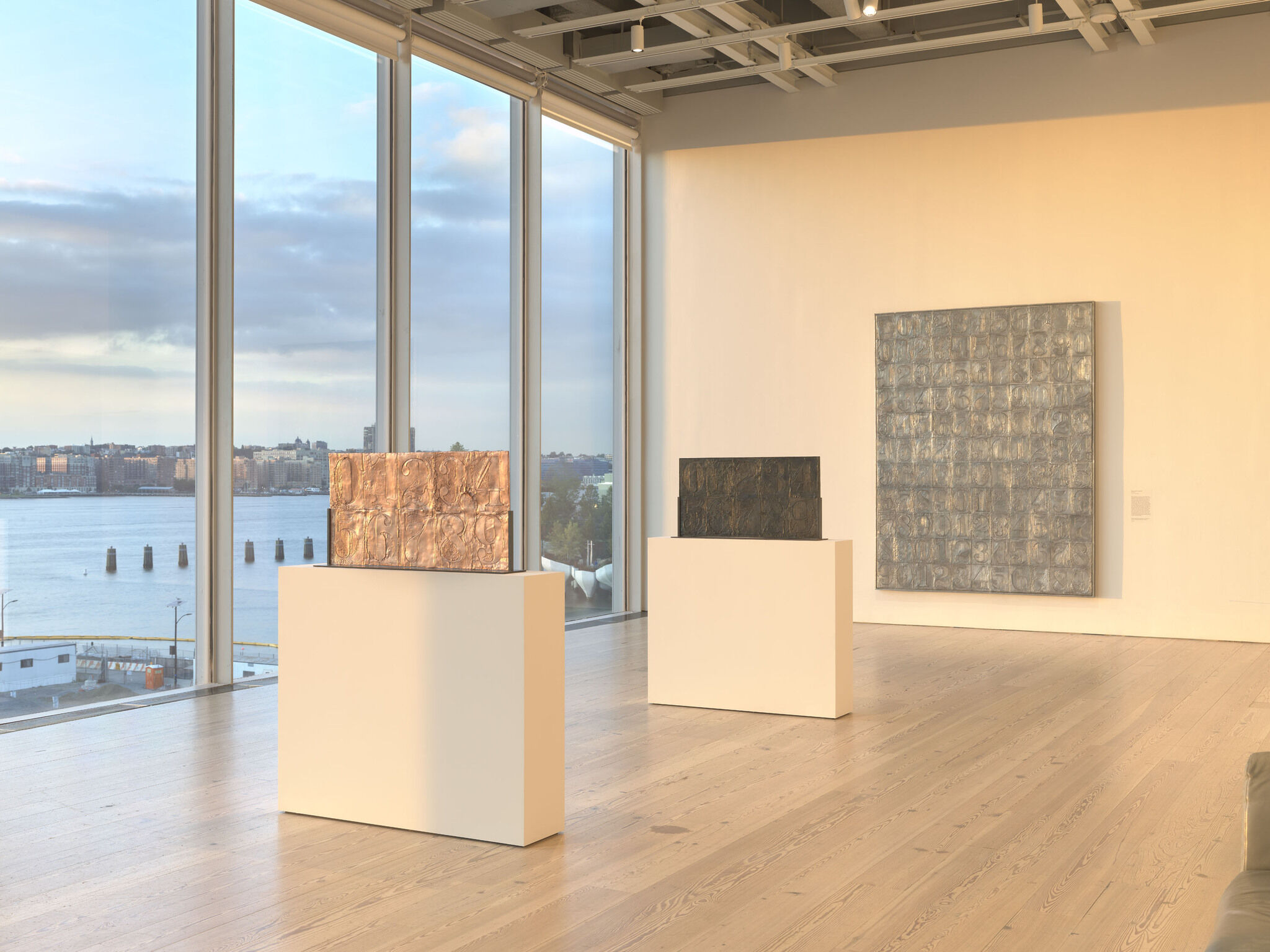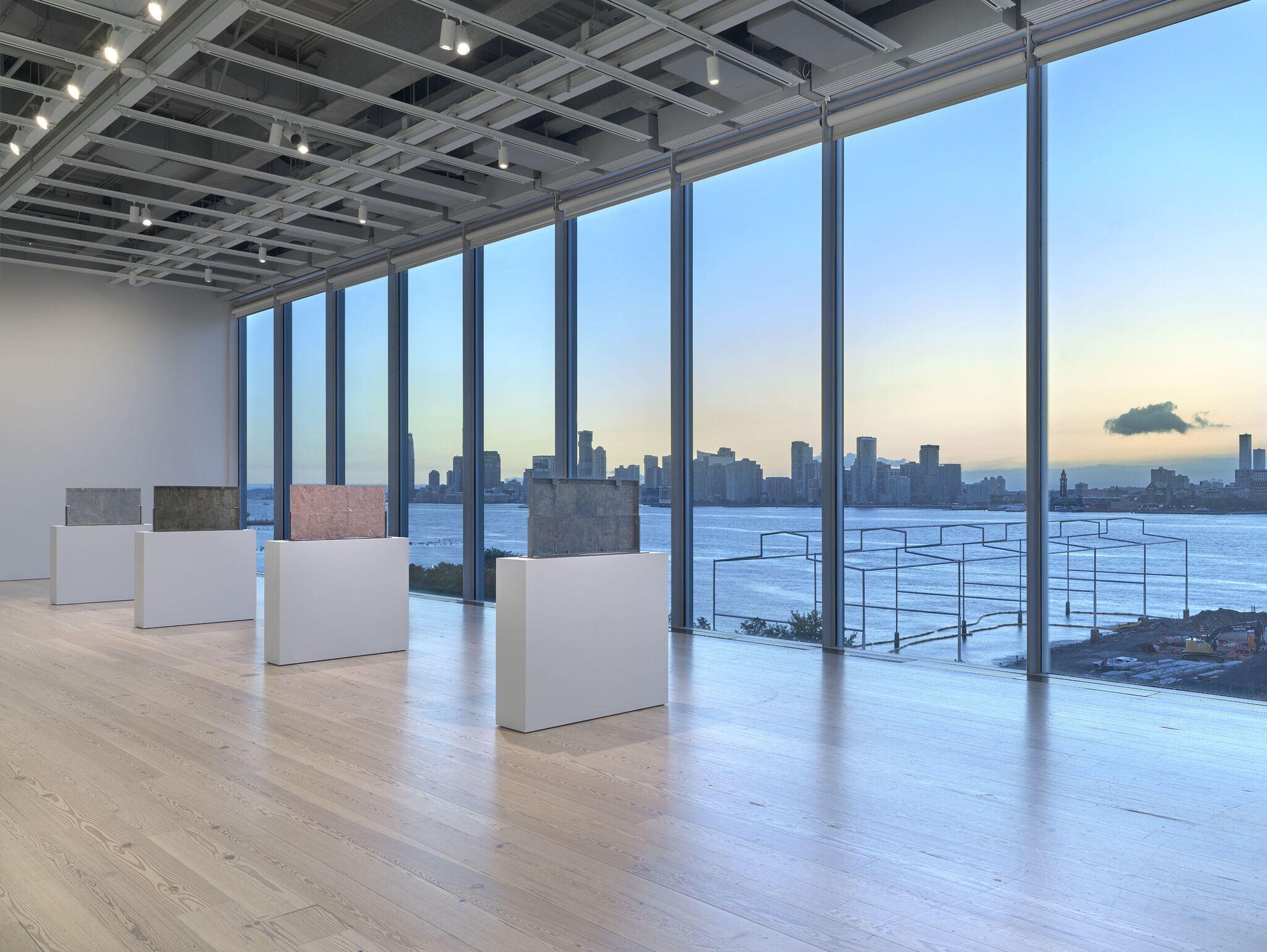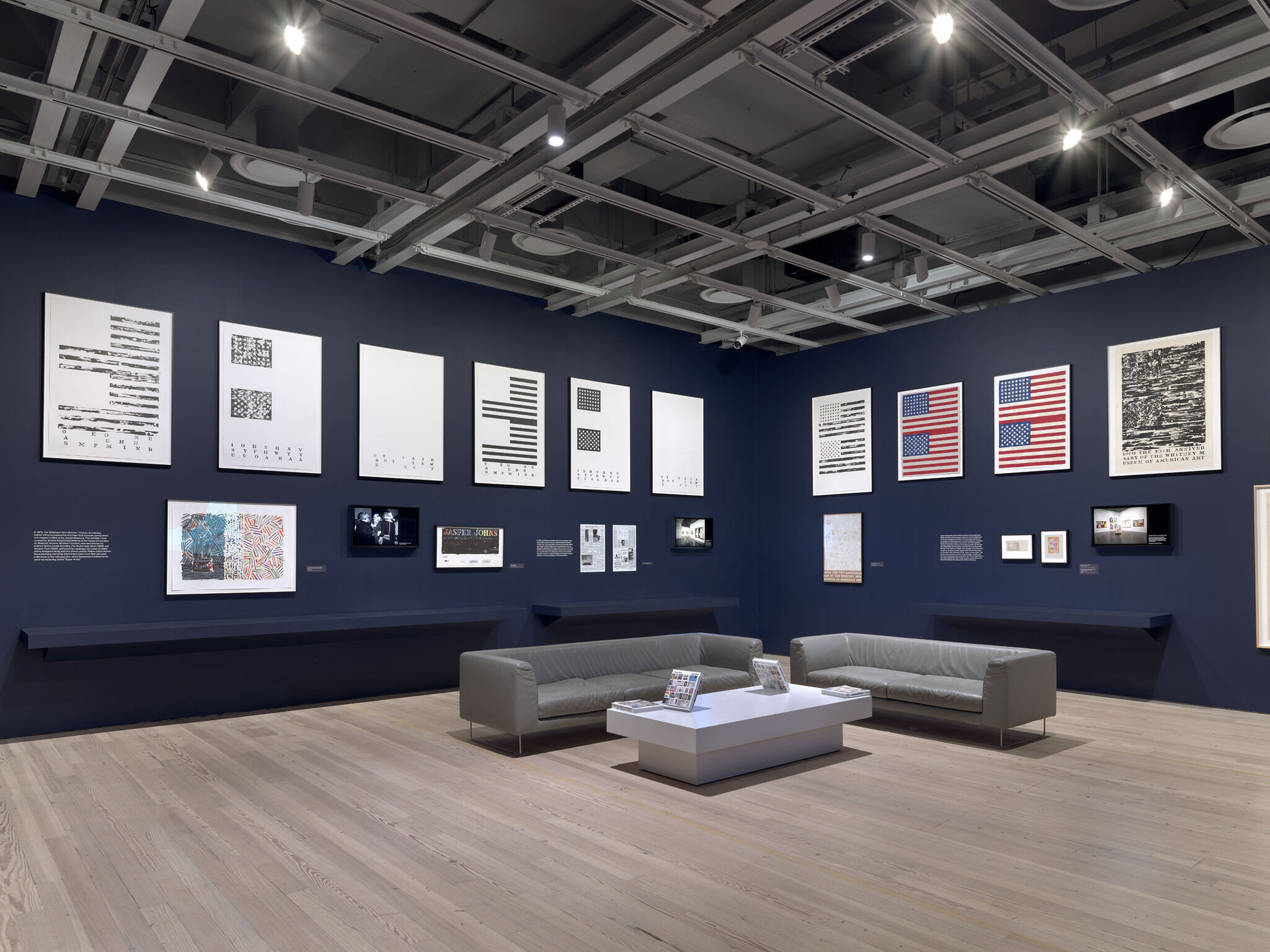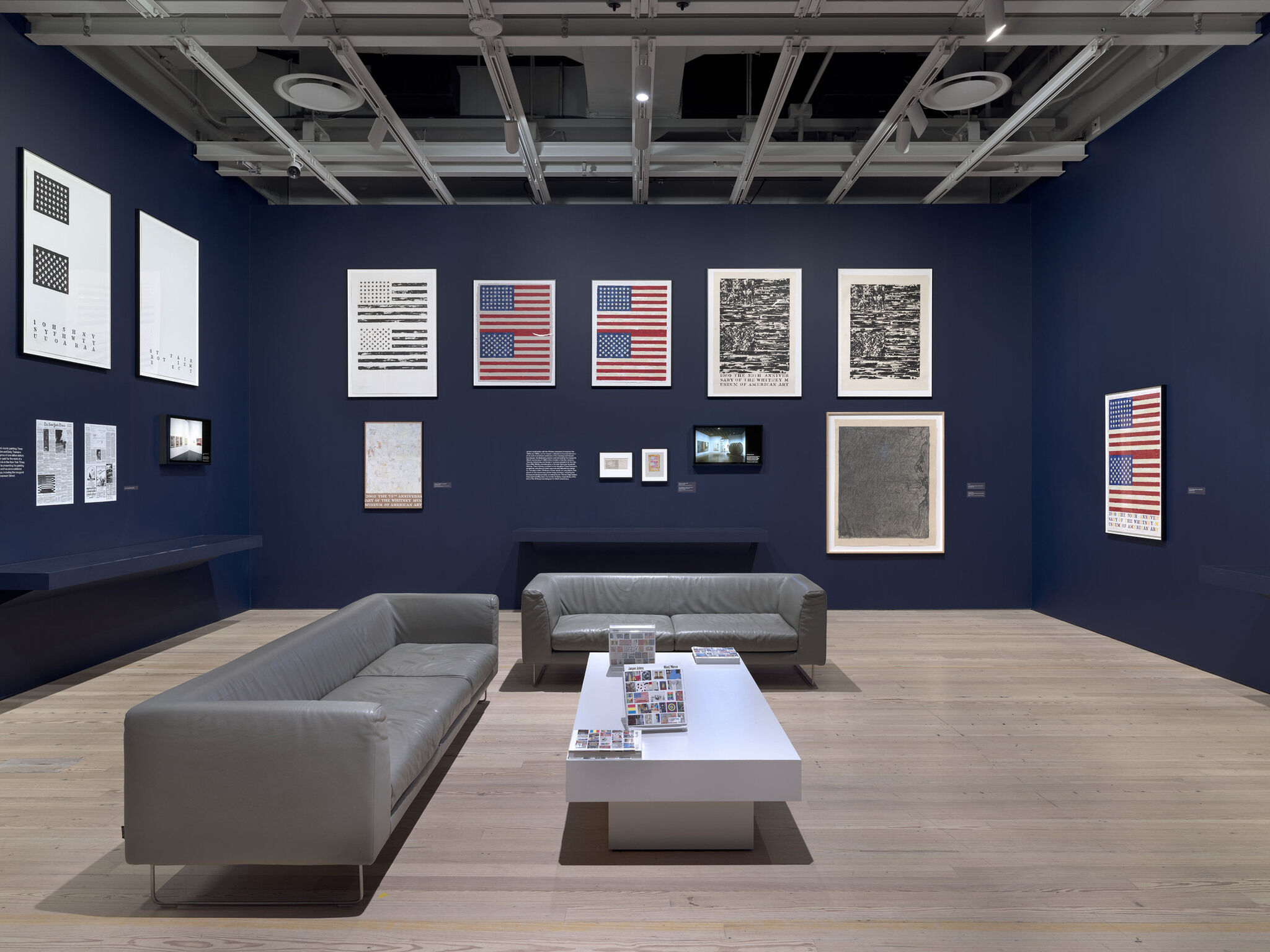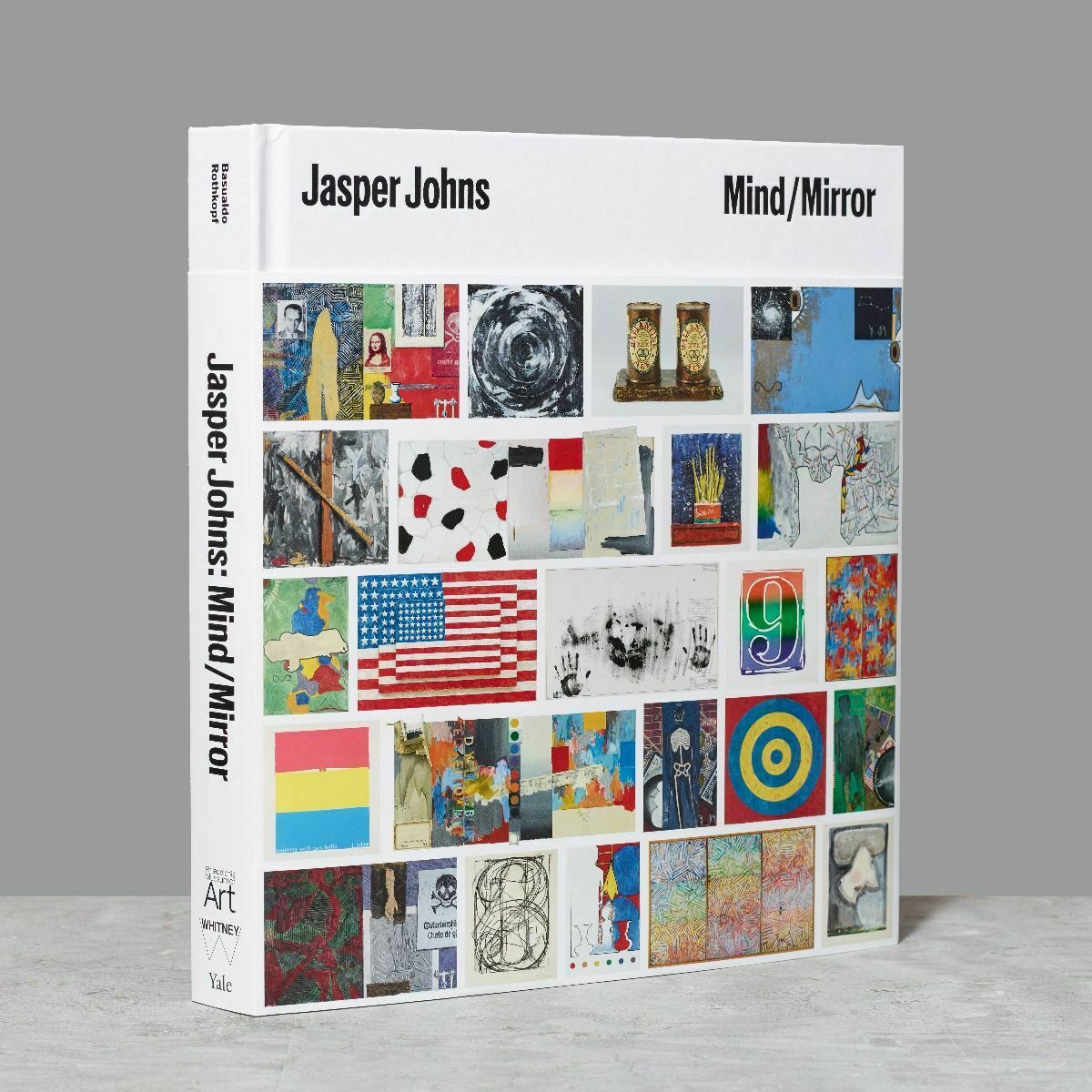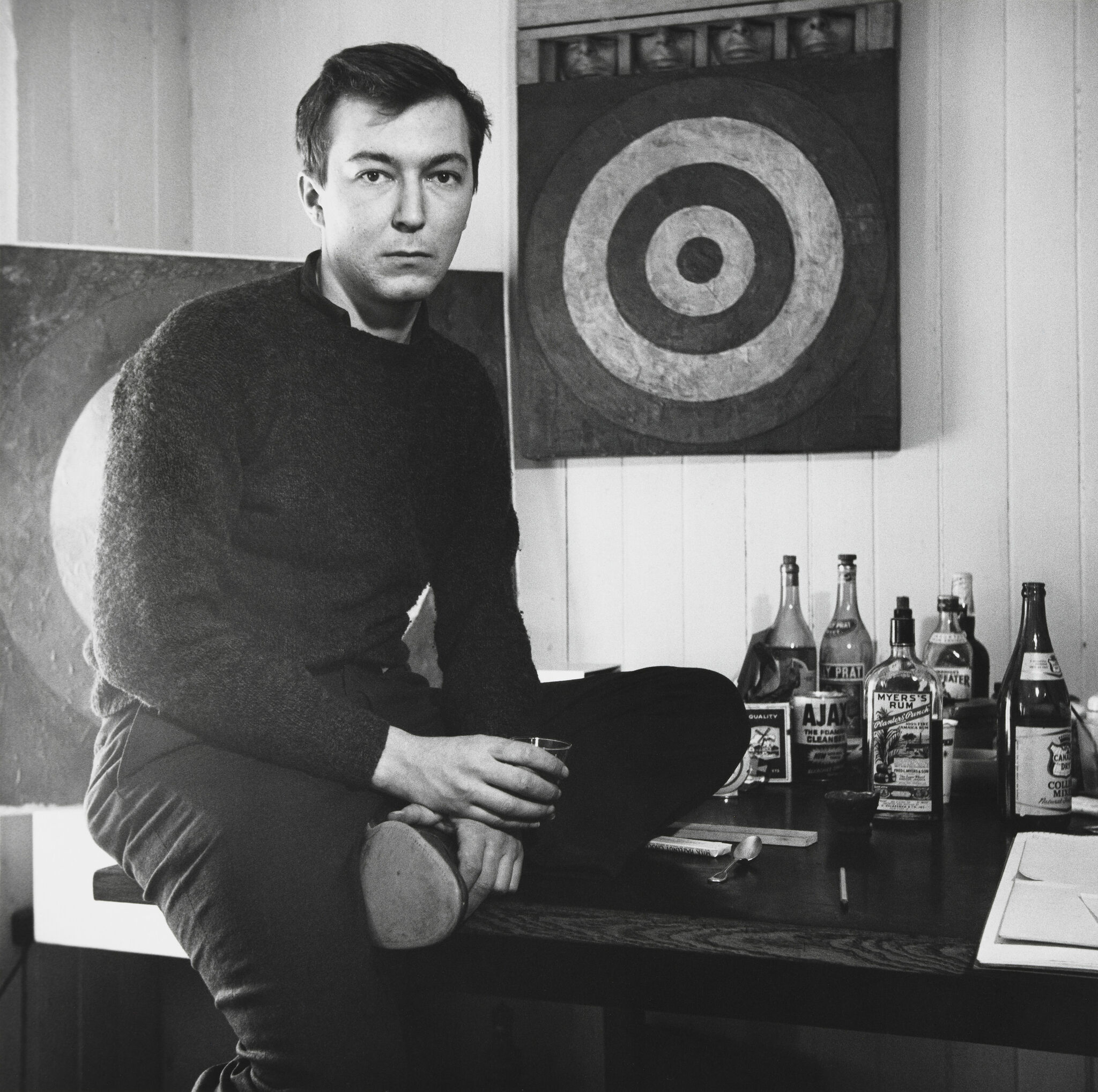Jasper Johns: Mind/Mirror
Sept 29, 2021–Feb 13, 2022
Jasper Johns’s groundbreaking work sent shock waves through the art world when it was first shown in the late 1950s, and he has continued to challenge new audiences—and himself—over a career spanning more than sixty-five years. He was born in 1930 in Augusta, Georgia; spent the majority of his adult life in New York; and today lives in Sharon, Connecticut, where, at the age of ninety-one, he remains active in his studio. Johns’s early use of common objects and motifs, language, and inventive materials and formats upended conventional notions of what an artwork is and can be. His profoundly generative practice helped spark movements including Pop art, Minimalism, and Conceptualism, among others, and has inspired successive generations of artists to this day.
Jasper Johns: Mind/Mirror is the most comprehensive retrospective ever devoted to Johns’s art. Featuring his most iconic works along with many others shown for the first time, it comprises a broad range of paintings, drawings, prints, and sculptures from 1954 to today across two sites. Conceived as a whole but displayed in two distinct parts, the exhibition appears simultaneously here at the Whitney and at the Philadelphia Museum of Art, two institutions with which Johns has had long-standing relationships. This unique dual structure draws on the artist’s lifelong fascination with mirroring and doubles, so that each half of the exhibition echoes and reflects the other. Organized in largely chronological order, the retrospective presents pairs of related galleries—one in each city—that offer varied perspectives on the artist’s turns of mind. Individually, each gallery focuses on a particular aspect of Johns’s thought and work through the lens of different themes, processes, images, mediums, and even emotional states. Taken together, they provide an immersive exploration of the many phases, treasures, and mysteries of a radical, enduring, and still-evolving career.
This exhibition is organized by the Whitney Museum of American Art and the Philadelphia Museum of Art.
The organizing curators are Carlos Basualdo, Keith L. and Katherine Sachs Senior Curator of Contemporary Art, Philadelphia Museum of Art, and Scott Rothkopf, Senior Deputy Director and Nancy and Steve Crown Family Chief Curator, Whitney Museum of American Art, New York, with Sarah B. Vogelman, Exhibition Assistant, in Philadelphia, and Lauren Young, Curatorial Assistant, in New York.
Jasper Johns: Mind/Mirror is organized by the Whitney Museum of American Art and the Philadelphia Museum of Art.
Jasper Johns: Mind/Mirror is presented by
Leonard and Judy Lauder
Leadership support is provided by
Kenneth C. Griffin
Susan and John Hess
Bank of America is the National Sponsor

In New York, this exhibition is sponsored by

Generous support is provided by Judy Hart Angelo; Neil G. Bluhm; Matthew Marks; and Kevin and Rosemary McNeely, Manitou Fund.
Major support is provided by the Barbara Haskell American Fellows Legacy Fund; The Brown Foundation, Inc., of Houston; Nancy and Steve Crown; Anne and Joel Ehrenkranz; Ellsworth Kelly Foundation and Jack Shear; Agnes Gund; Kristen and Alexander Klabin; Helen and Charles Schwab; the Whitney’s National Committee; and an anonymous donor.
Significant support is provided by Constance R. Caplan, Marguerite Steed Hoffman and Tom Lentz, the Jon and Mary Shirley Foundation, Sueyun and Gene Locks, Susan and Larry Marx, Marsha and Jeffrey Perelman, Donna Perret Rosen and Benjamin M. Rosen, The Robert Lehman Foundation, and Stefan T. Edlis and H. Gael Neeson Foundation.
Additional support is provided by Aaron and Leslee Cowen, Kathy and Richard Fuld, Johanna and Leslie Garfield, Ashley Leeds and Christopher Harland, Mrs. Ronnie F. Heyman, Sheila and Bill Lambert, Barbara and Richard Lane, Margo Leavin, Janie C. Lee, Richard and Nancy Lubin, Martin Z. Margulies, the National Endowment for the Arts, Monique and Gregg Seibert, Norman Selby and Melissa Vail Selby, and Gloria H. Spivak.

This exhibition is supported by an indemnity from the Federal Council on the Arts and the Humanities.
The opening dinner is sponsored by Christie’s

New York magazine is the exclusive media sponsor.
Jasper Johns and the Whitney
13
Jasper Johns has a long and close history with the Whitney, which was founded in 1930, the year he was born. He is one of the only artists alive to have visited all four of its locations: its original home in Greenwich Village, its sites in Midtown and on Madison Avenue, and its current home on Gansevoort Street. He first attended the Museum as a teenager in 1949, when he encountered the art of Jackson Pollock and Isamu Noguchi. A decade later, he appeared in the 1959 Annual Exhibition of Contemporary American Painting, a survey of recent art that would later come to be known as the Whitney Biennial. Since then he has participated in more than sixty Whitney exhibitions, and the Museum has collected more than 220 of his works, dating from 1957 to today, many of which are on view in the current retrospective here and in Philadelphia.
This gallery presents a chronological selection of archival materials related to Johns’s relationship with the Whitney. The story it tells is as much about people as it is about an institution. They include the curators, writers, patrons, and members of the staff and public who have collected, exhibited, studied, cared for, and viewed Johns’s work over the past sixty years. Rather than providing a comprehensive history, the artworks and ephemera on view here offer glimpses of an intimate, multifaceted, and ongoing rapport between the artist and Museum.
Although Johns first exhibited his work at the Whitney in 1959, it was not until 1966 that it entered the collection with the purchase of Studio (1964). As was customary at the time—and remains so today—he provided technical information about the painting for the Museum’s records. The acquisition was soon followed by Johns’s gift of ten of his prints, which formed the basis for the Whitney’s now extensive holdings of over 190 of his graphic works. In 1969 Johns, along with many artists in the Museum’s Annual Exhibition of Contemporary American Painting, requested that the Whitney offer free admission one day per week. By doing so, he joined a long lineage of artists demanding changes to the Museum’s policies, which continues to this day.
In 1975, the Whitney’s then director, Thomas Armstrong, invited Johns to present his first New York museum survey since one staged in 1964 at the Jewish Museum. The exhibition was curated by Johns’s friend David Whitney at the Museum’s location on Madison Avenue. Michael Crichton, now best known for science fiction novels including The Andromeda Strain (1969) and Jurassic Park (1990), authored the catalogue, the cover of which Johns designed along with the show’s poster. Fellow artists Robert Rauschenberg and Andy Warhol lent works from their personal collections to the retrospective, which Newsweek heralded on its cover by declaring Johns “Super Artist.”
In 1980, the Whitney purchased Johns’s iconic painting Three Flags (1958) from the collection of Burton and Emily Tremaine through New York’s Pace Gallery. The price of one million dollars was thought to be the highest sum ever paid for the work of a living artist, garnering a front-page article in The New York Times. The Whitney celebrated its acquisition by presenting the painting in a one-week show in its lobby gallery and has since exhibited the work in dozens of collection displays, including the inaugural exhibition in its current building on Gansevoort Street.
Johns’s relationship with the Whitney deepened throughout the 1980s and 1990s, as the Museum collected and presented more of his work in landmark exhibitions of his drawings and Savarin monotypes. He designed a poster commemorating the Museum’s fiftieth anniversary in 1980 at the invitation of its then director, Thomas Armstrong, and board of trustees president at the time, Flora Miller Biddle, granddaughter of founder Gertrude Vanderbilt Whitney. Their intimacy is evident in her daughter Fiona Donovan’s scrapbook, picturing an Easter egg hunt also attended by painter Cy Twombly at Mrs. Whitney’s former studio on Long Island. Trial proofs of the anniversary poster hang overhead, revealing the intricacy of Johns’s process, as well as his wit. The two flags feature forty-eight and fifty stars, the number of states, respectively, at the time of the Whitney’s founding and its fiftieth anniversary.
In the twenty-first century, Johns has continued to play an important role in the Whitney’s history. Three Flags (1958) graced the cover of the catalogue for the landmark exhibition The American Century: Art and Culture, 1900–2000, and he donated a new painting to a sale of works benefiting the construction of the Museum’s current home. Throughout this time, Leonard Lauder, now the chairman emeritus of the Whitney’s board of trustees, enhanced the collection with gifts of important examples of Johns’s work. When the present retrospective, originally intended to celebrate the artist’s ninetieth birthday, had to be postponed due to the COVID-19 pandemic, Lauder and the Whitney sent Johns a cake in the form of Painted Bronze (1960); the sculpture is a recent gift of Lauder’s to the Whitney’s collection.
Artists
Events
View all-
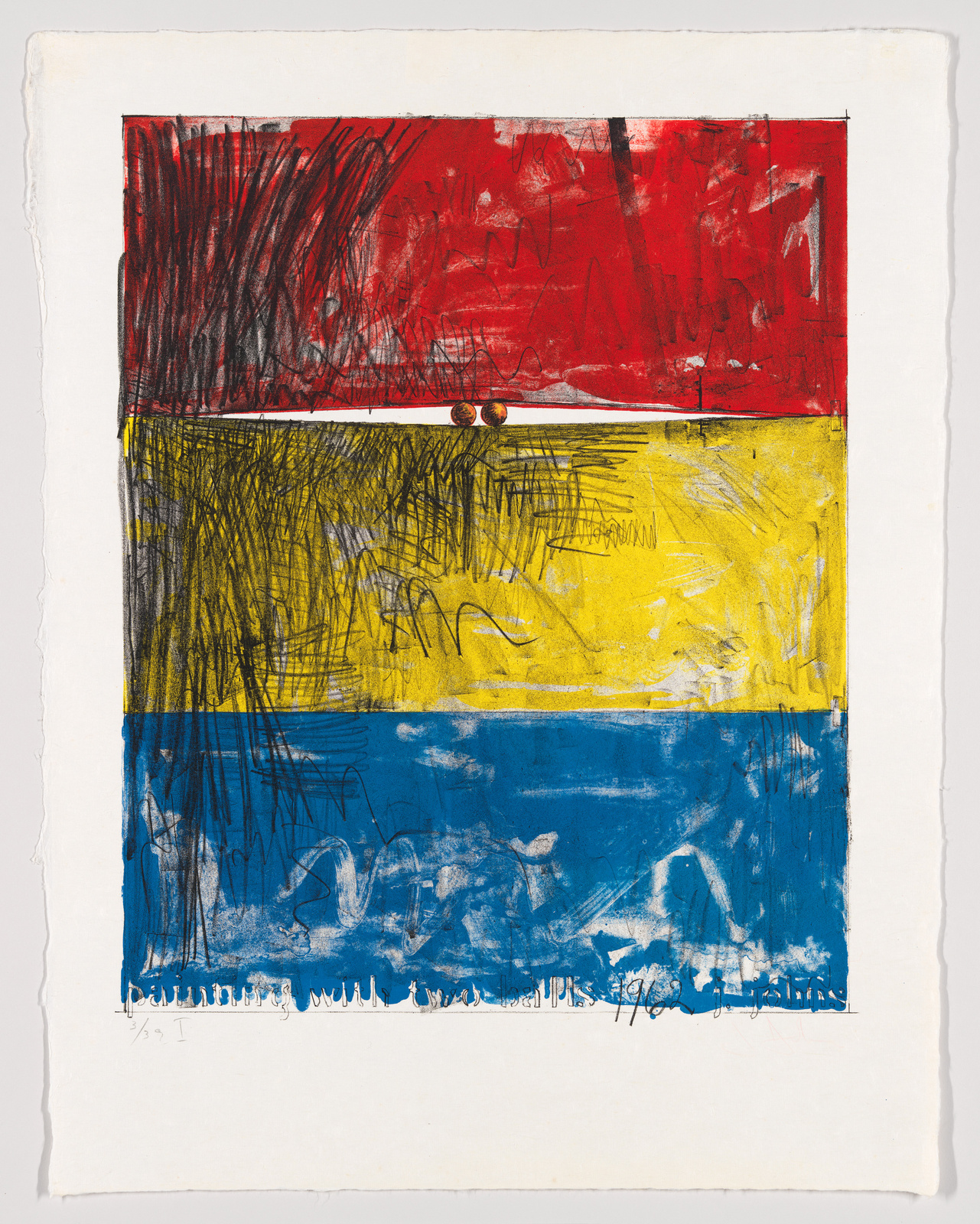
Open Studio From Home: Robert Blackburn Printmaking Workshop
Saturday, February 5, 2022
11 am–12 pm -
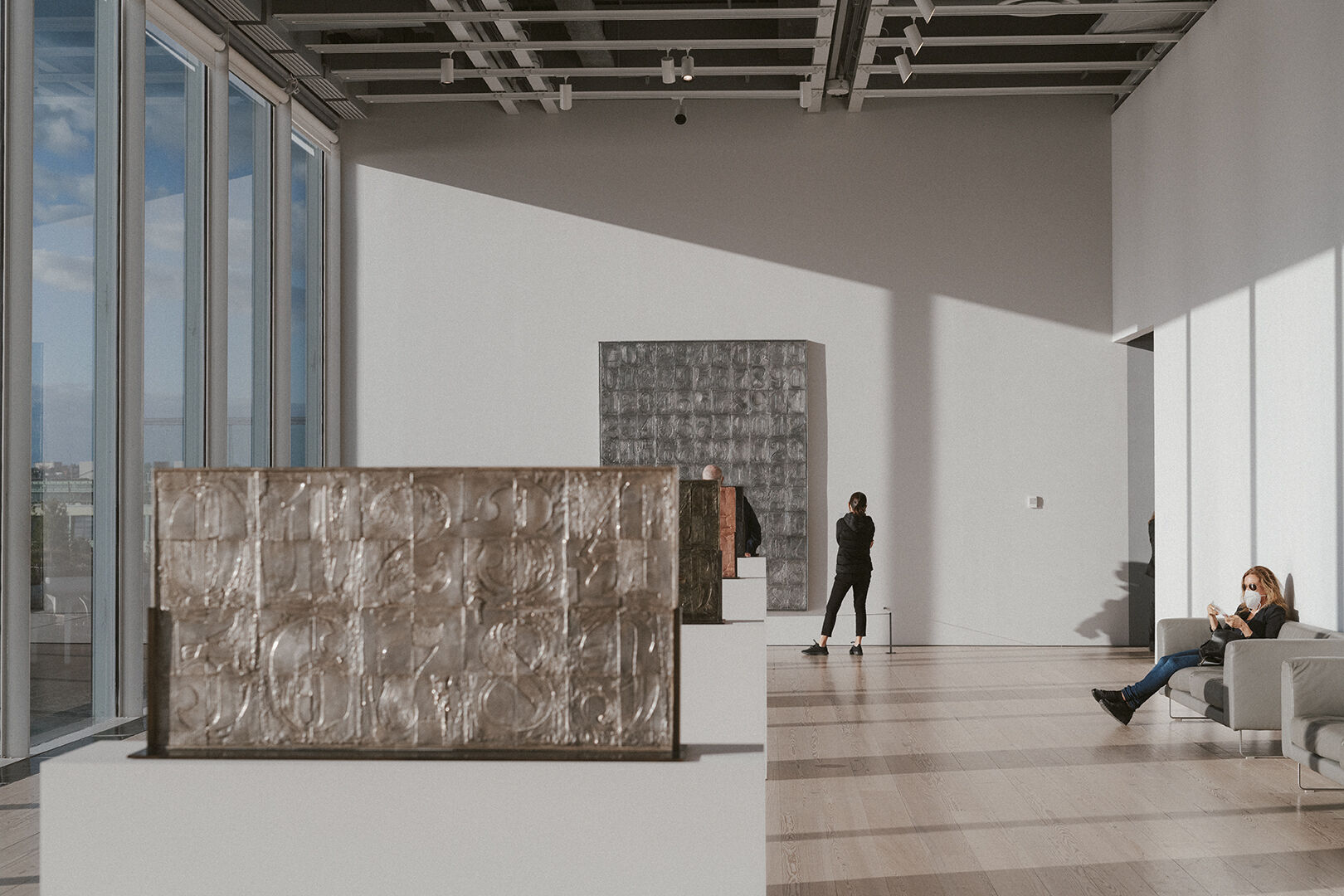
Weekend Member Mornings: Last Look at Jasper Johns: Mind/Mirror
Repeats
Saturday, February 5, 2022
10:30–11 am -
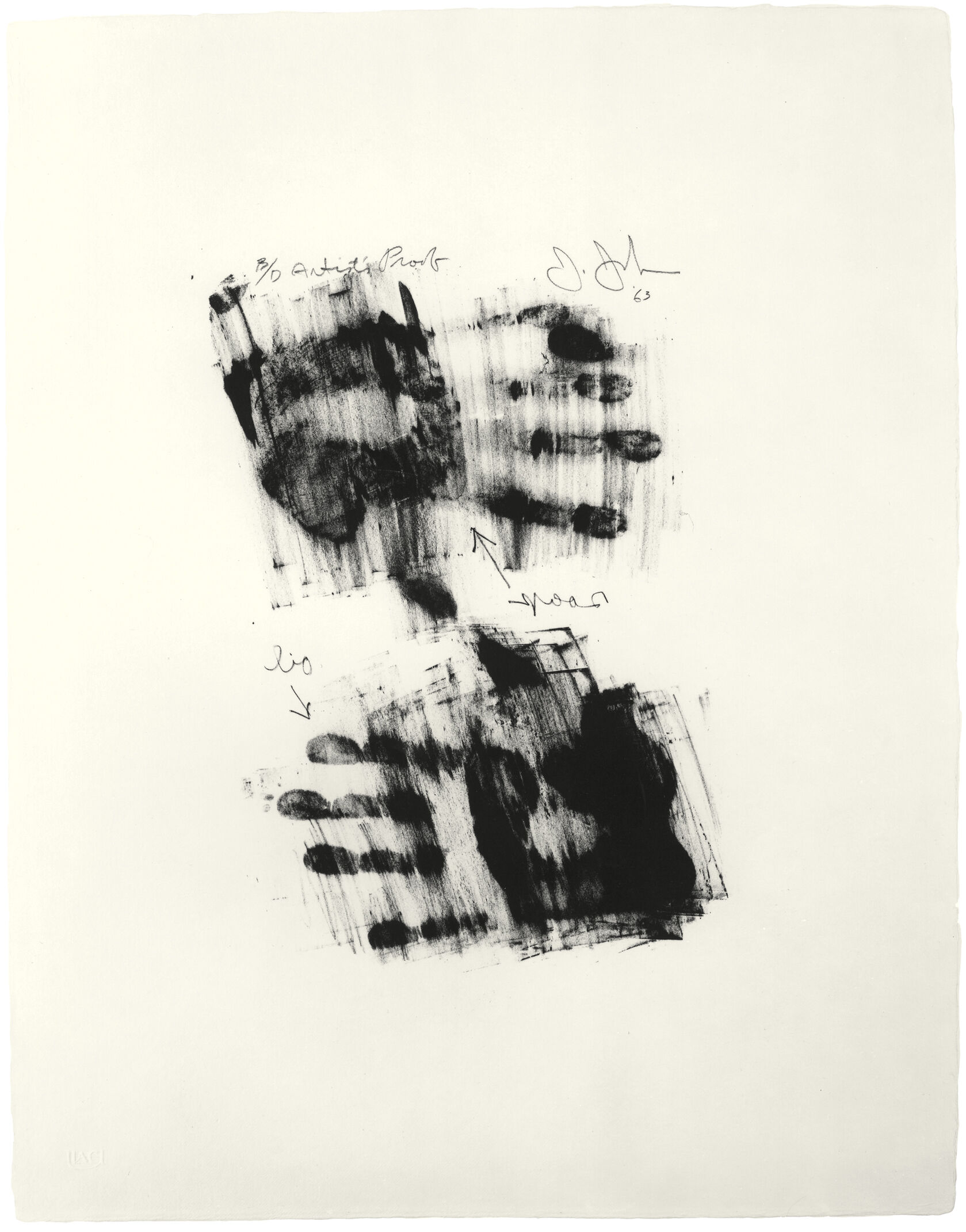
Print and Process After Johns
Thursday, January 27, 2022
6 pm -
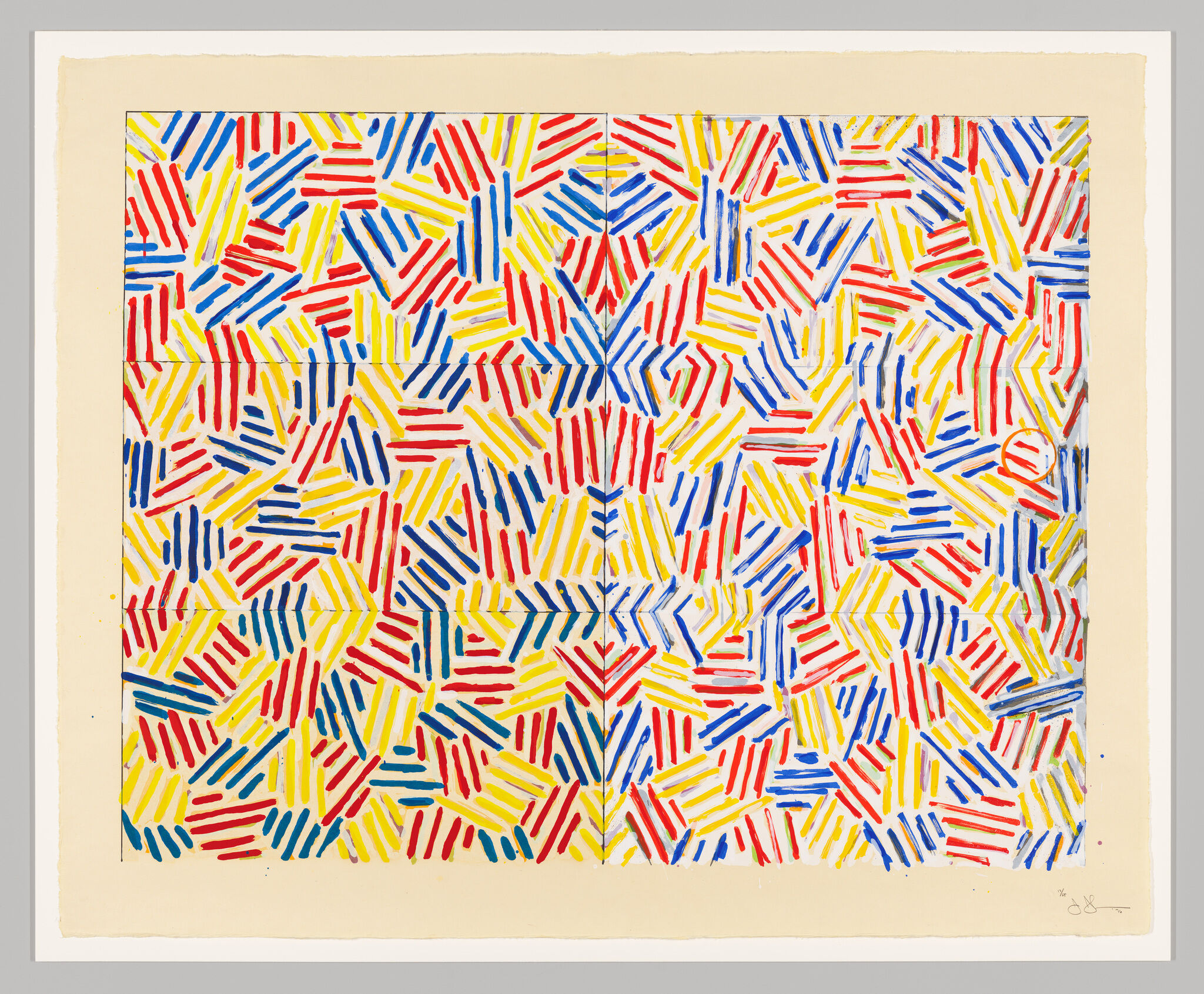 Mirroring Practice: Poets Respond to Jasper Johns
Mirroring Practice: Poets Respond to Jasper JohnsThursday, January 20, 2022
7 pm
Mobile guides
Hear from artists, curators, and scholars on selected works from the exhibition.
Exhibition Catalogue
Jasper Johns (b. 1930) is arguably the most influential artist living today. Over the past sixty-five years, he has produced a radical and varied body of work marked by constant reinvention. Inspired by the artist’s long-standing fascination with mirroring and doubles, this book provides an original and exciting perspective on Johns’s work and its continued relevance.
A diverse group of curators, academics, artists, and writers offer a series of essays—including many paired texts—that consider aspects of the artist’s work, such as recurring motifs, explorations of place, and use of a wide array of media. These include Carroll Dunham on dreams, Ruth Fine on monotypes and working proofs, Michio Hayashi on Japan, Terrance Hayes on flags, and Colm Toíbín on nightmares, among many others. The various themes are further explored in a series of in-depth plate sections that combine prints, drawings, paintings, and sculptures to draw new connections in Johns’s vast output.
Accompanying “mirroring” exhibitions held simultaneously at the Whitney Museum of American Art and the Philadelphia Museum of Art, this lavishly illustrated volume features a selection of rarely published works along with never-before-published archival content and is full of revelations that allow us to engage with and understand the artist’s rich and varied body of work in new and meaningful ways.
Buy now
Explore works from this exhibition
in the Whitney's collection
View 98 works
In the News
“The structure of the exhibition will open a window onto the beauty, meaning, and remarkable artistic order that organizes Johns’s work.” —ArtfixDaily
“The artist’s work has managed to speak both to and for the country’s consciousness for the last 60 years—and he’s not done yet.” —T Magazine
"[A]n absolute must-see"—Vogue
"It’s a broad and restless confrontation of the work of one of the country’s best-known artists . . . ." —Boston Globe
"This is the first genuine, must-see blockbuster exhibition to open since the pandemic began in 2019, and it might be an occasion for euphoria.” —Washington Post
"It’s a testimony to [Johns's] long, productive career that Jasper Johns: Mind/Mirror needs two museums . . . ." —Wall Street Journal
". . . a spectacular exhibition, spanning the artist's 65-year career and featuring many of his most iconic works as well as rare pieces on public view here for the first time."—Gothamist
"Mind/Mirror is a much-needed close-read, experimental new geography of this artist . . ."—New York Magazine
". . . a monumental retrospective [. . .] reveals an artist’s protean talent, changing perspectives and resiliency over six decades."—New York Times

